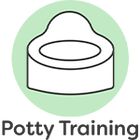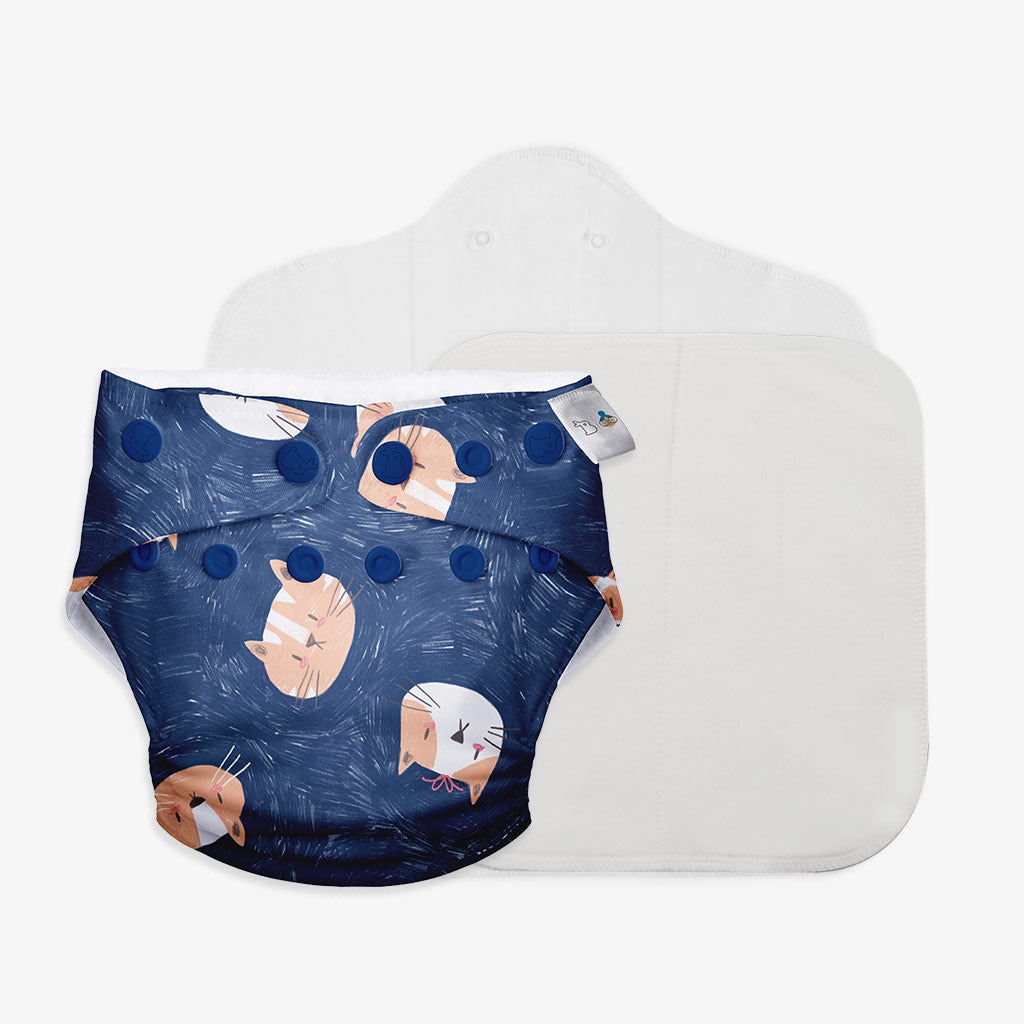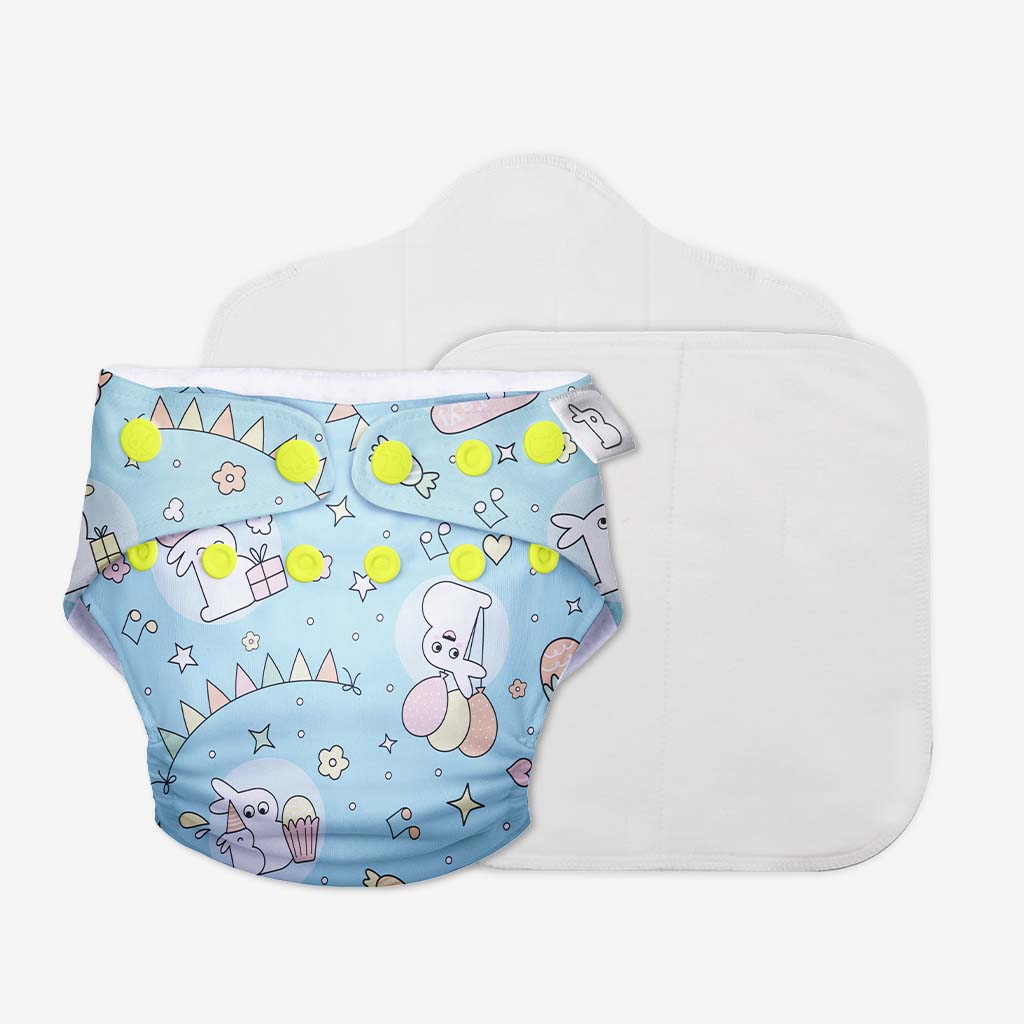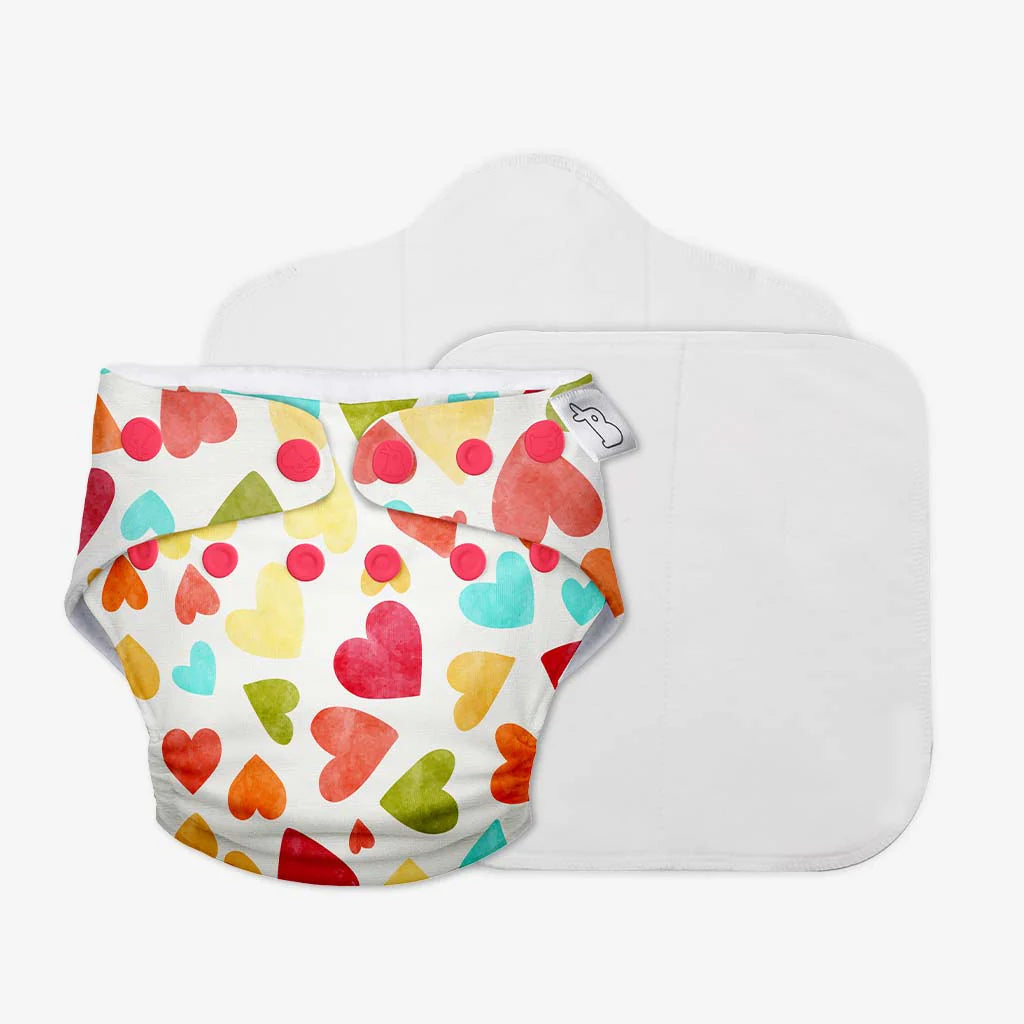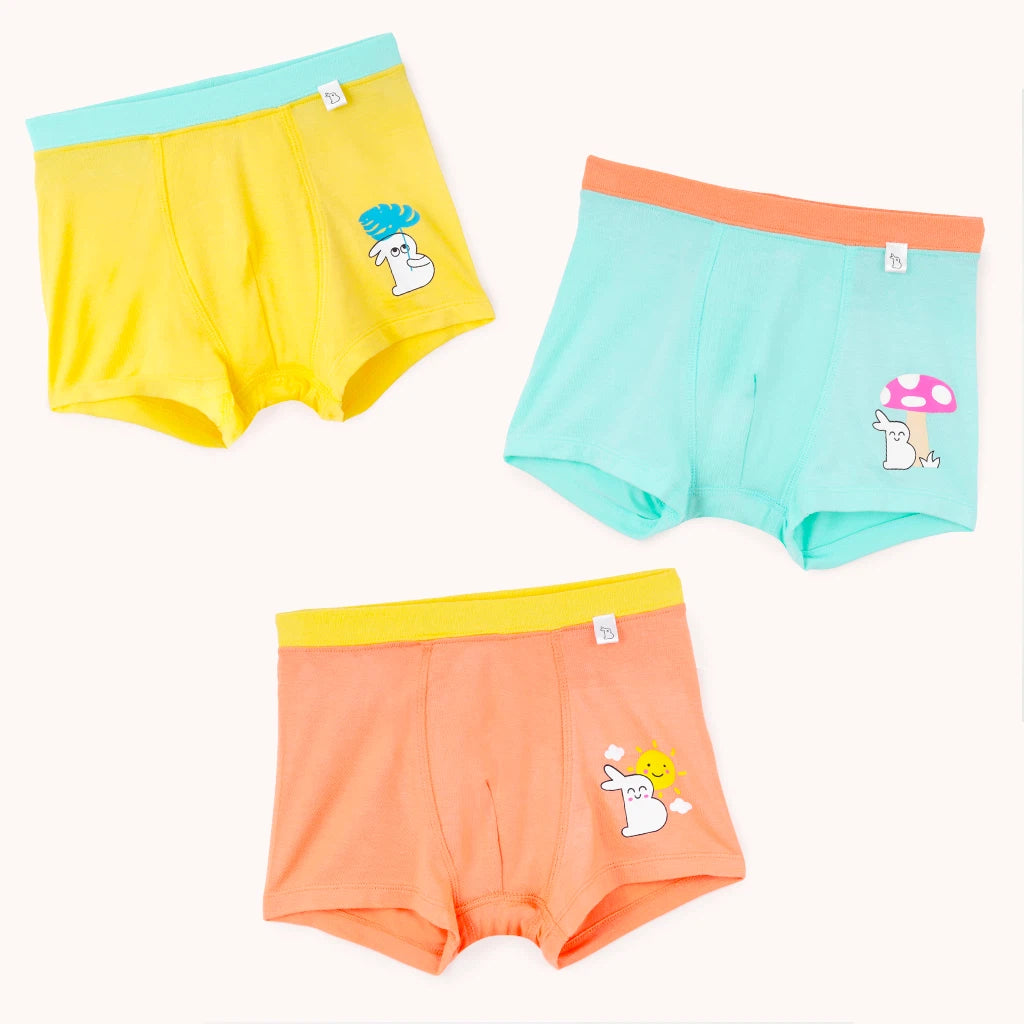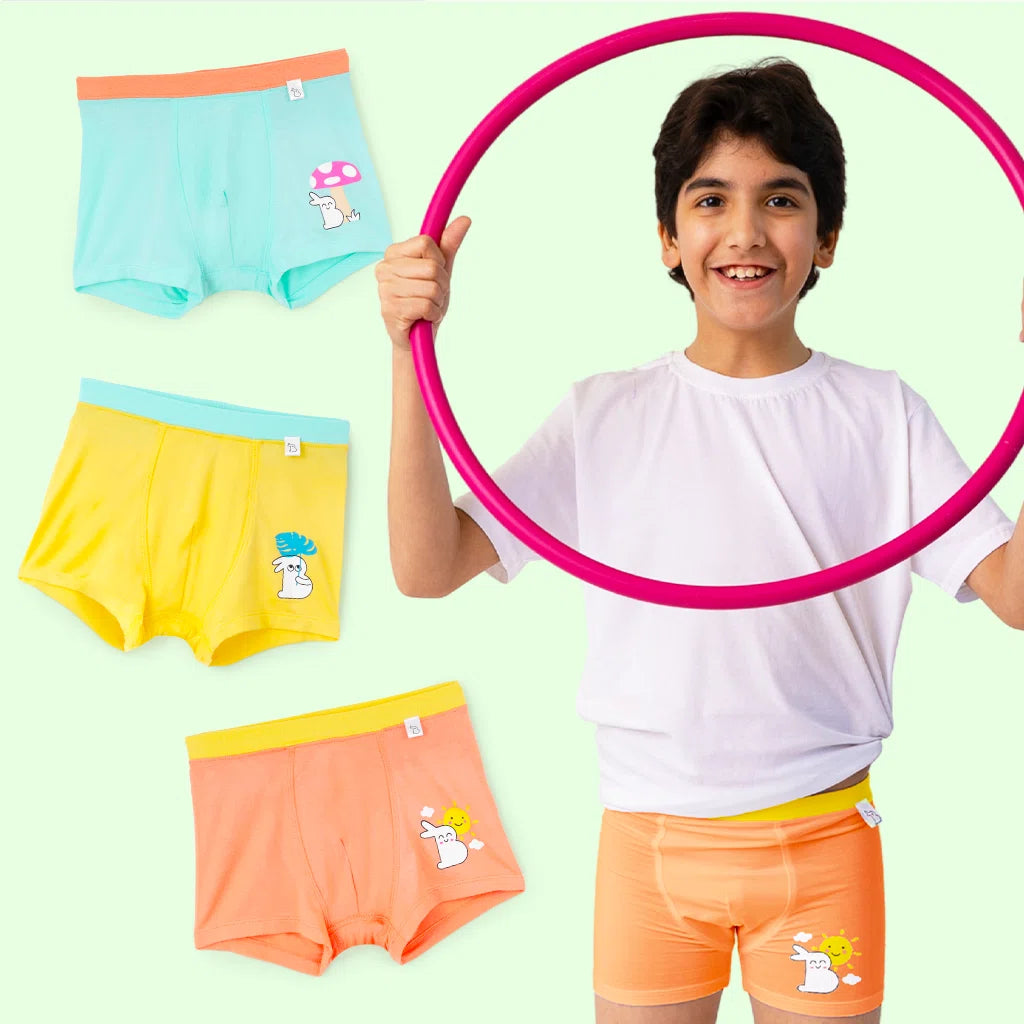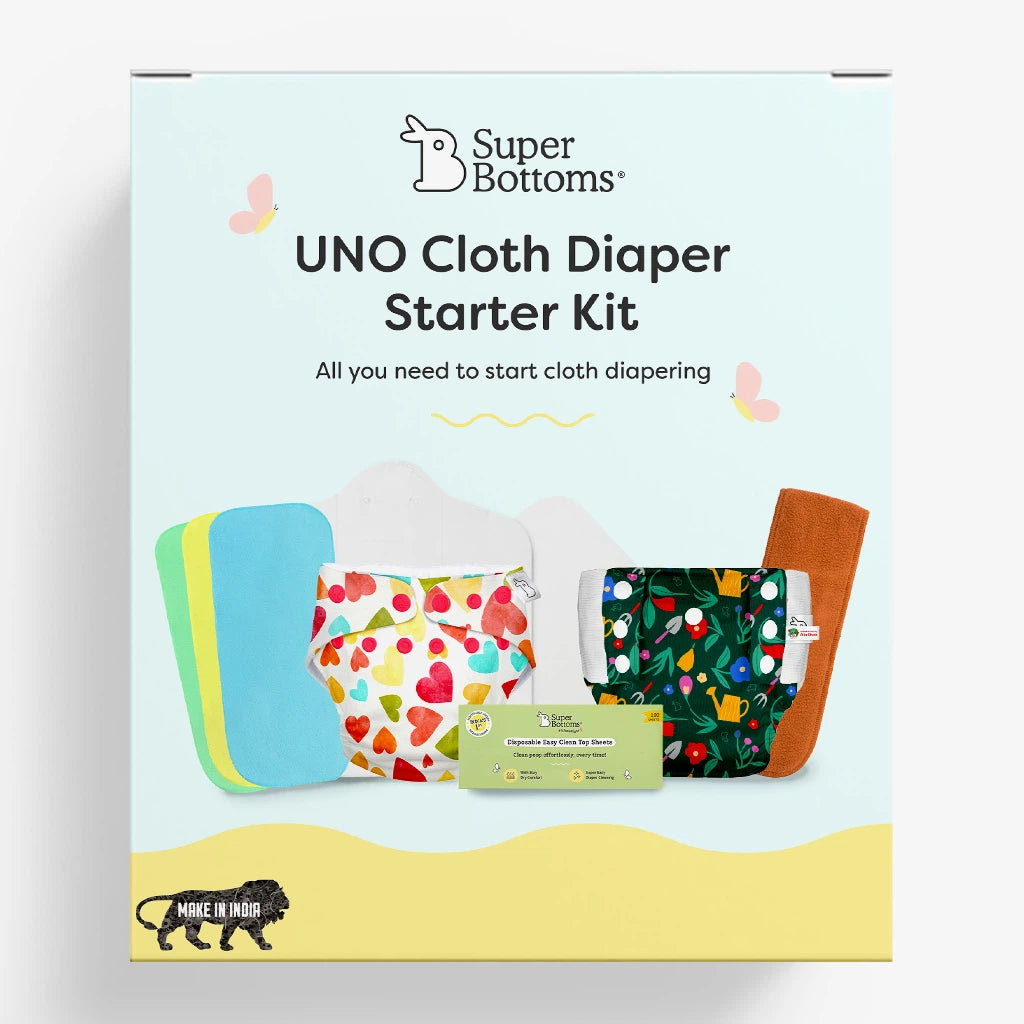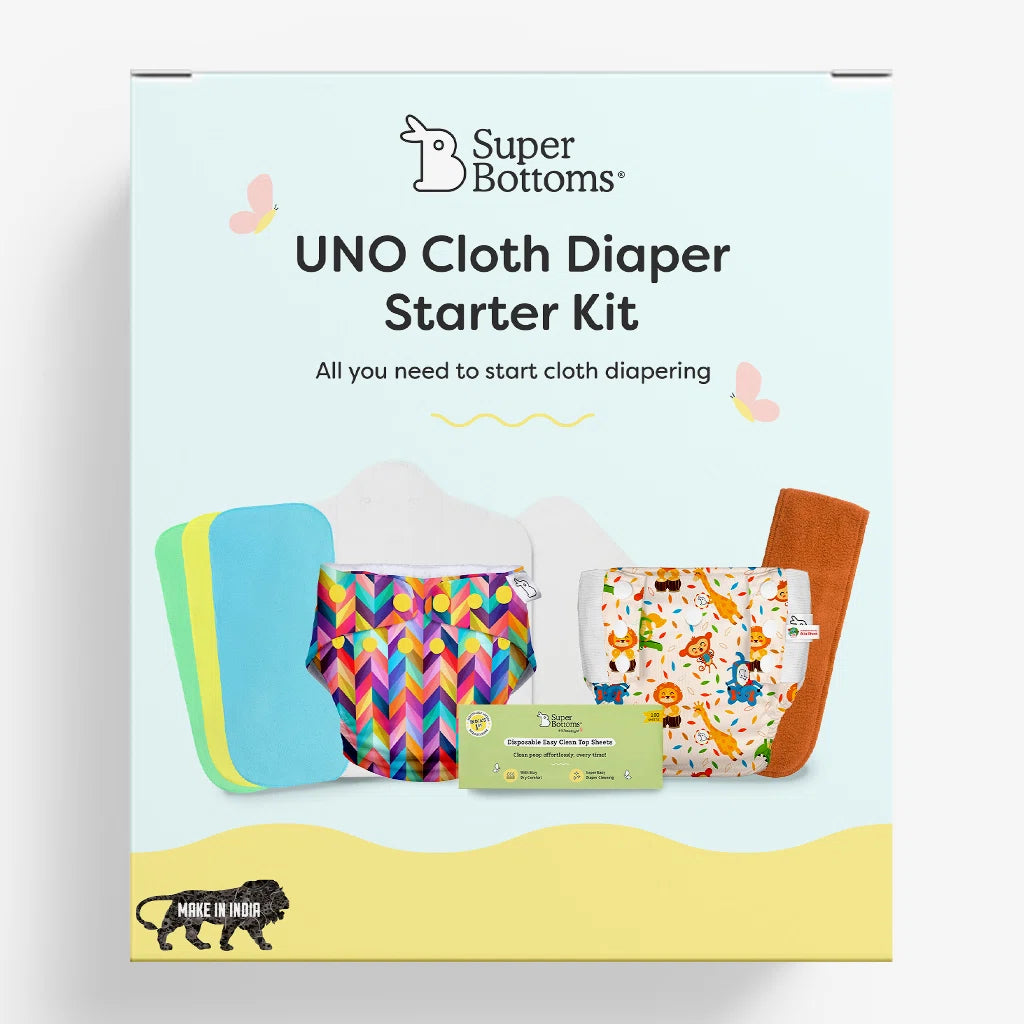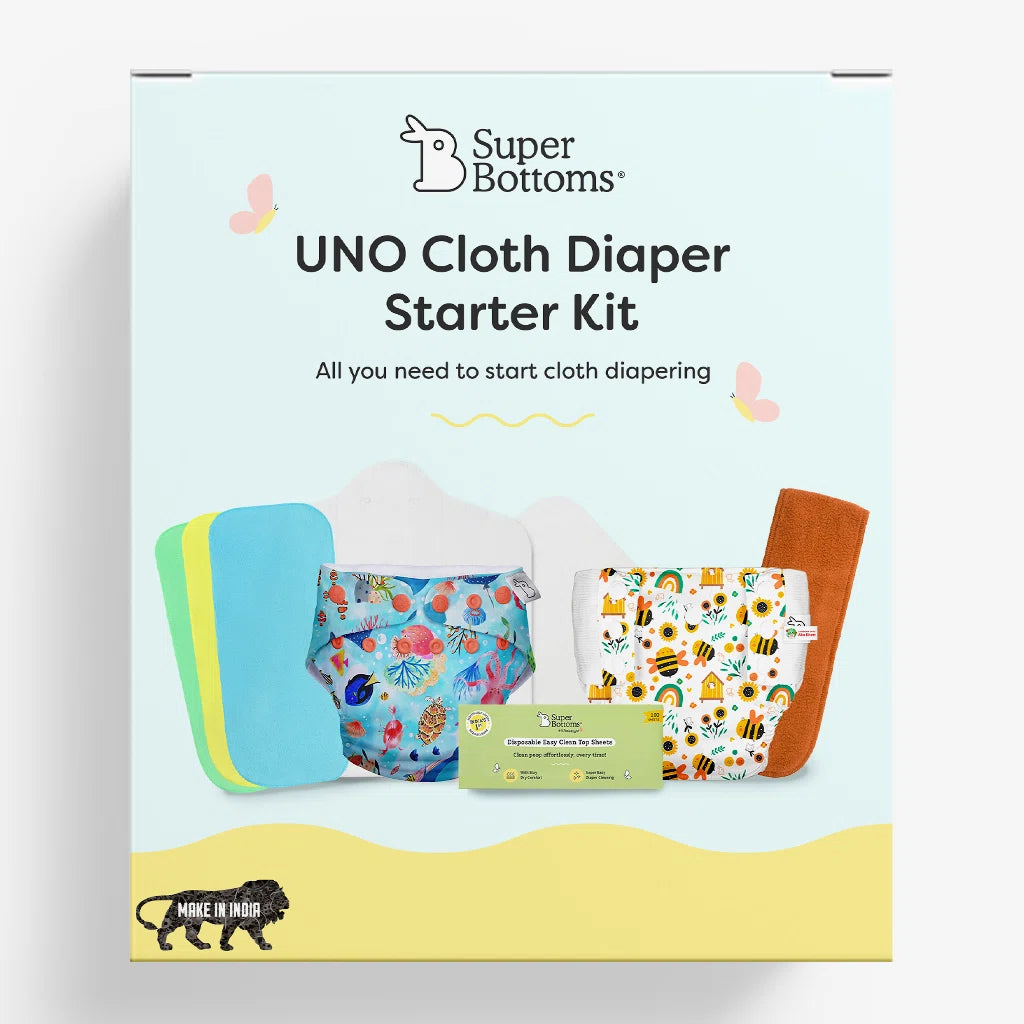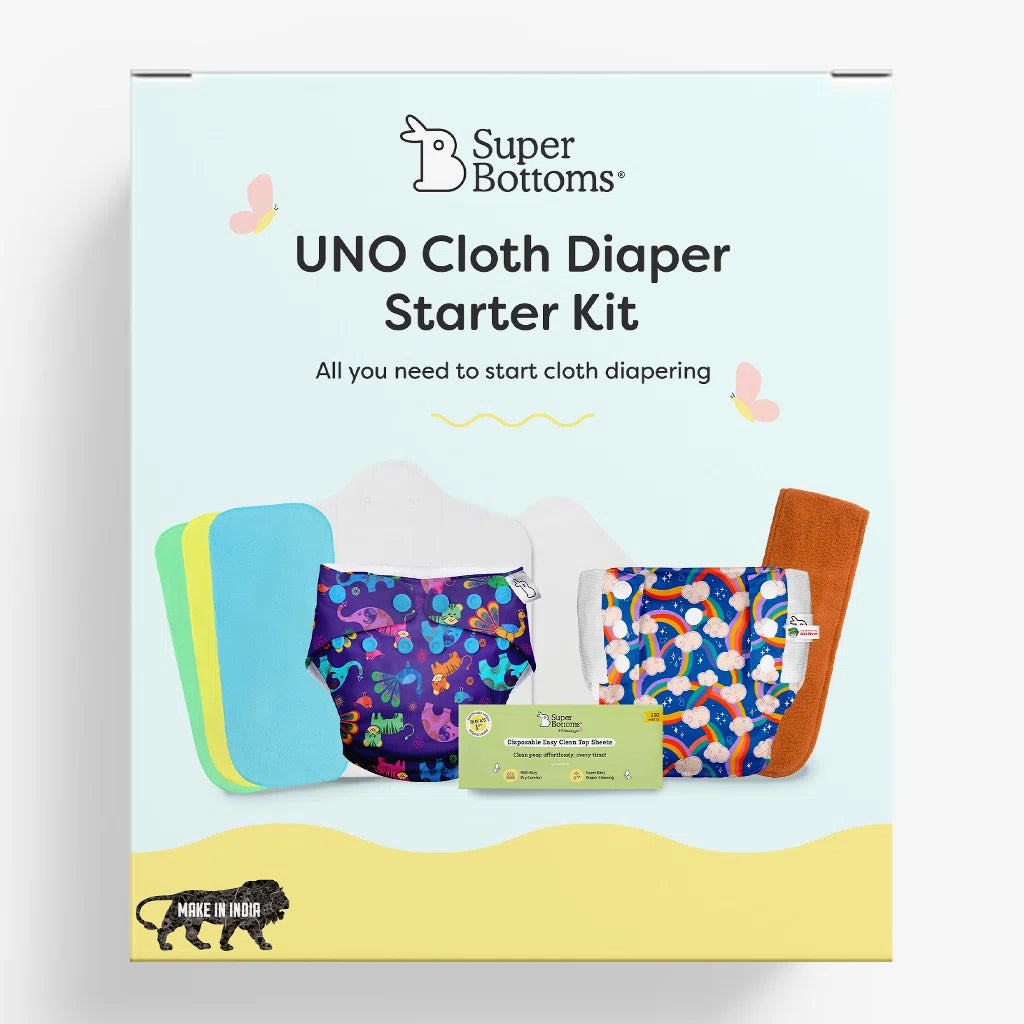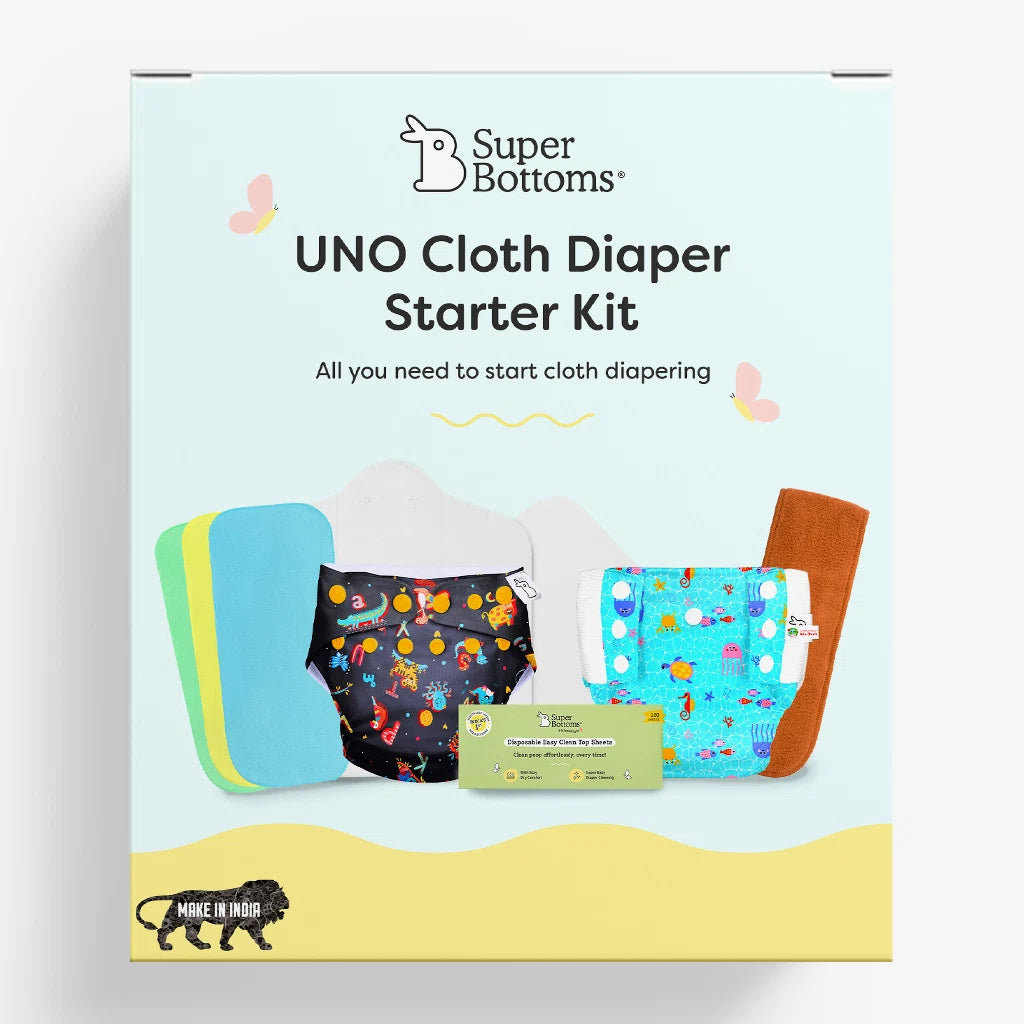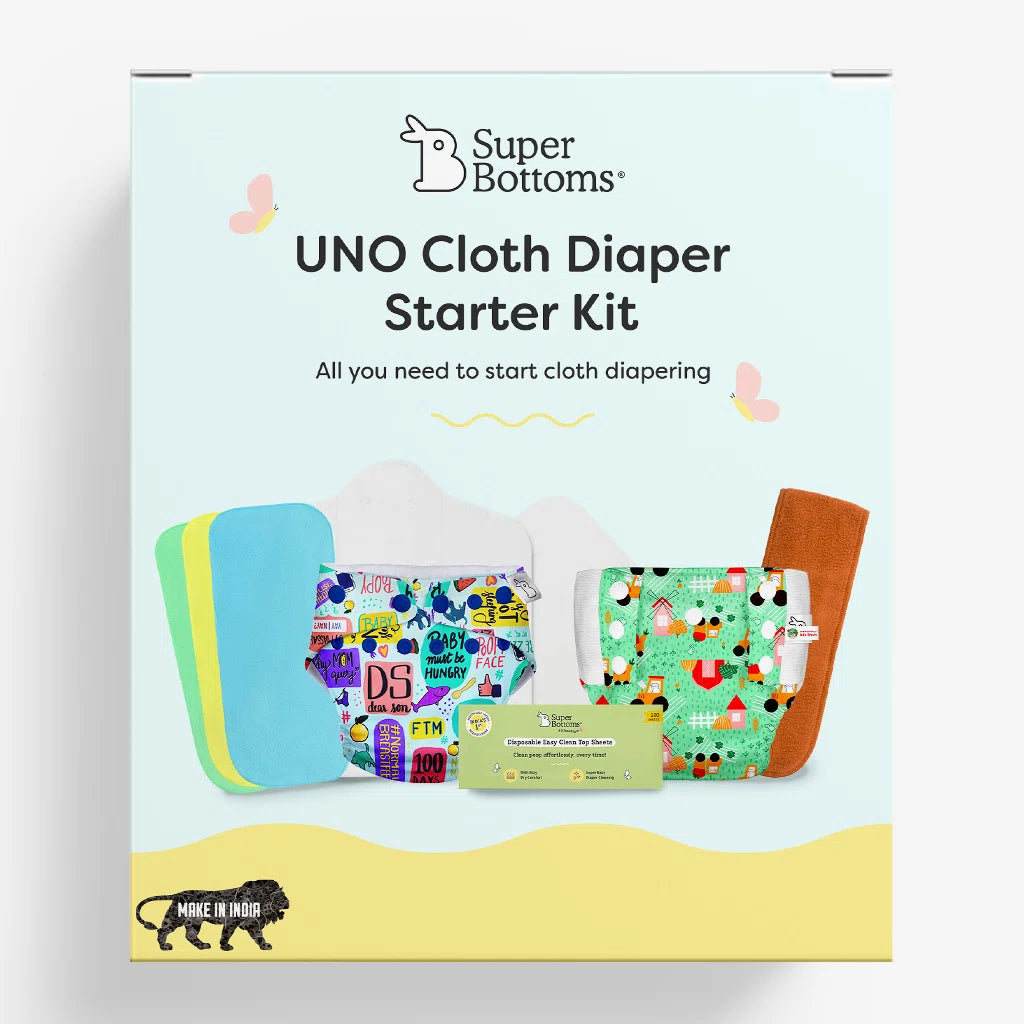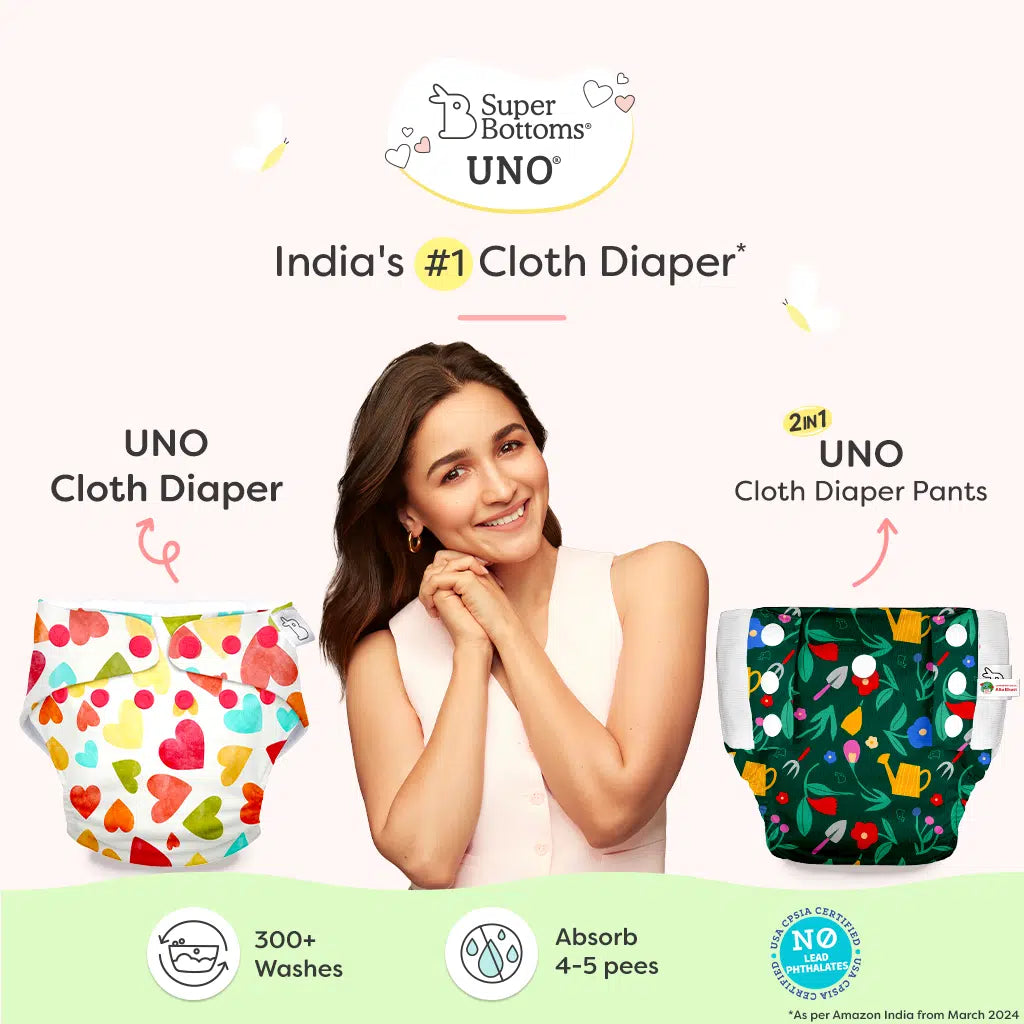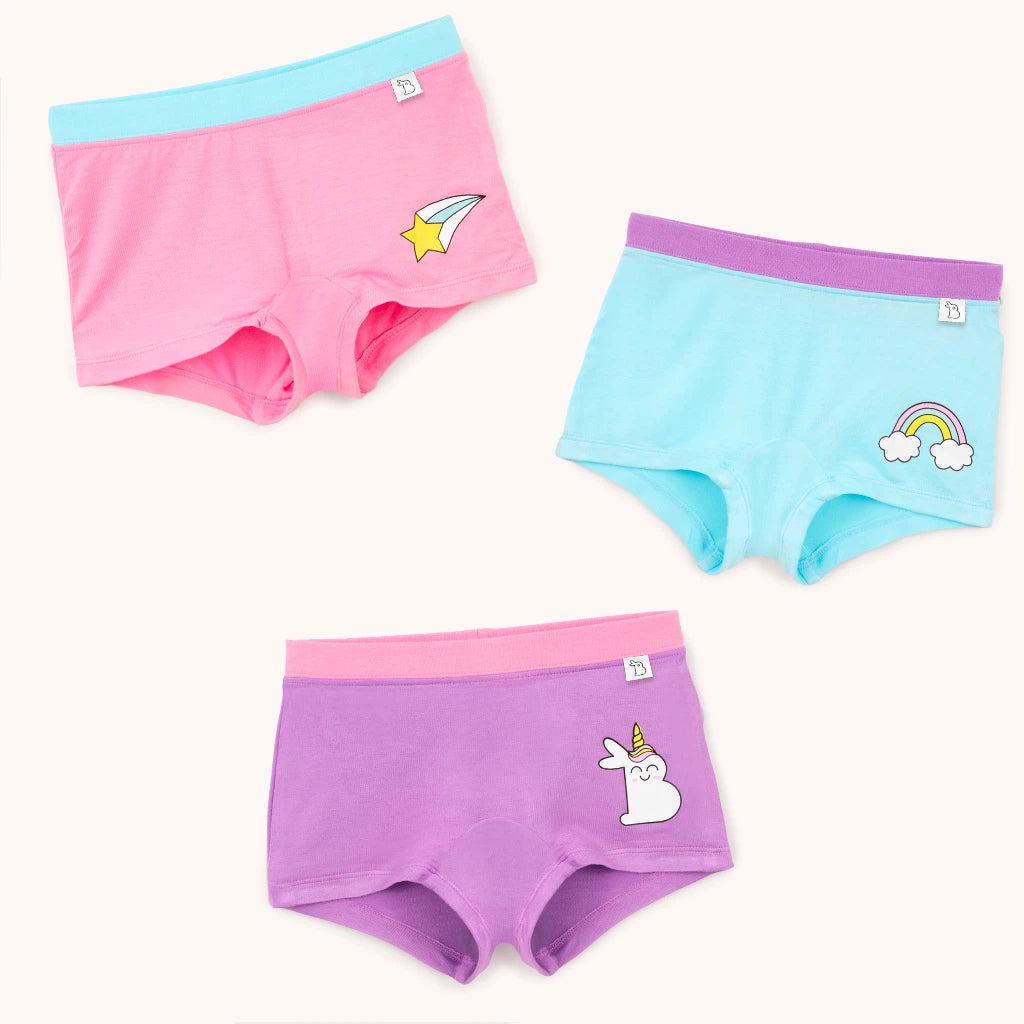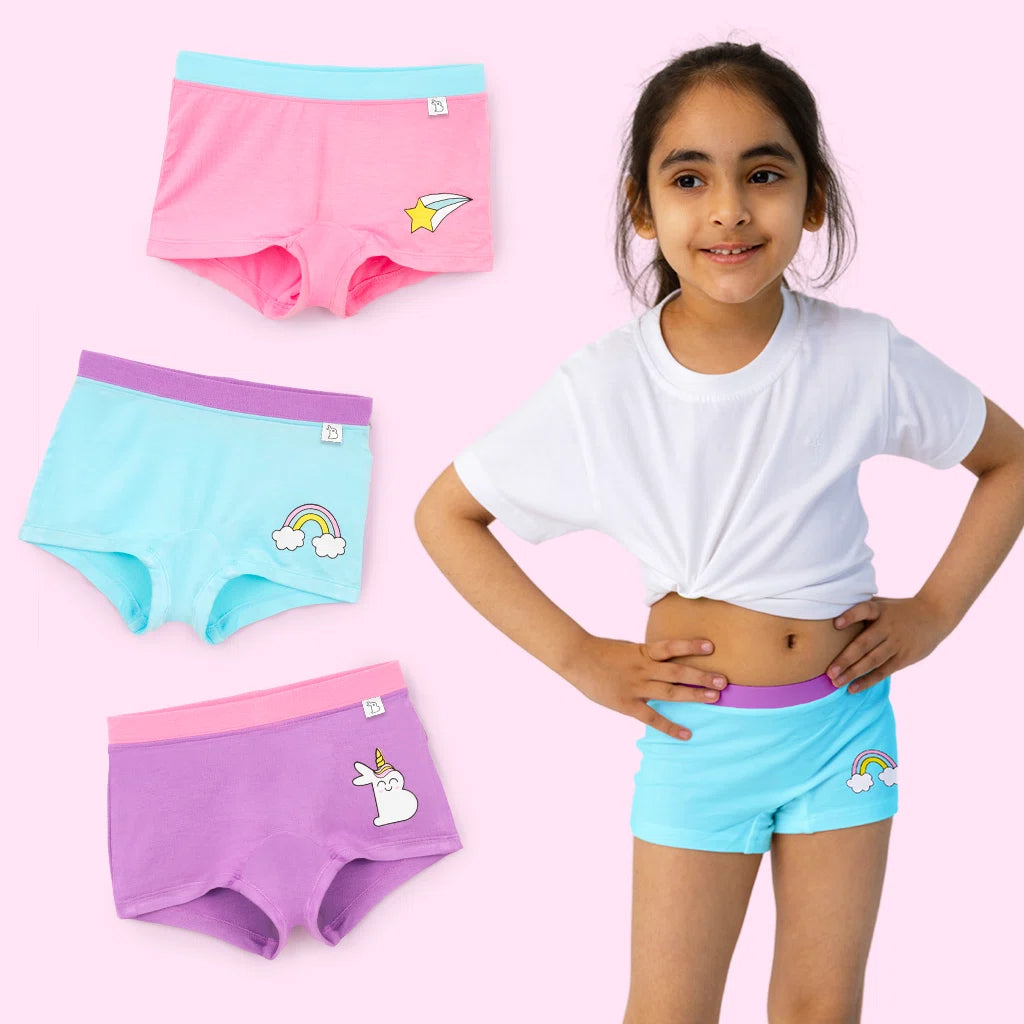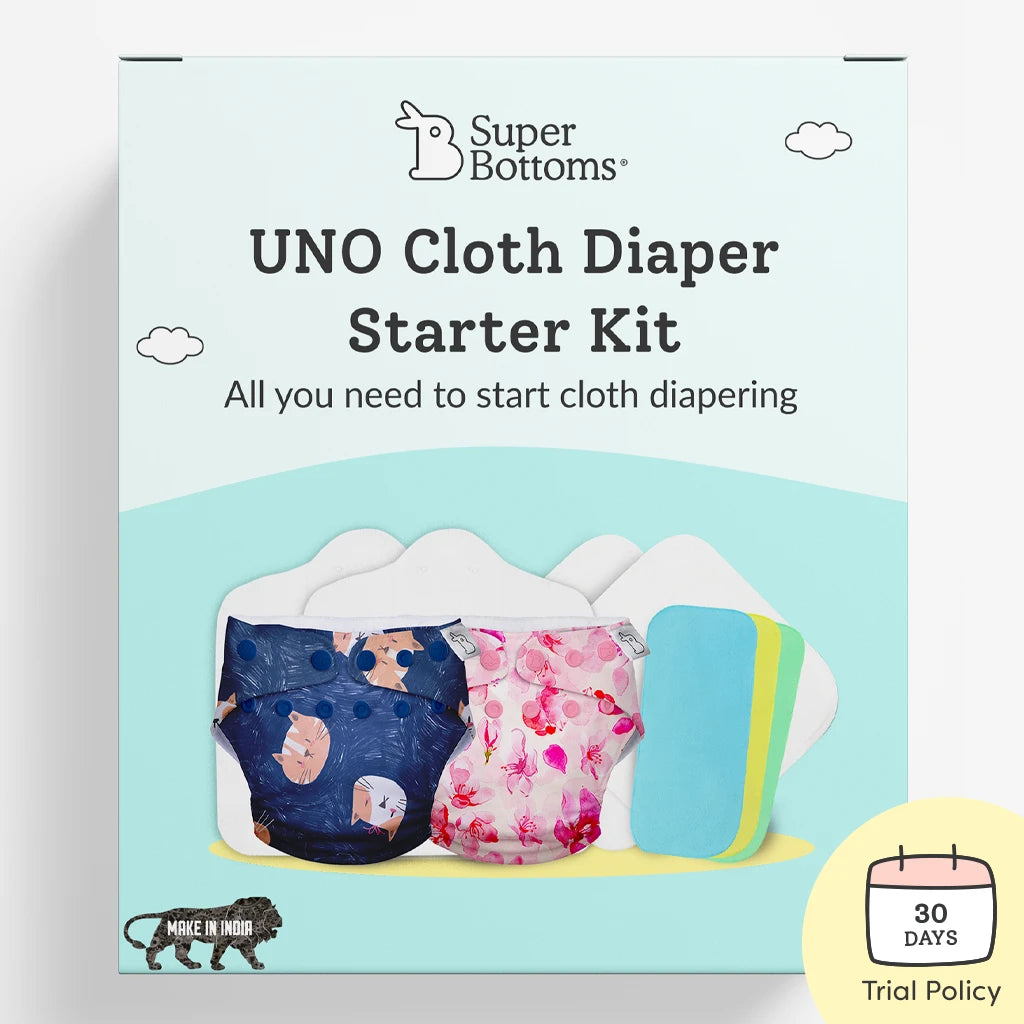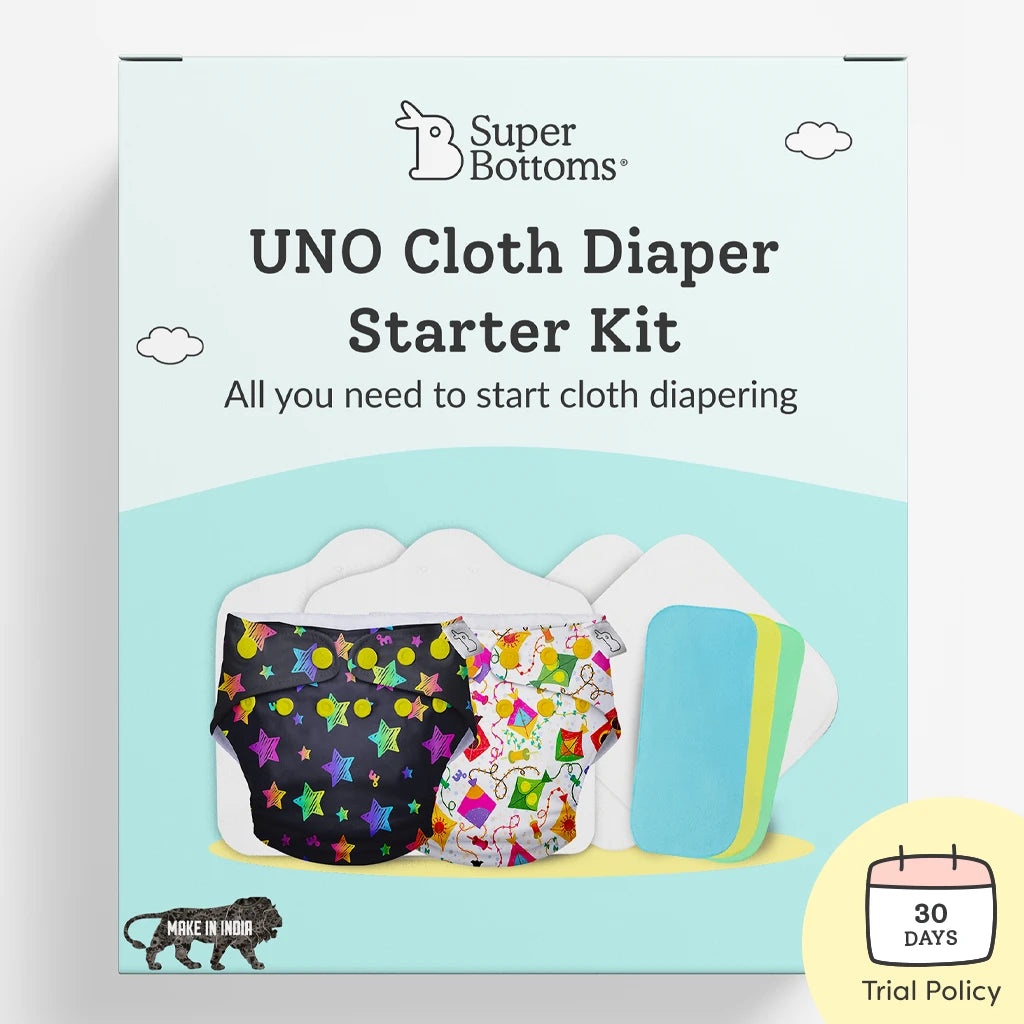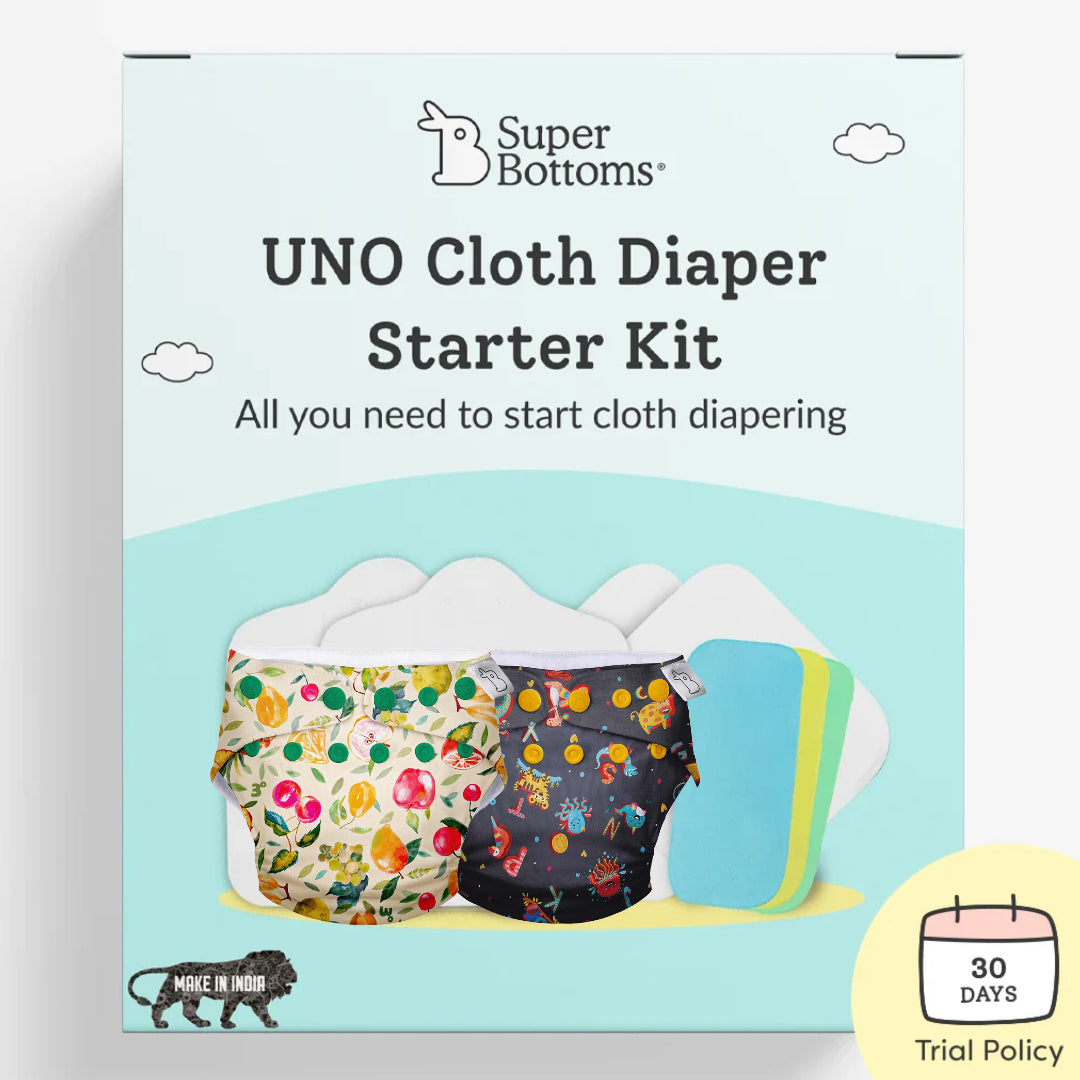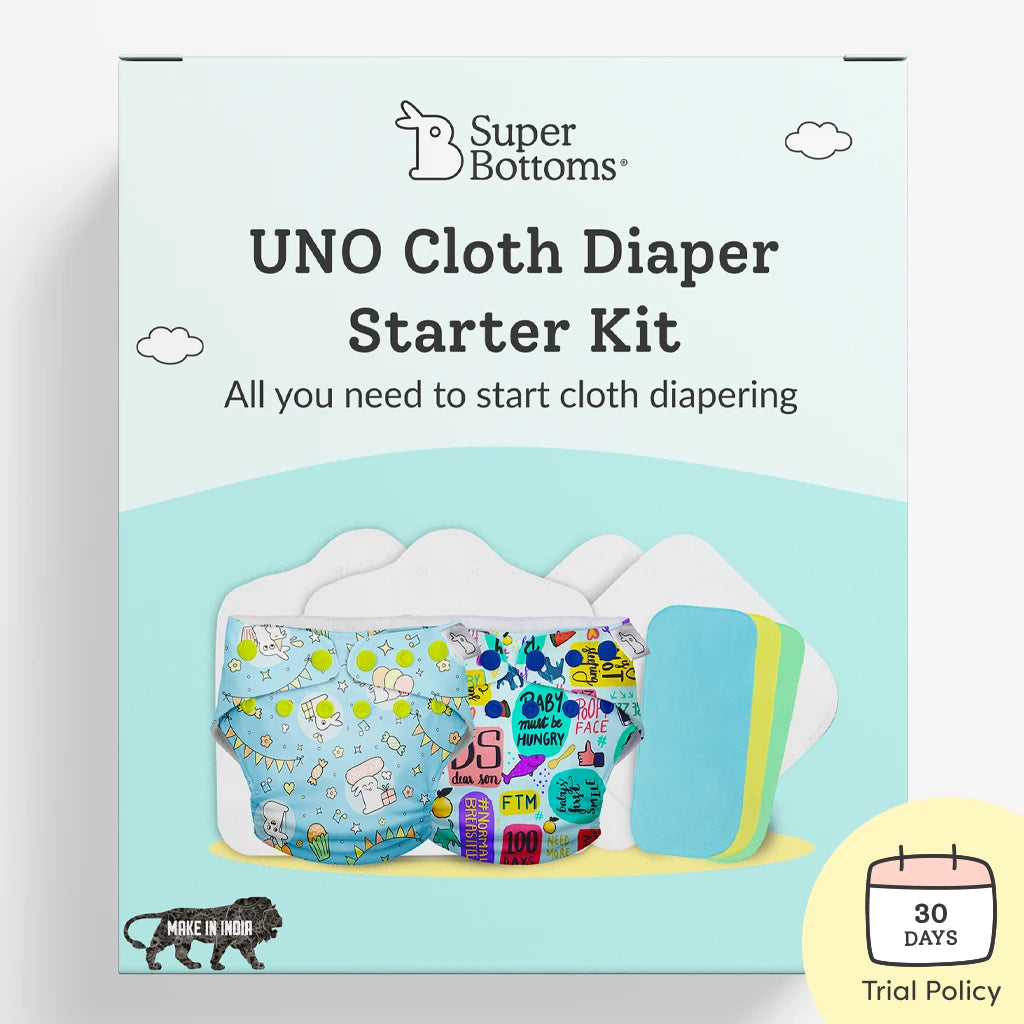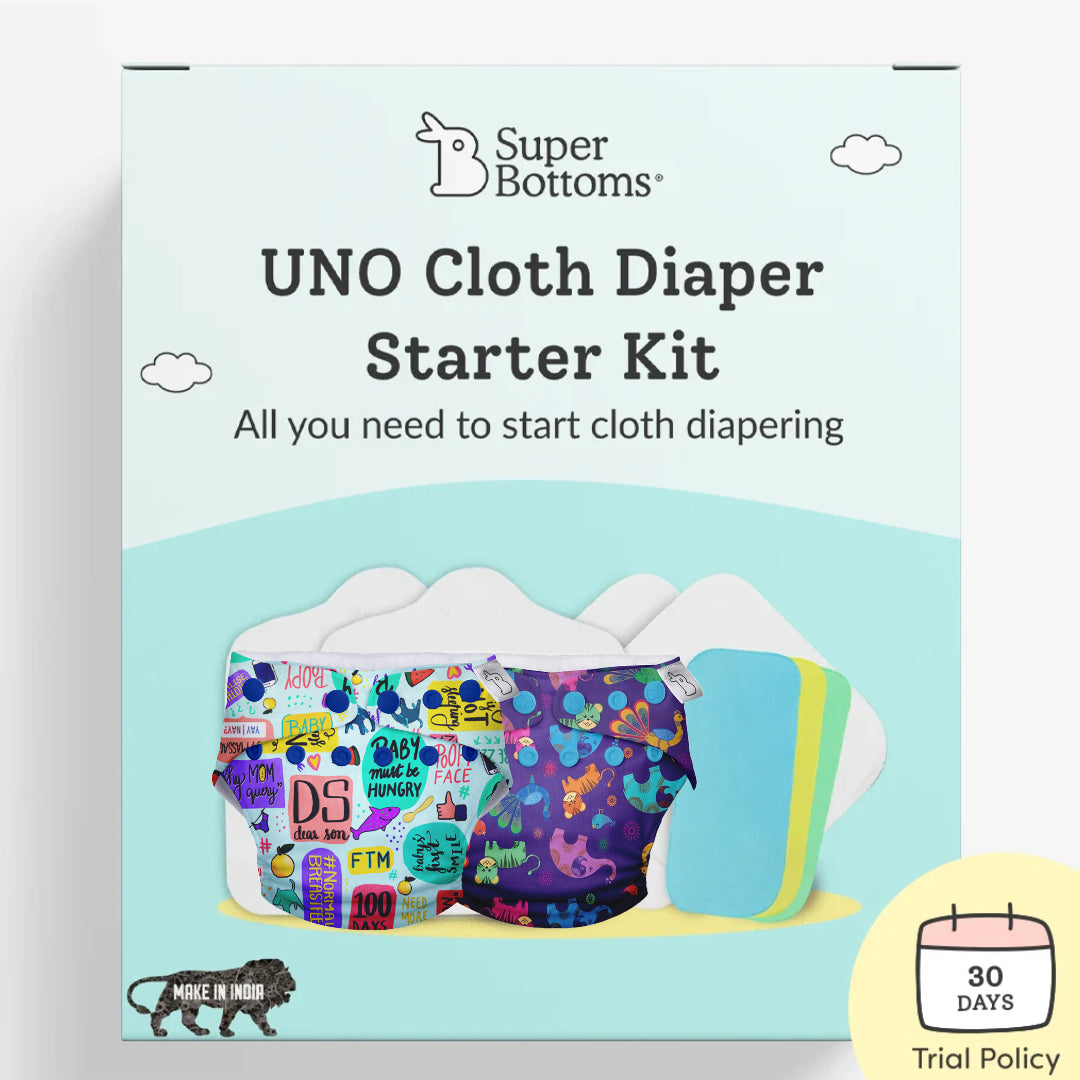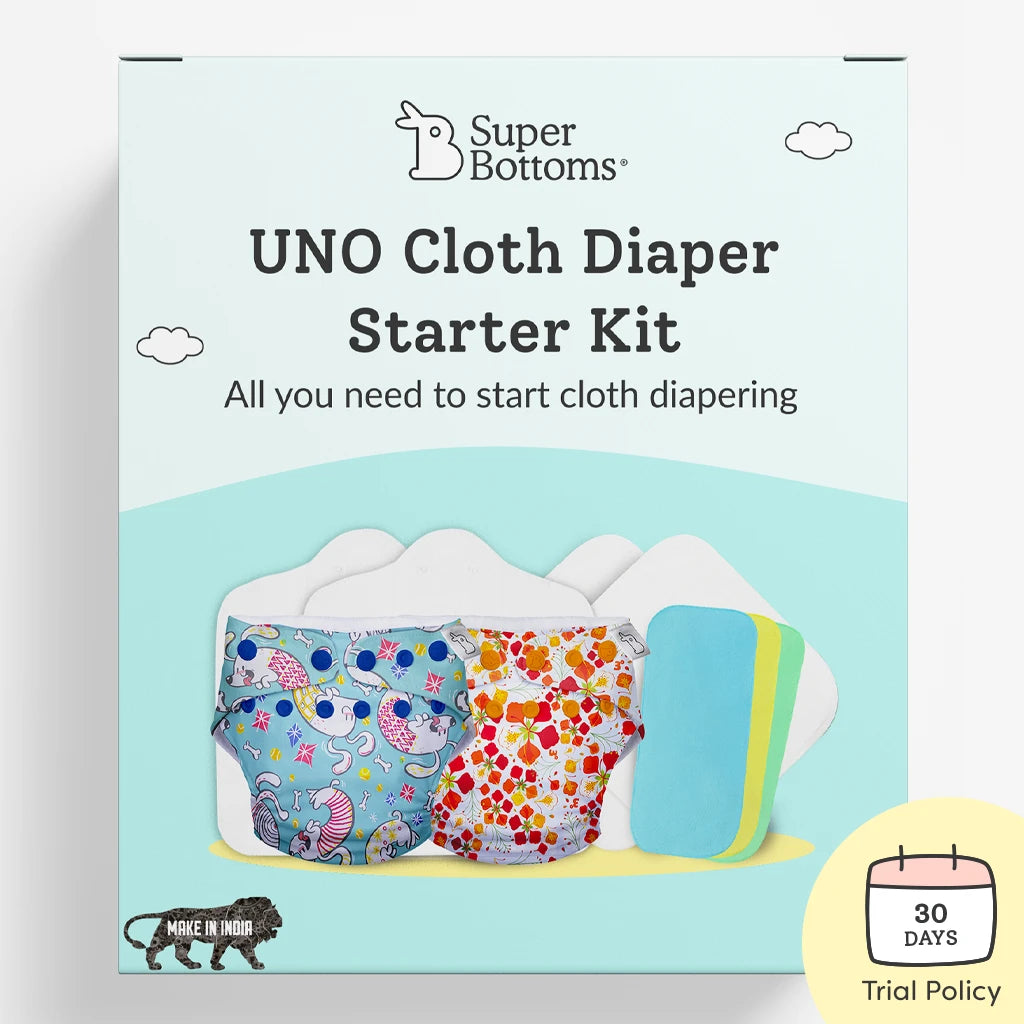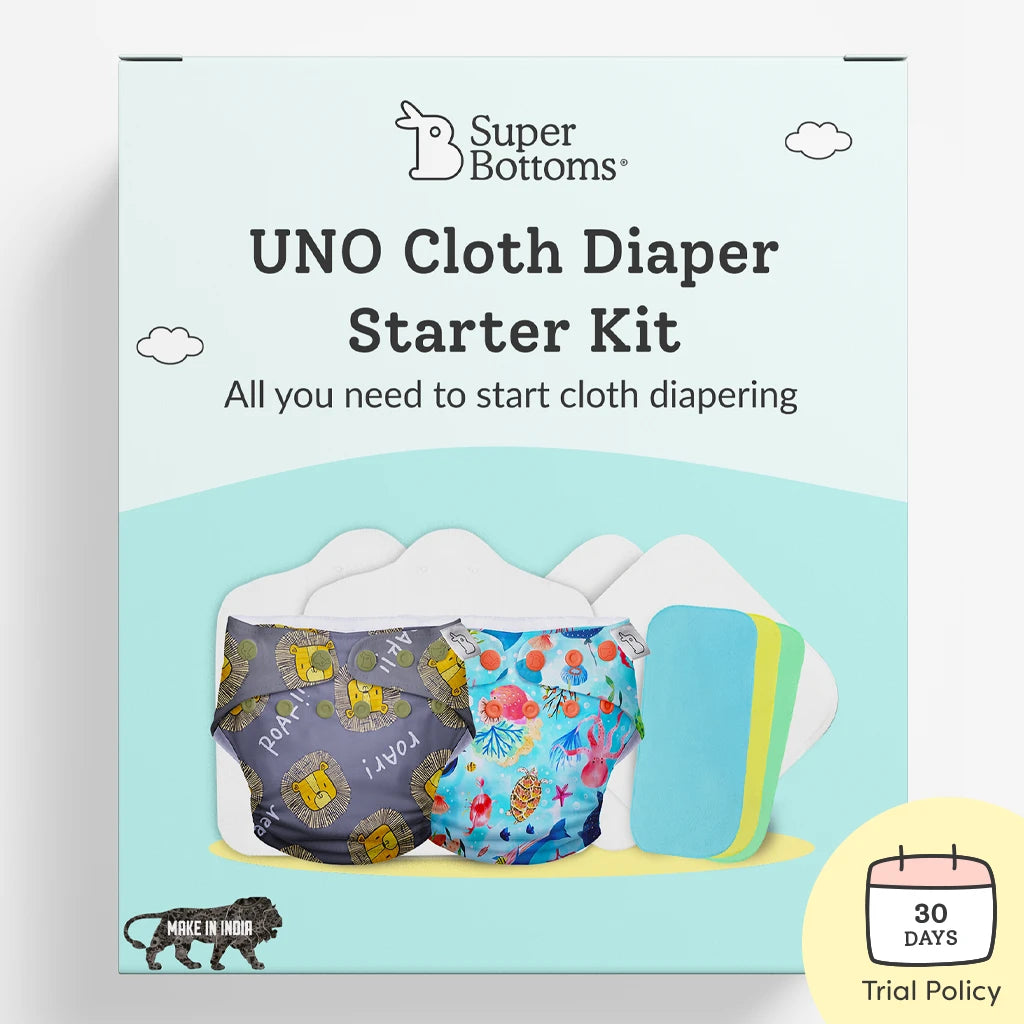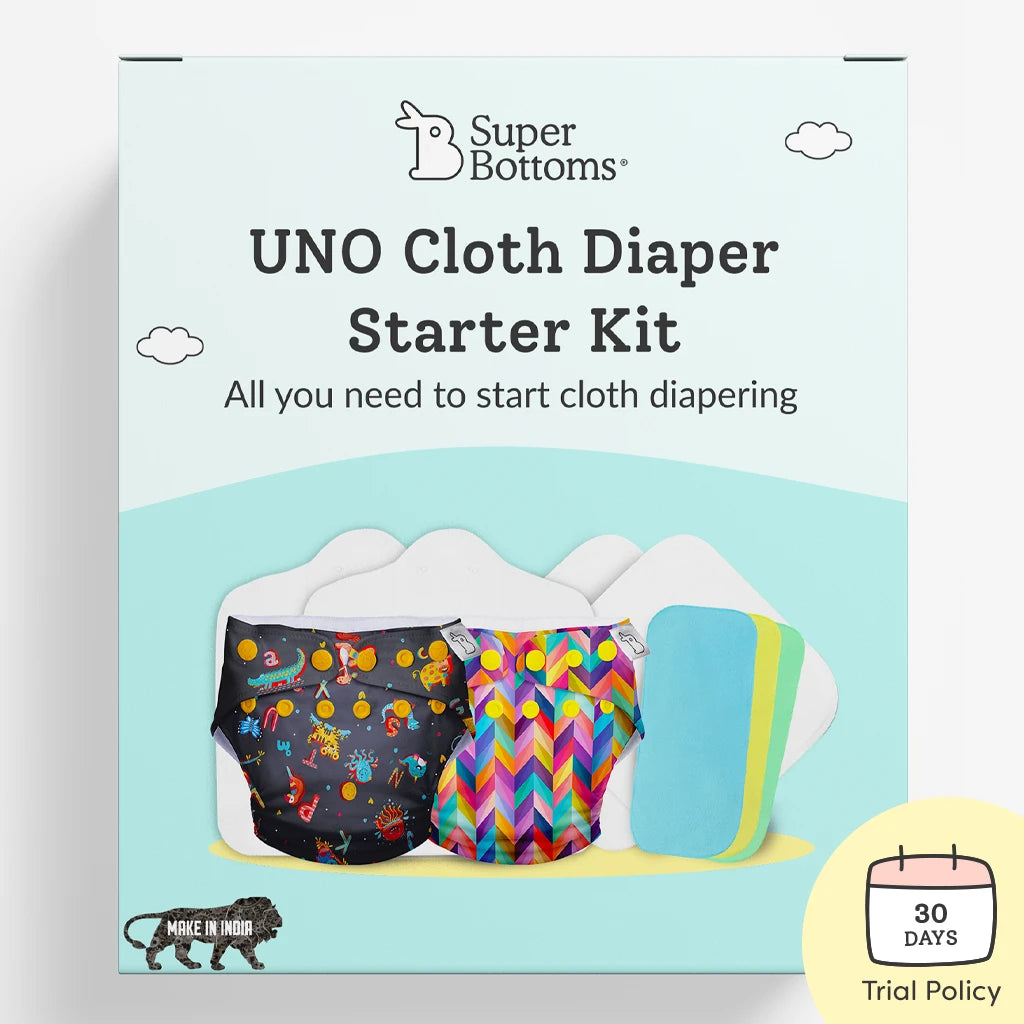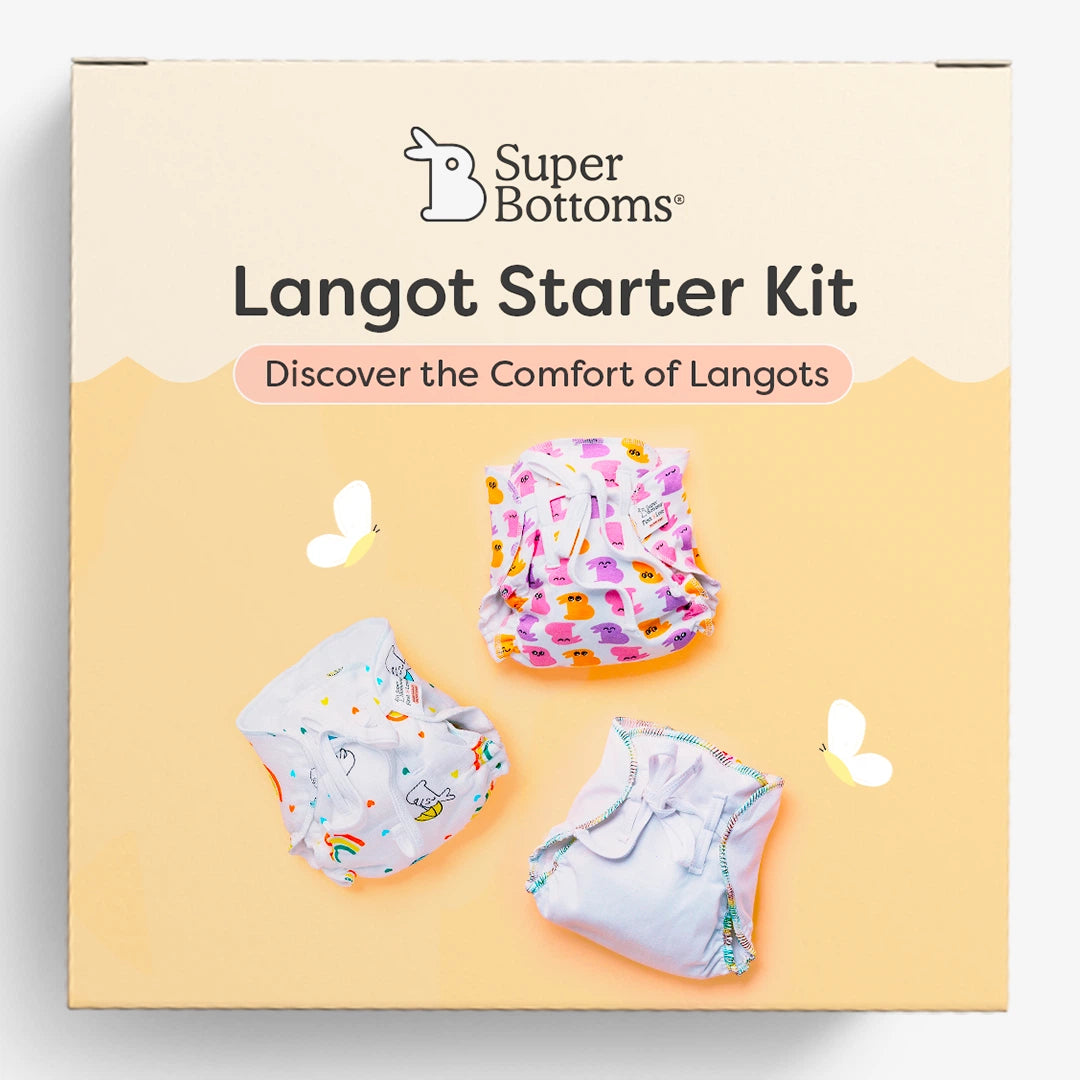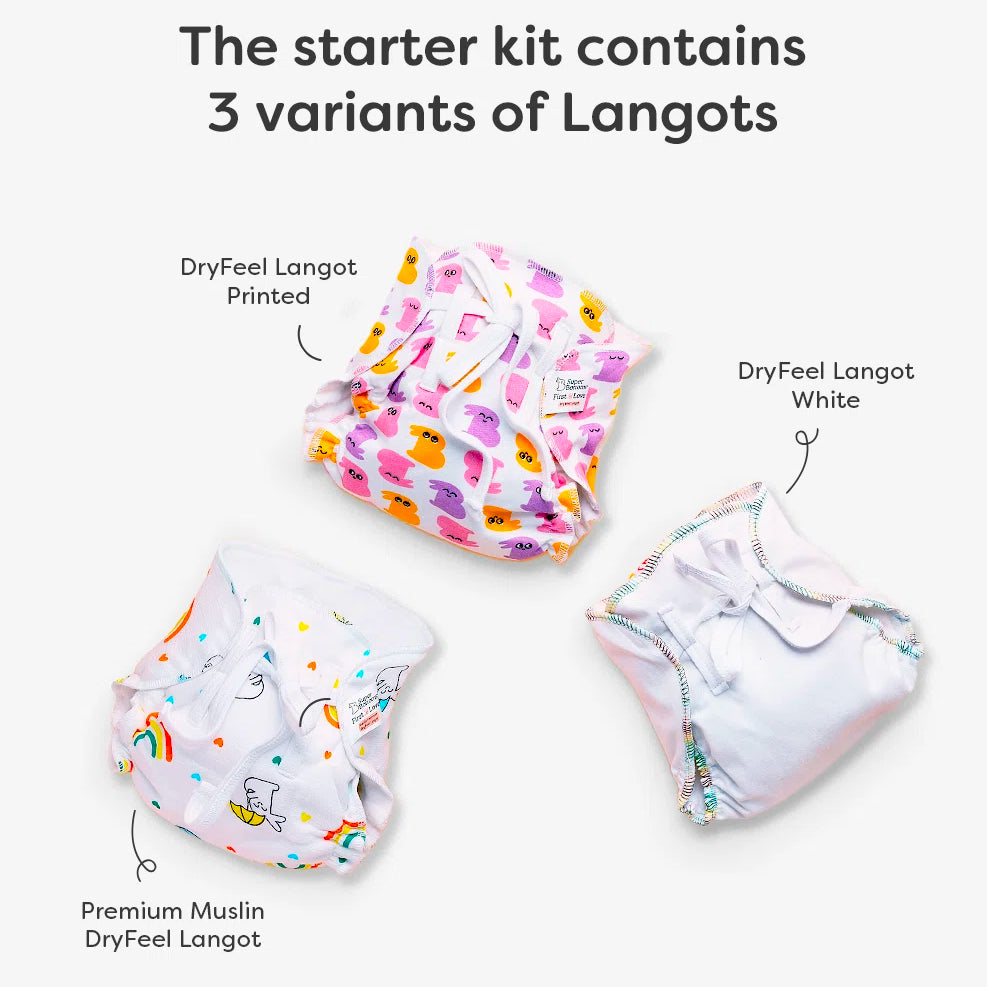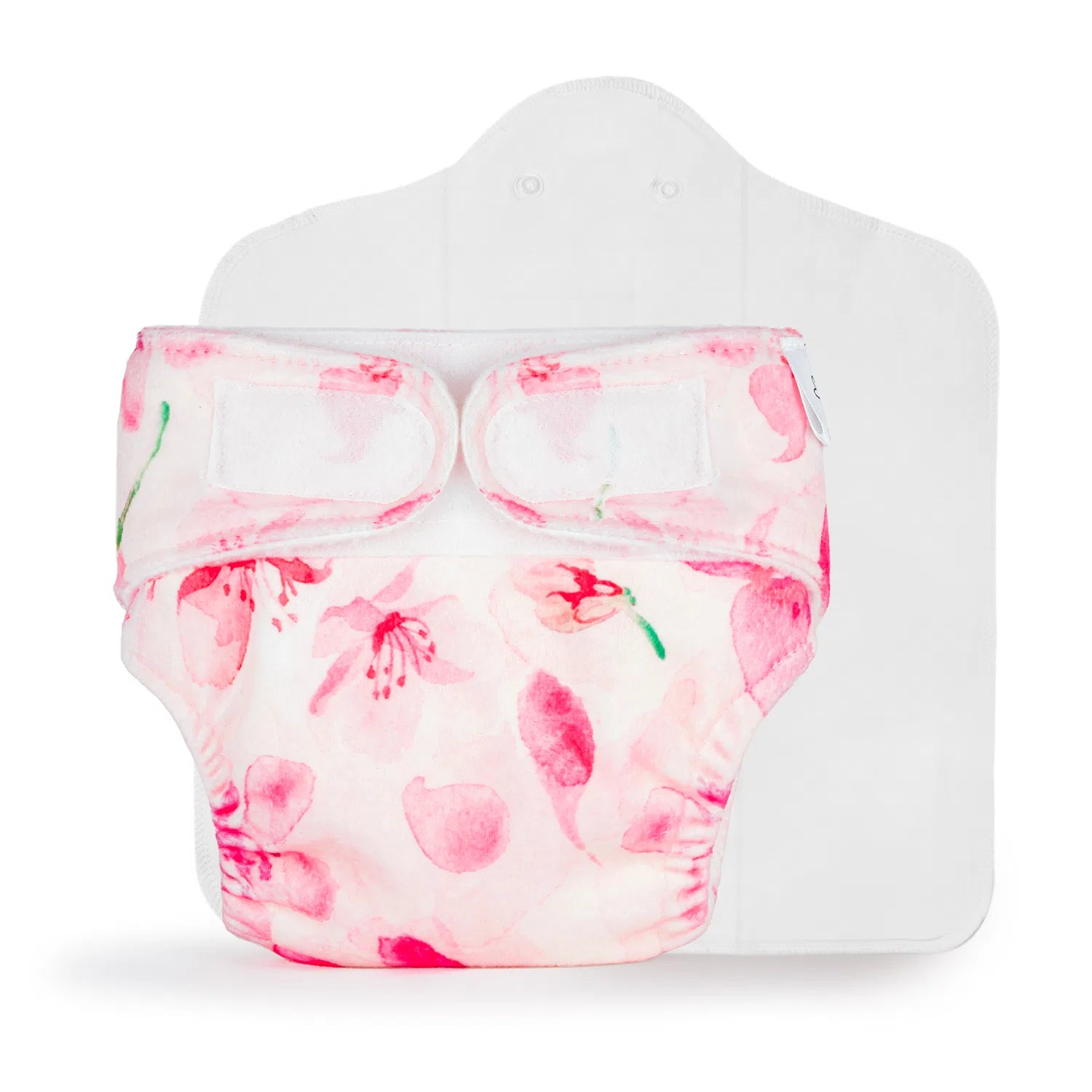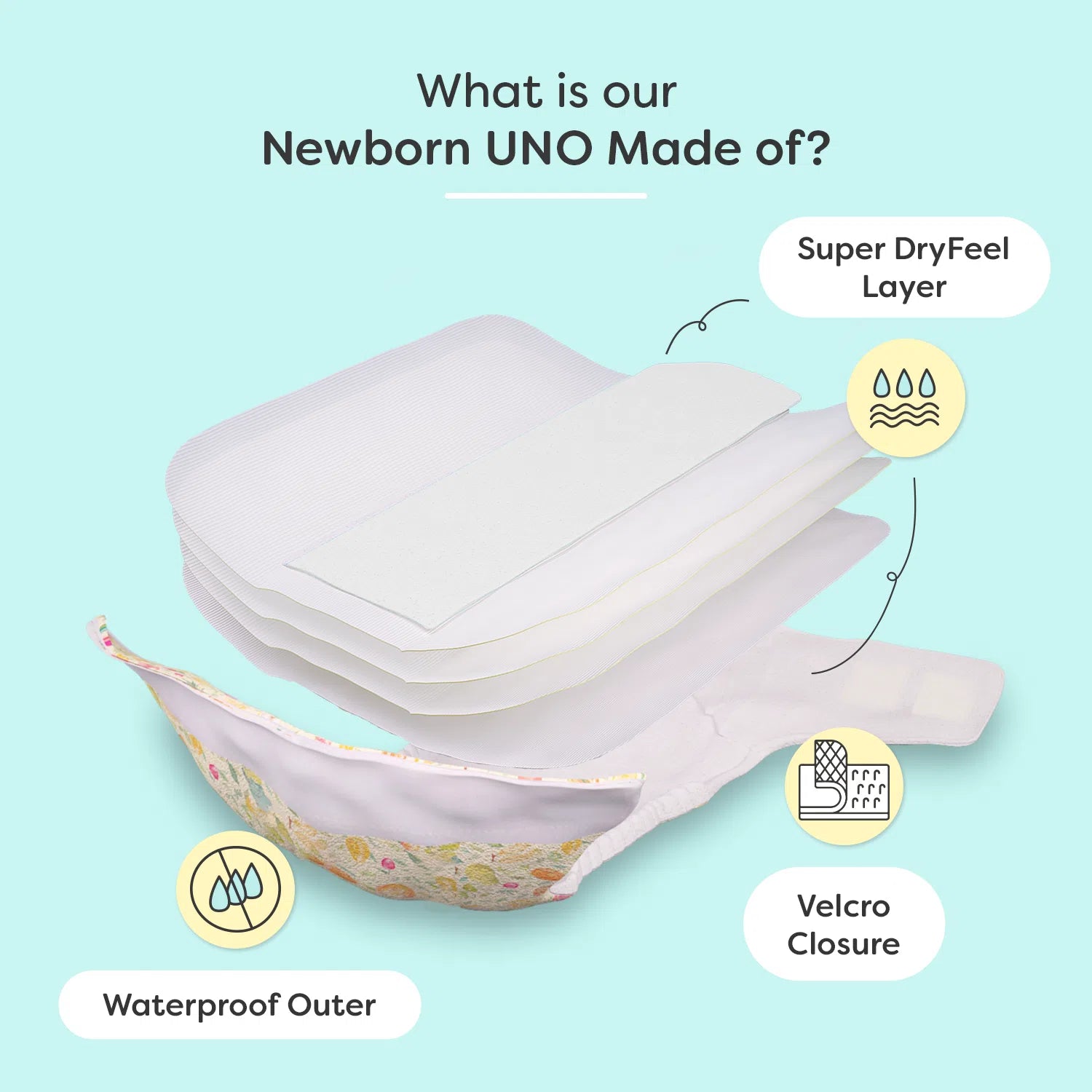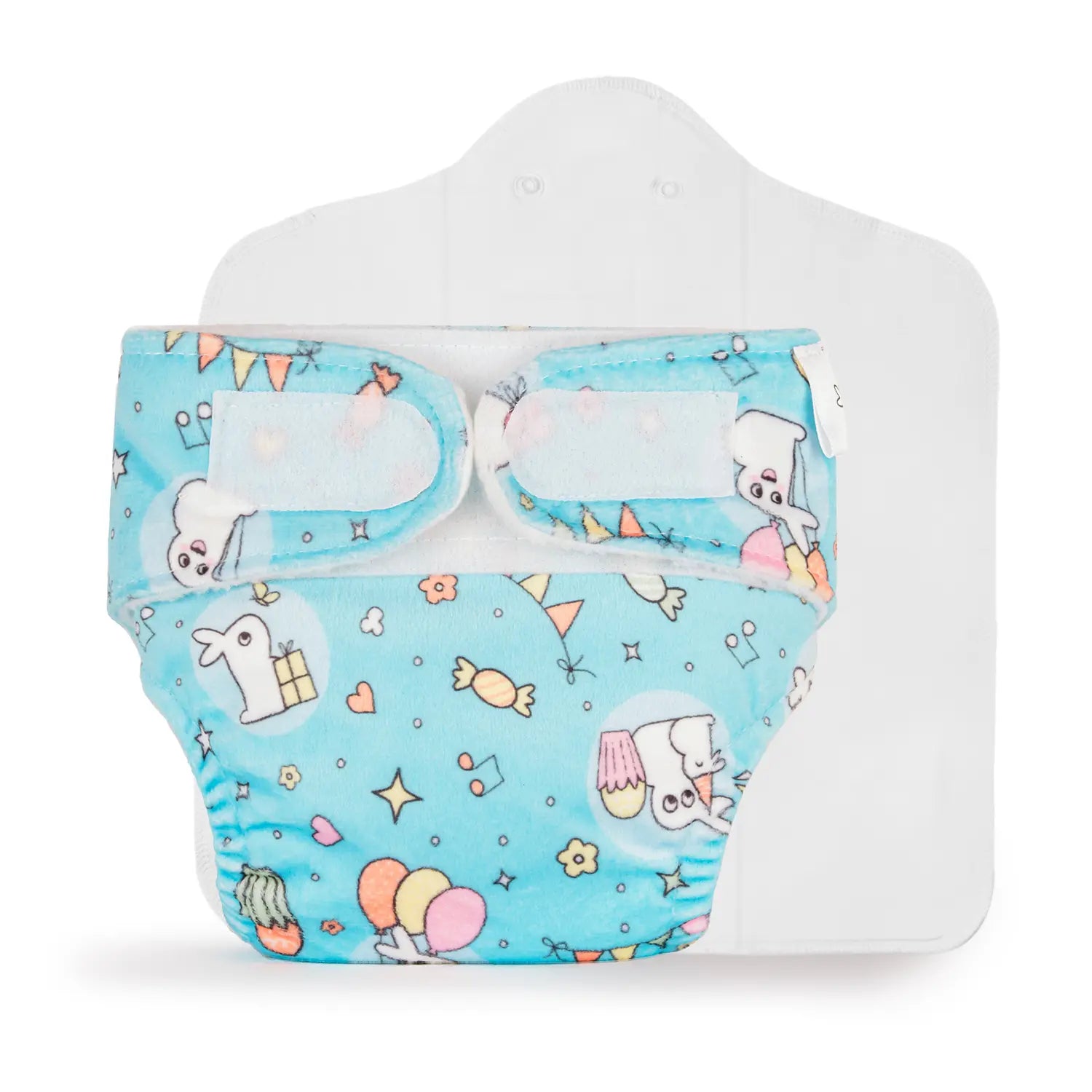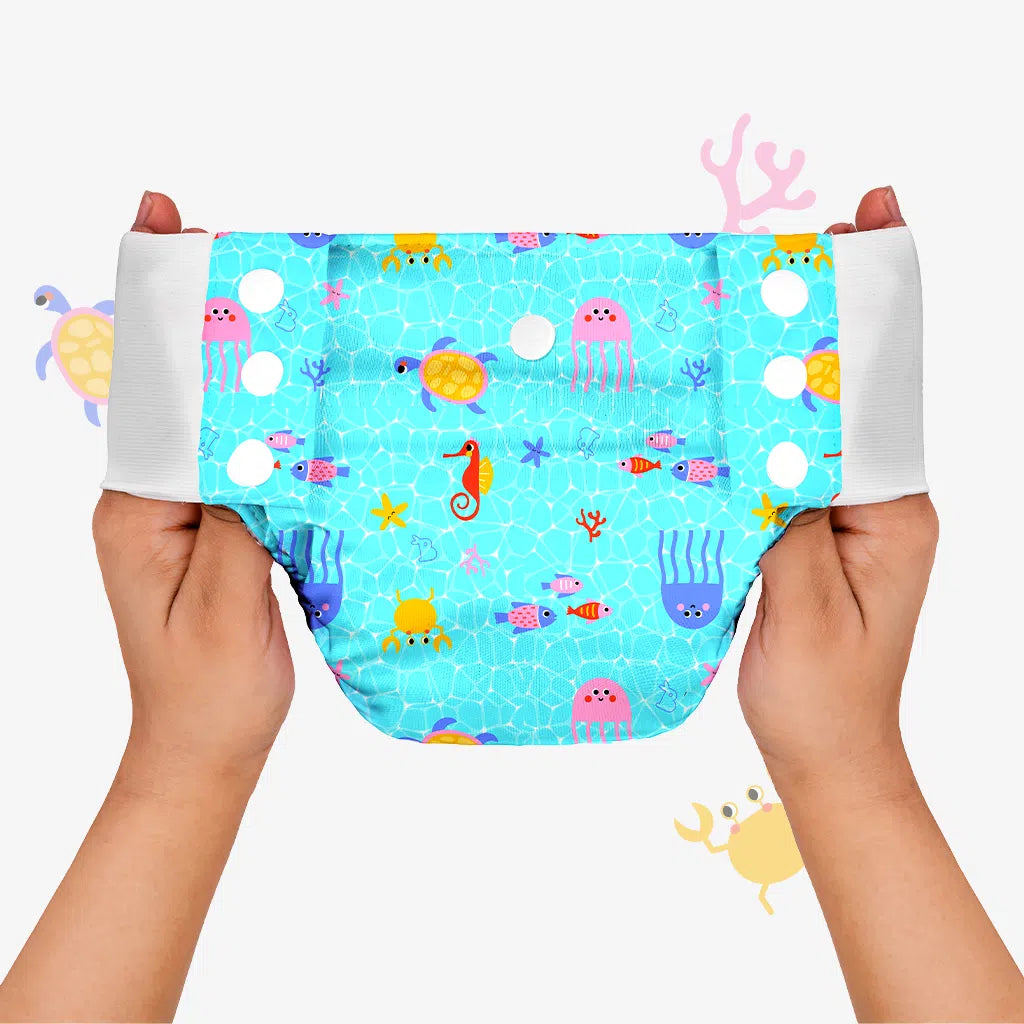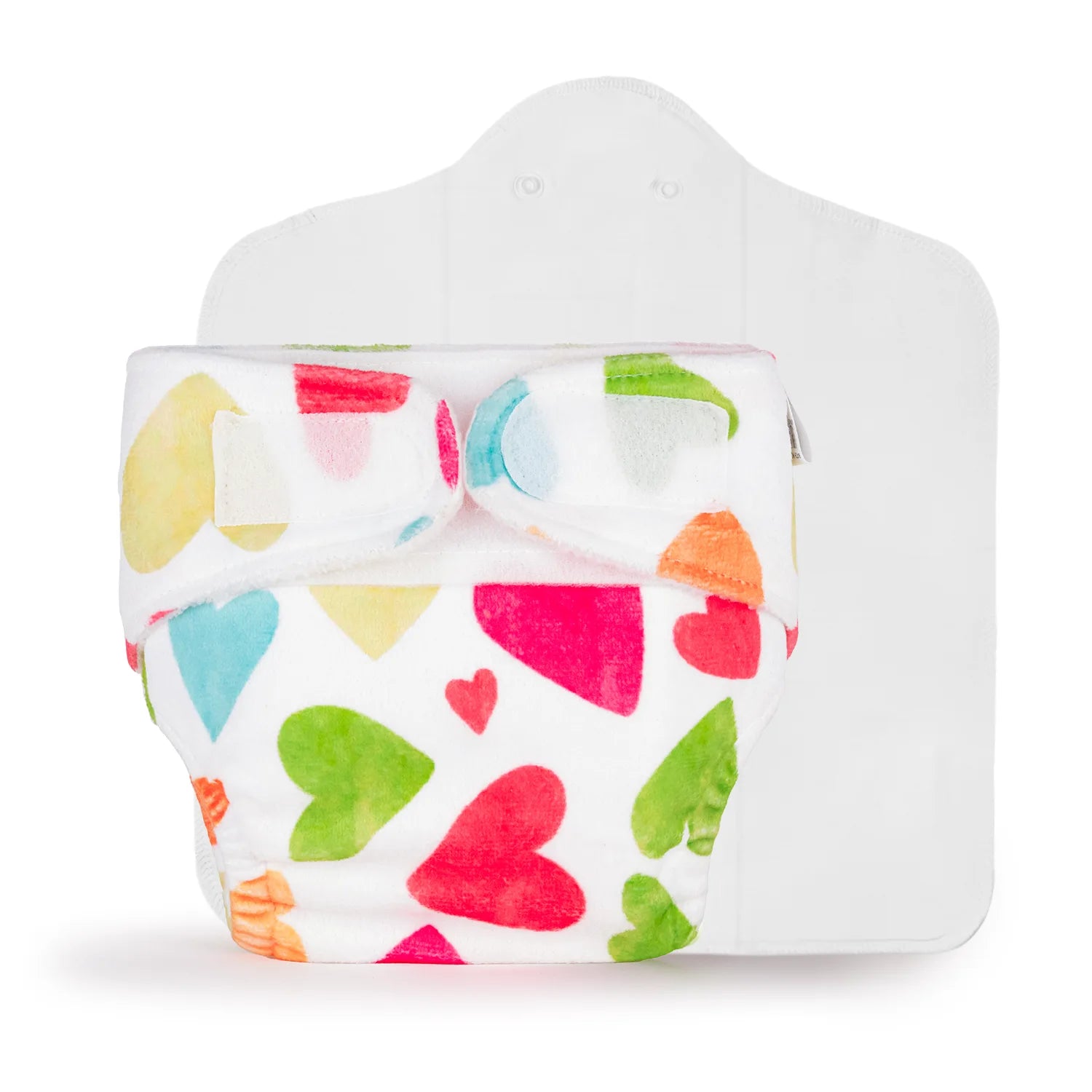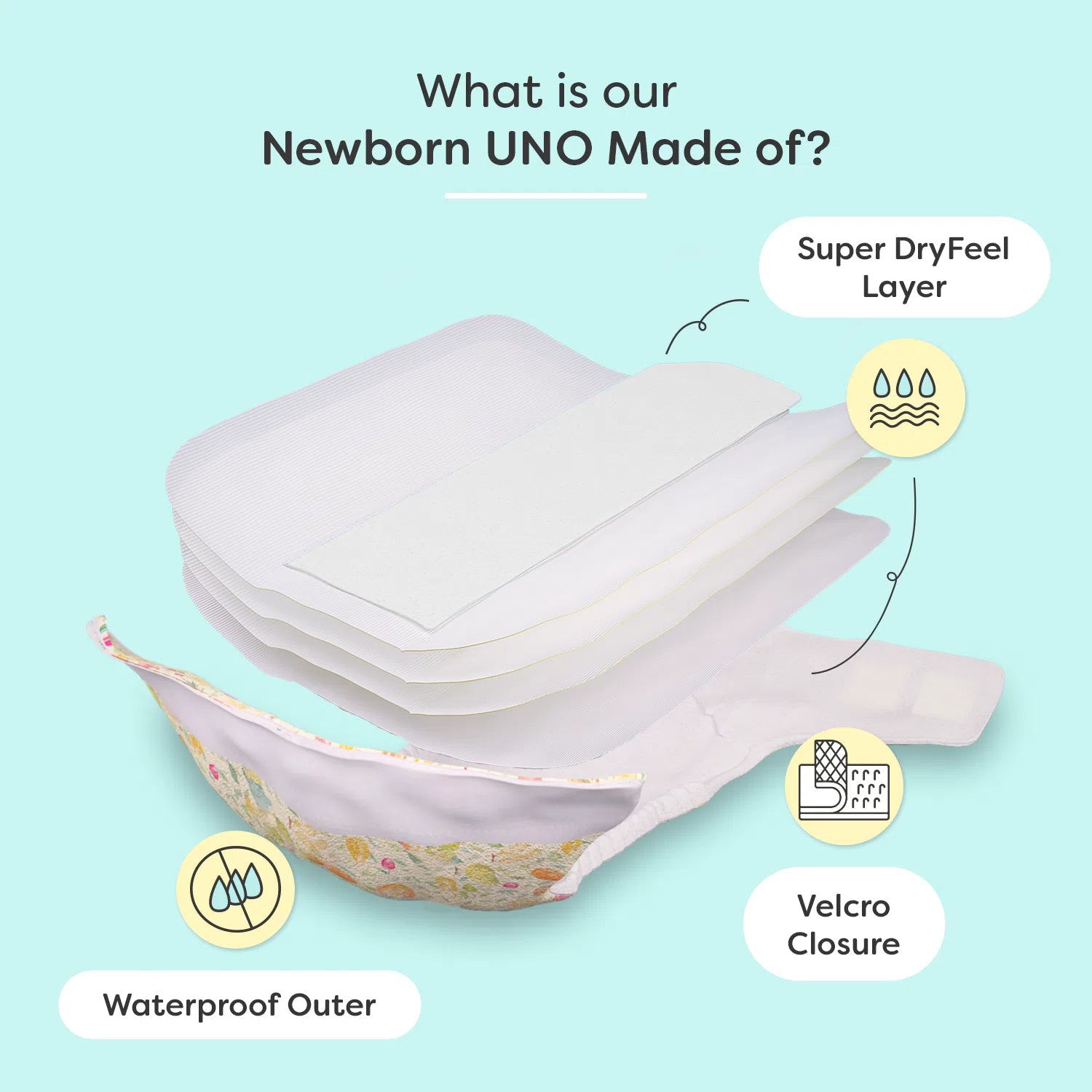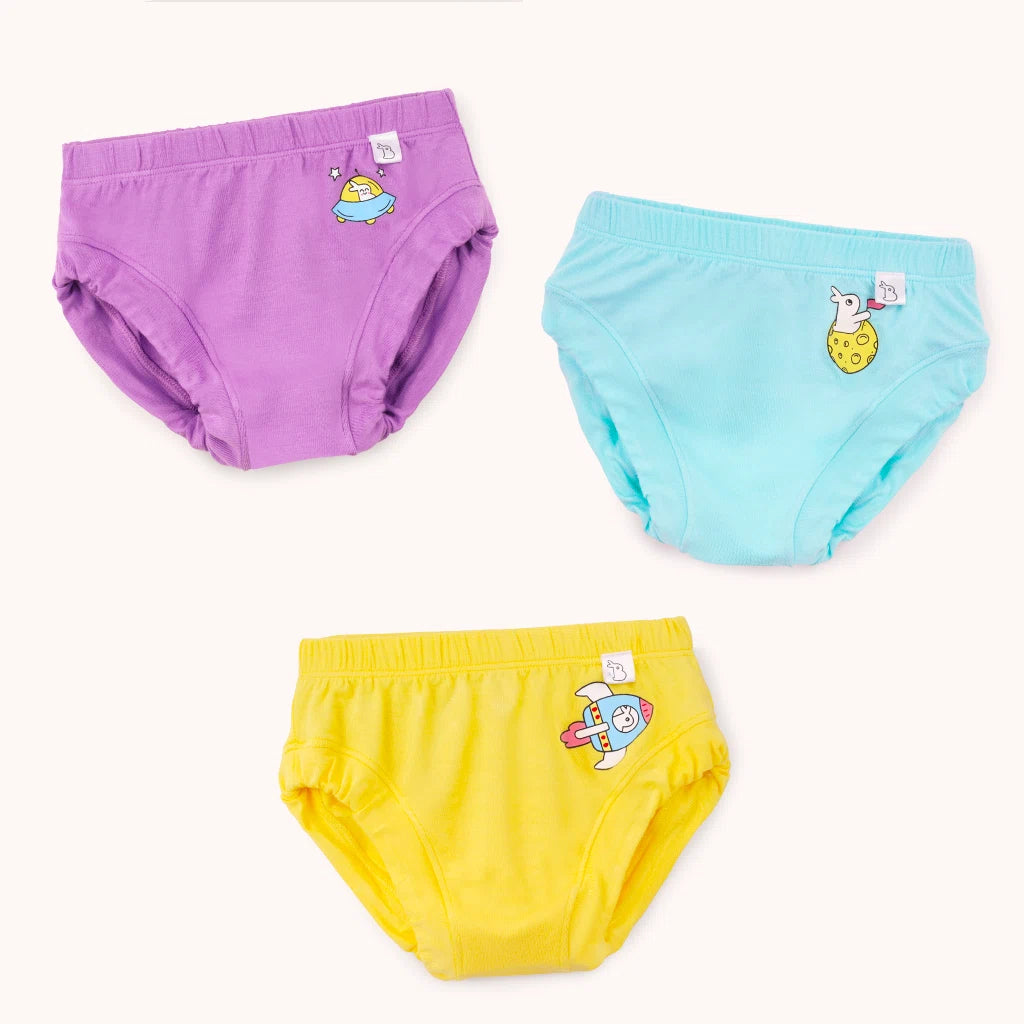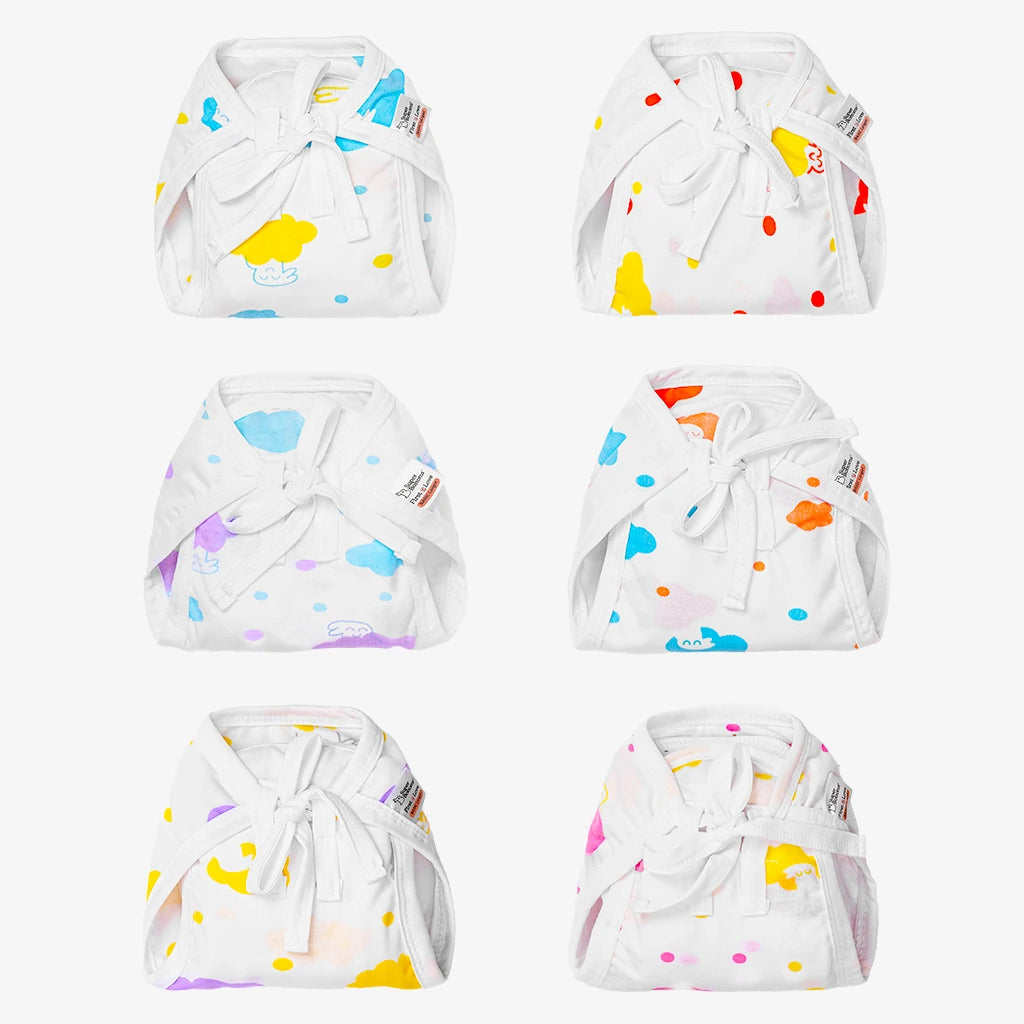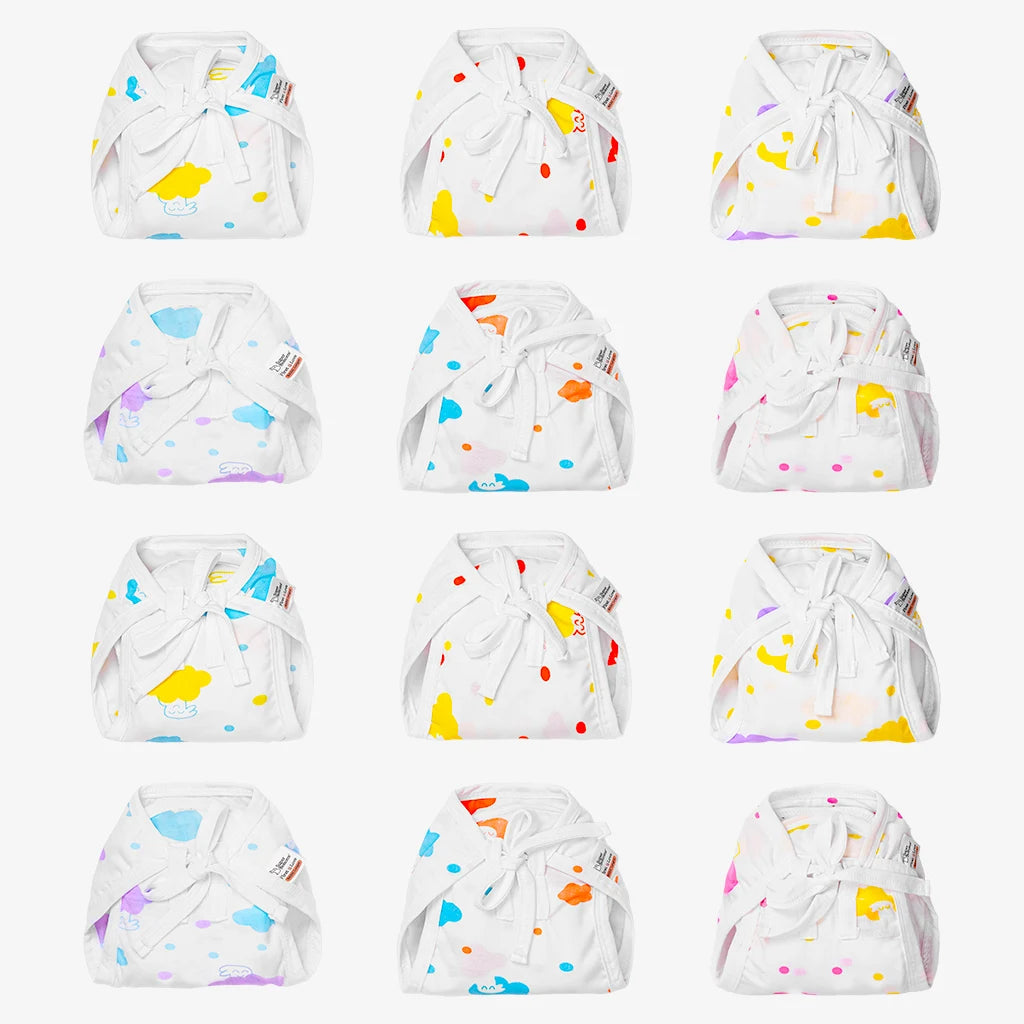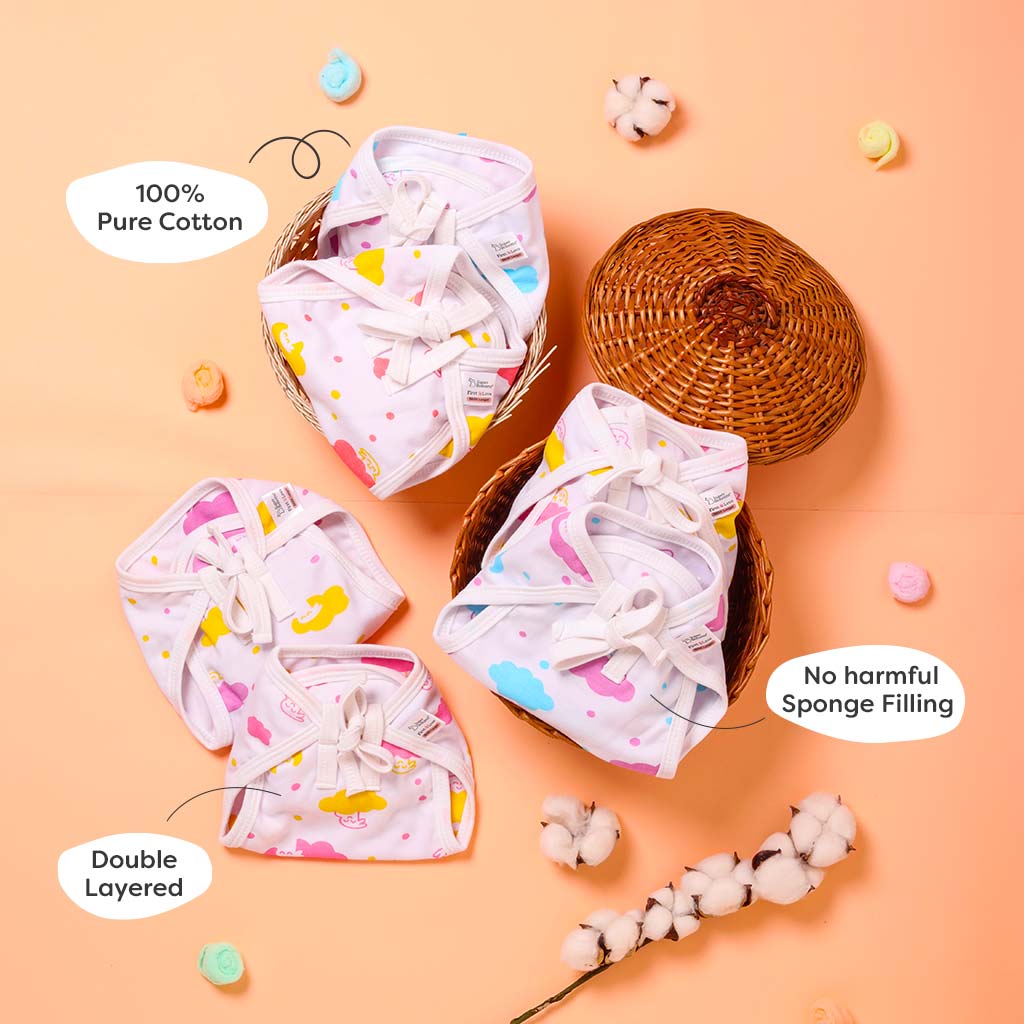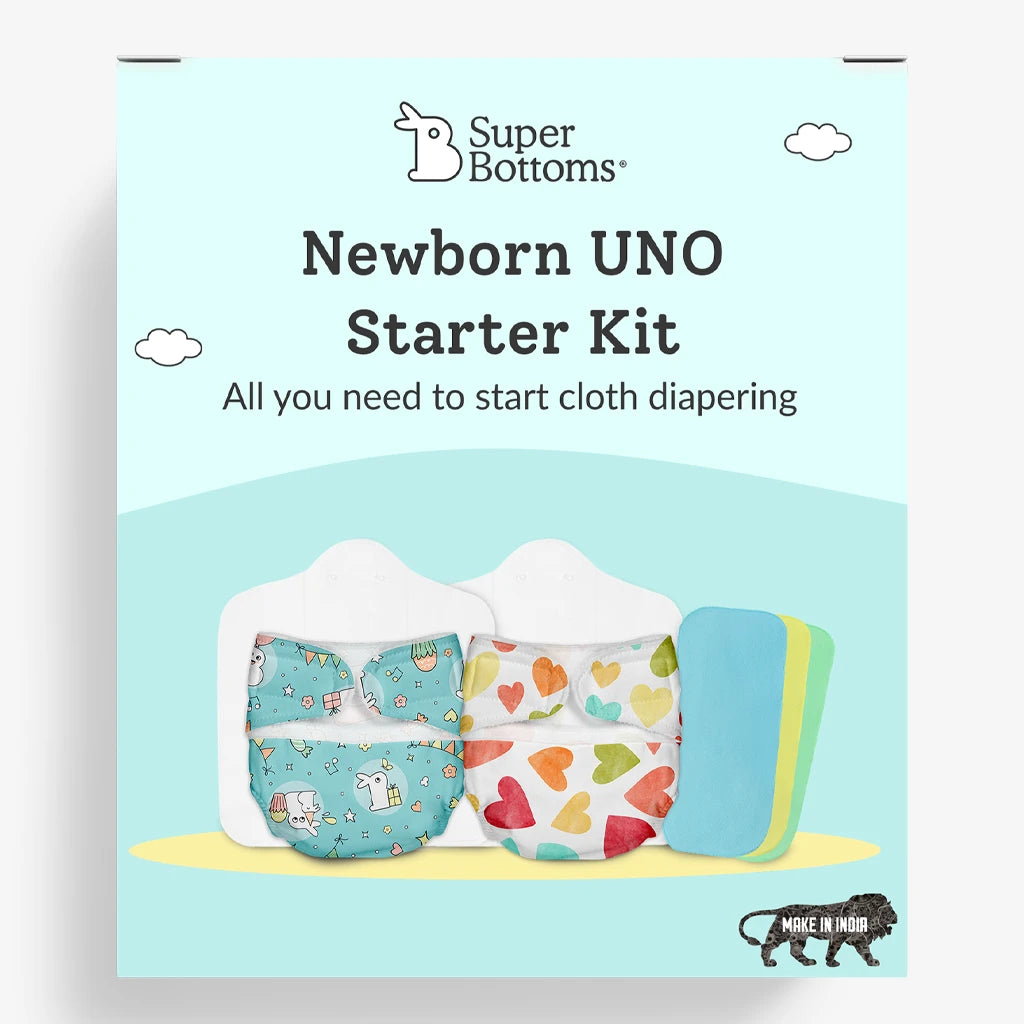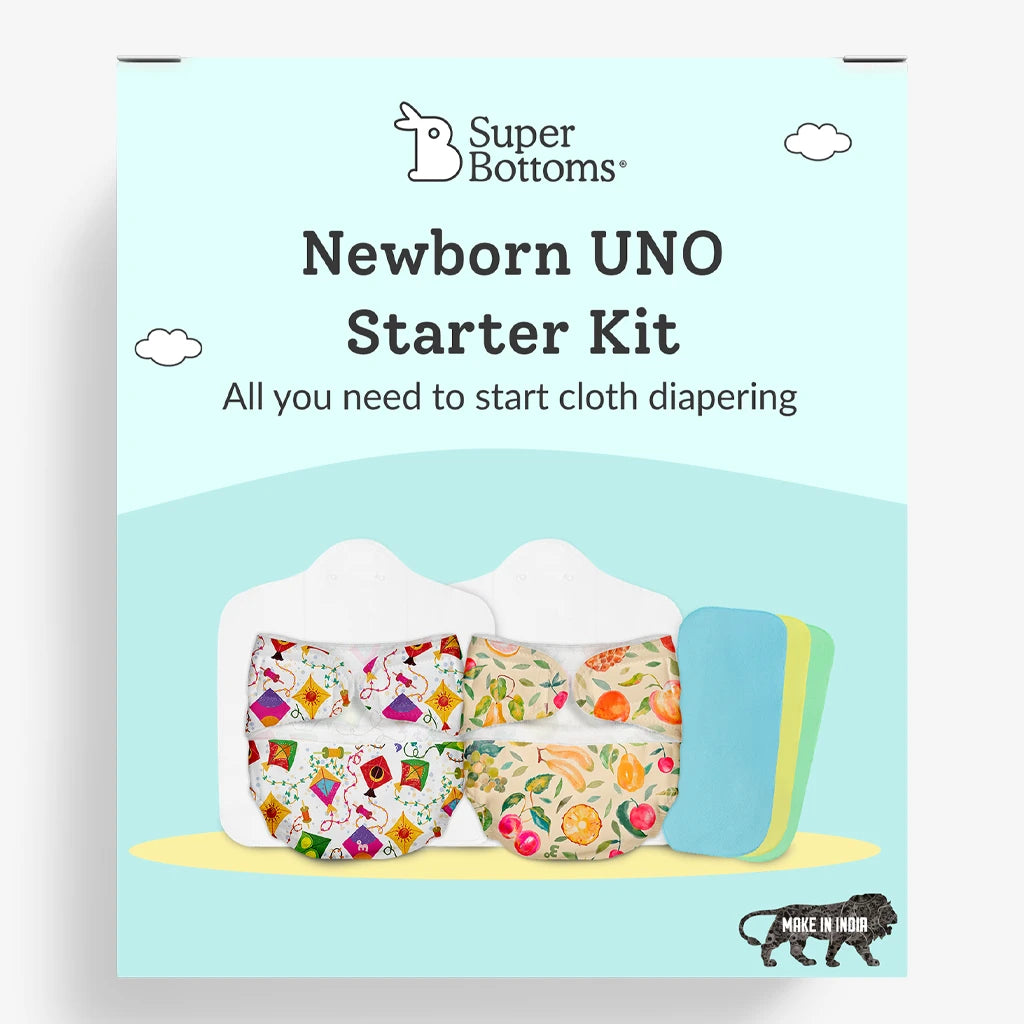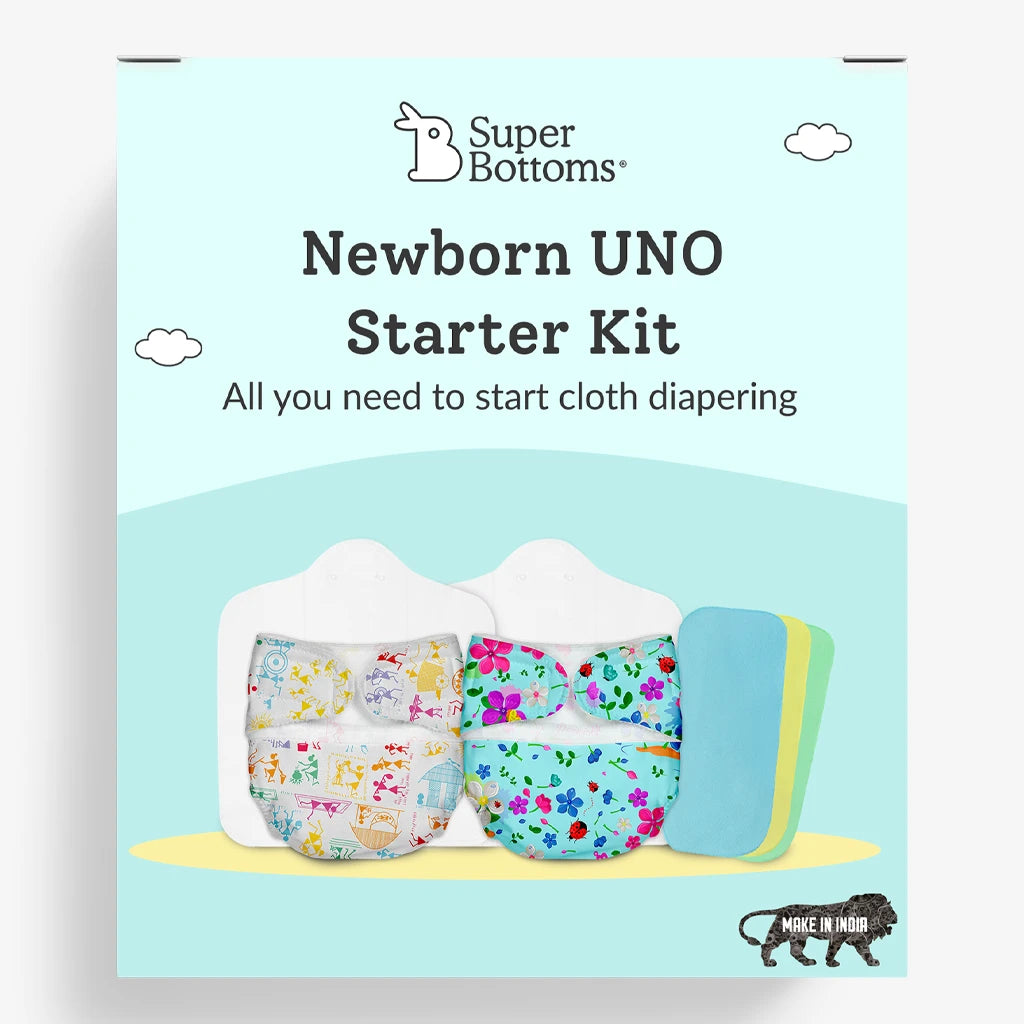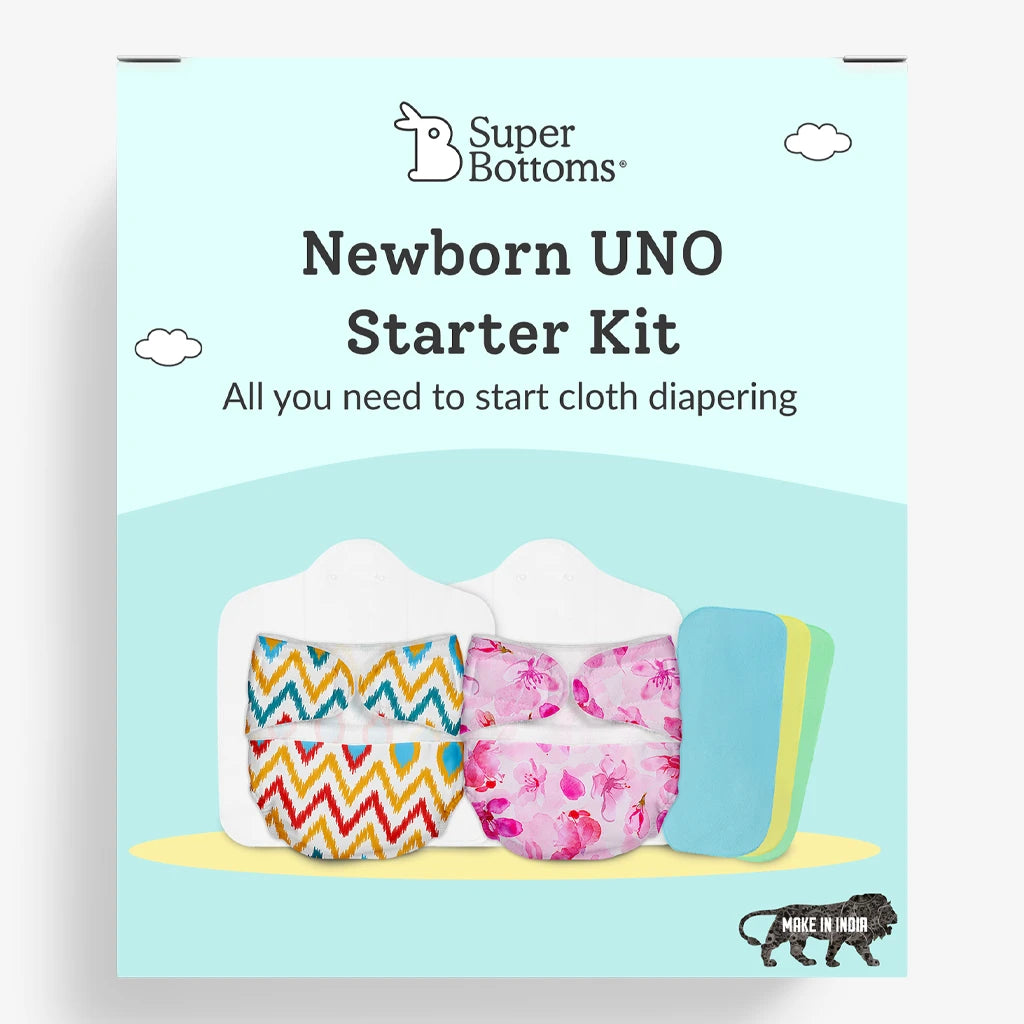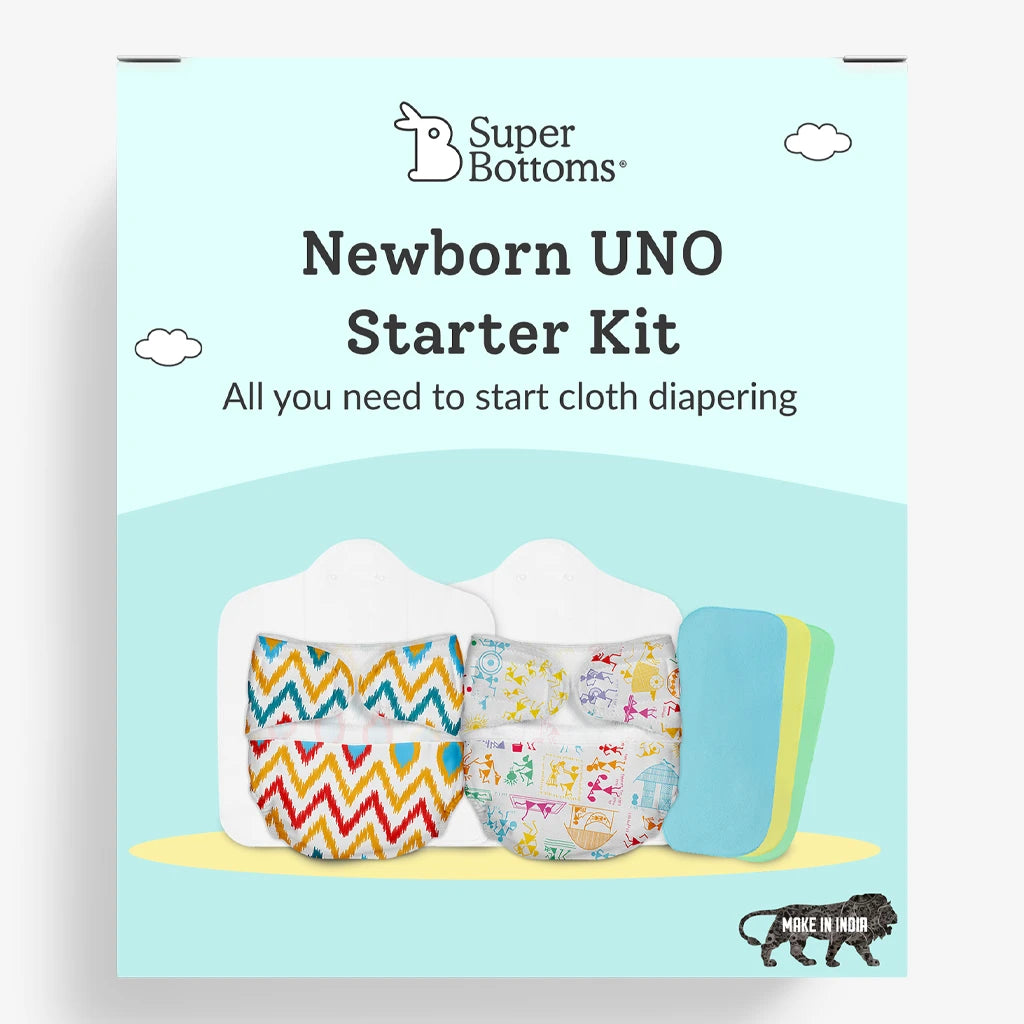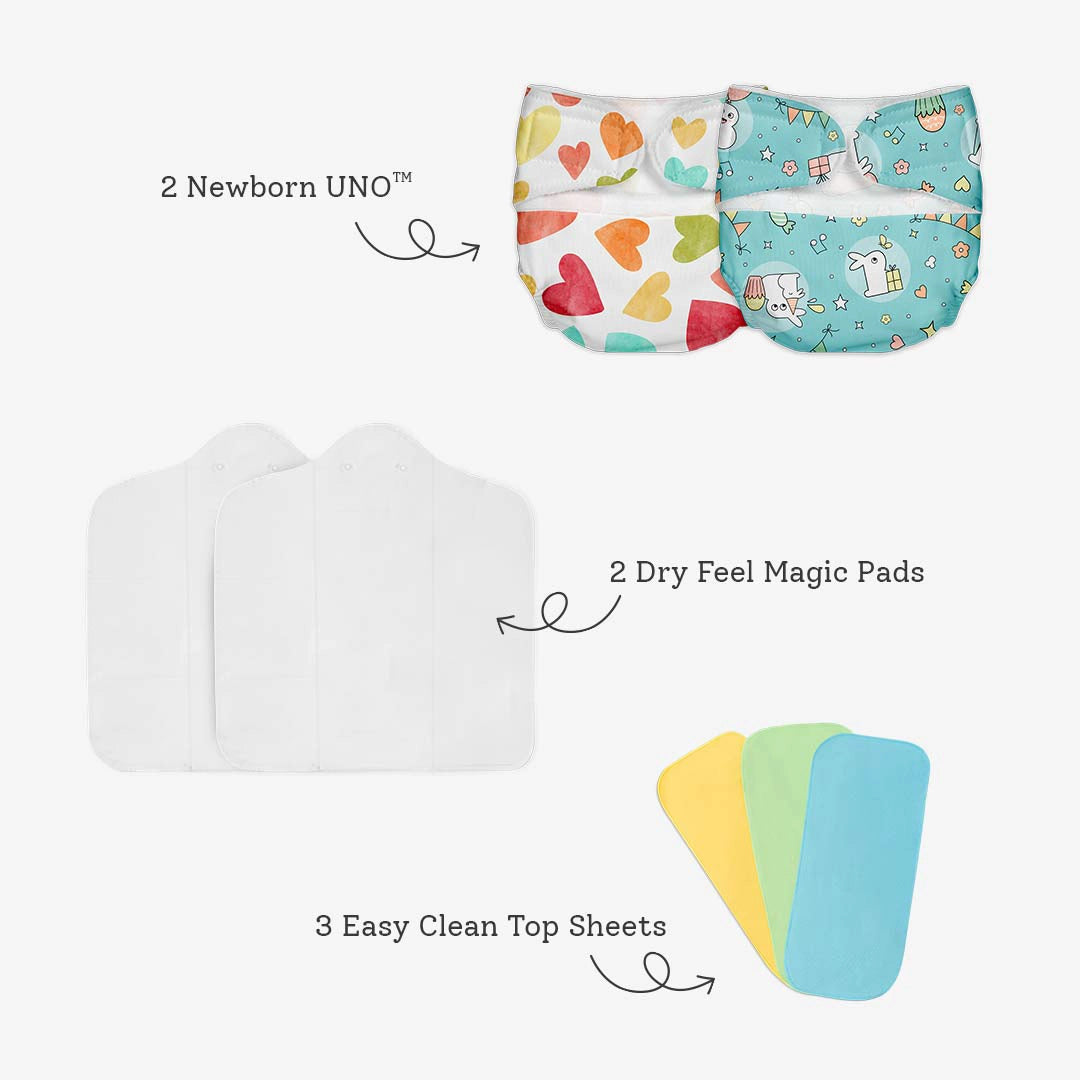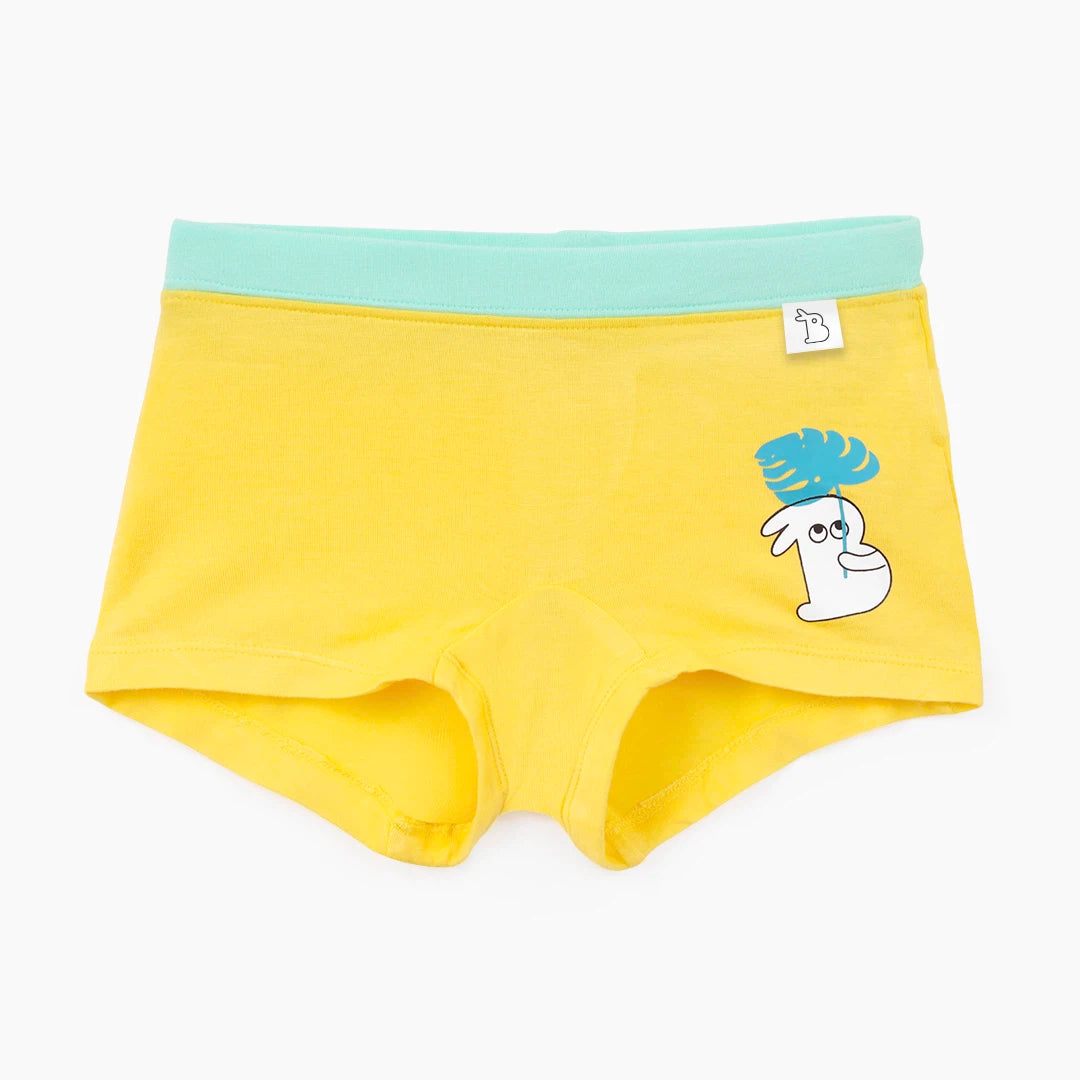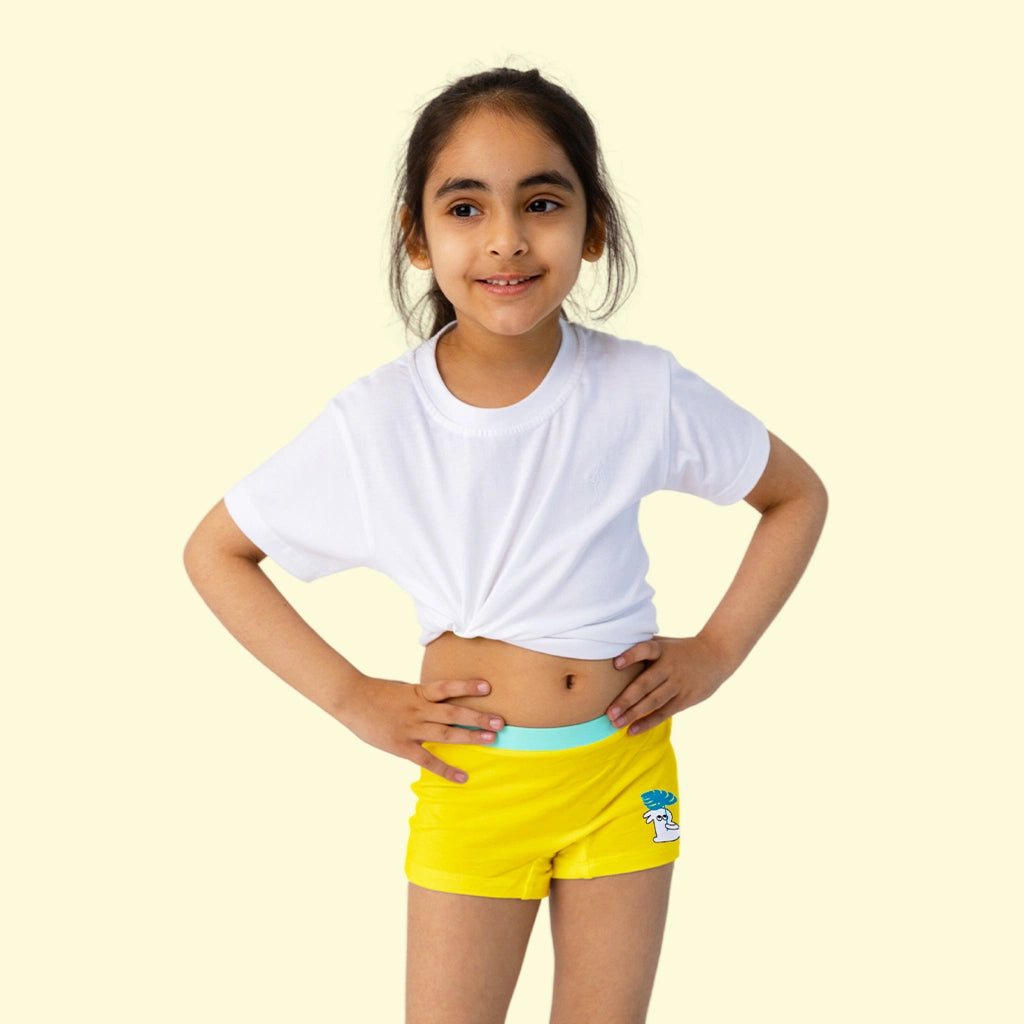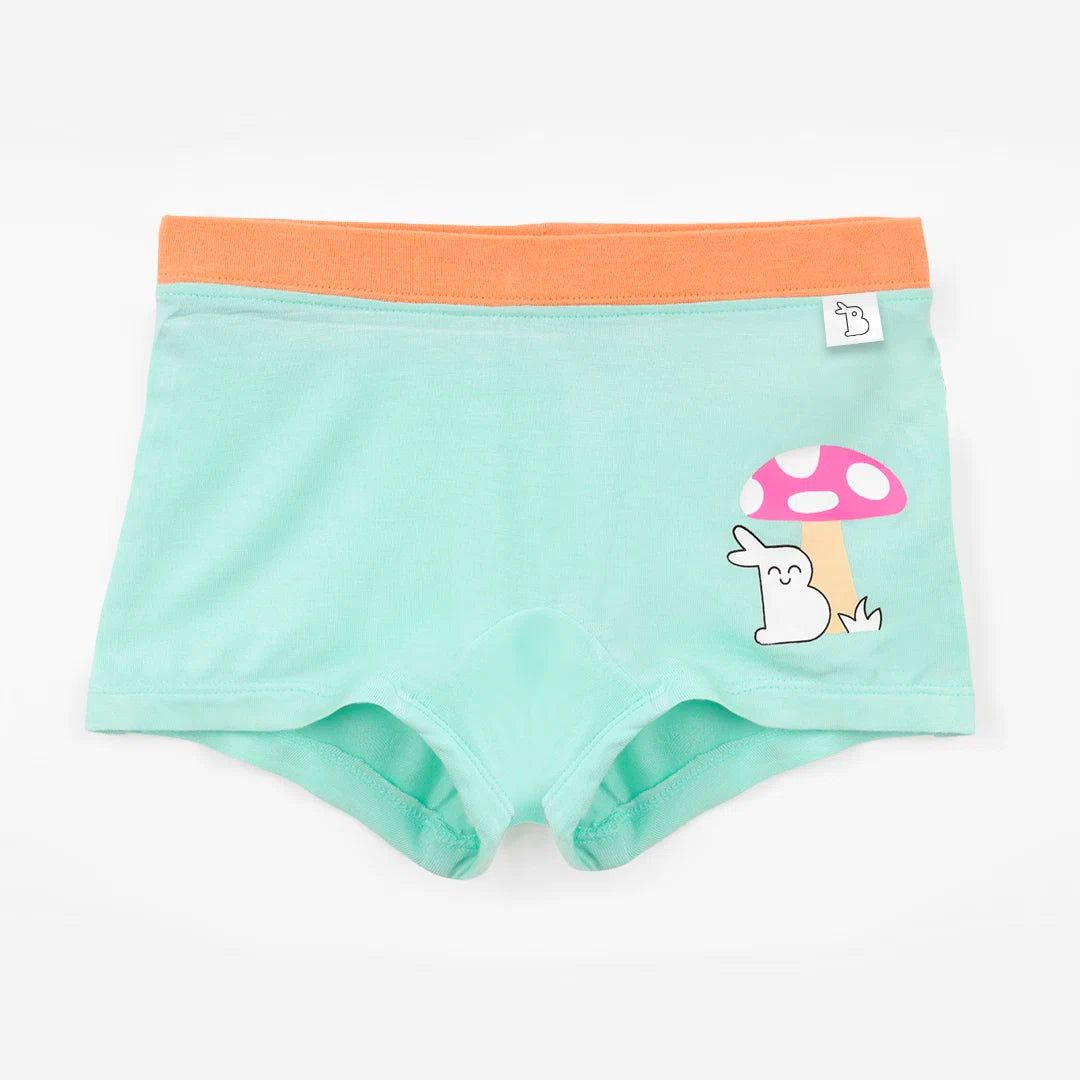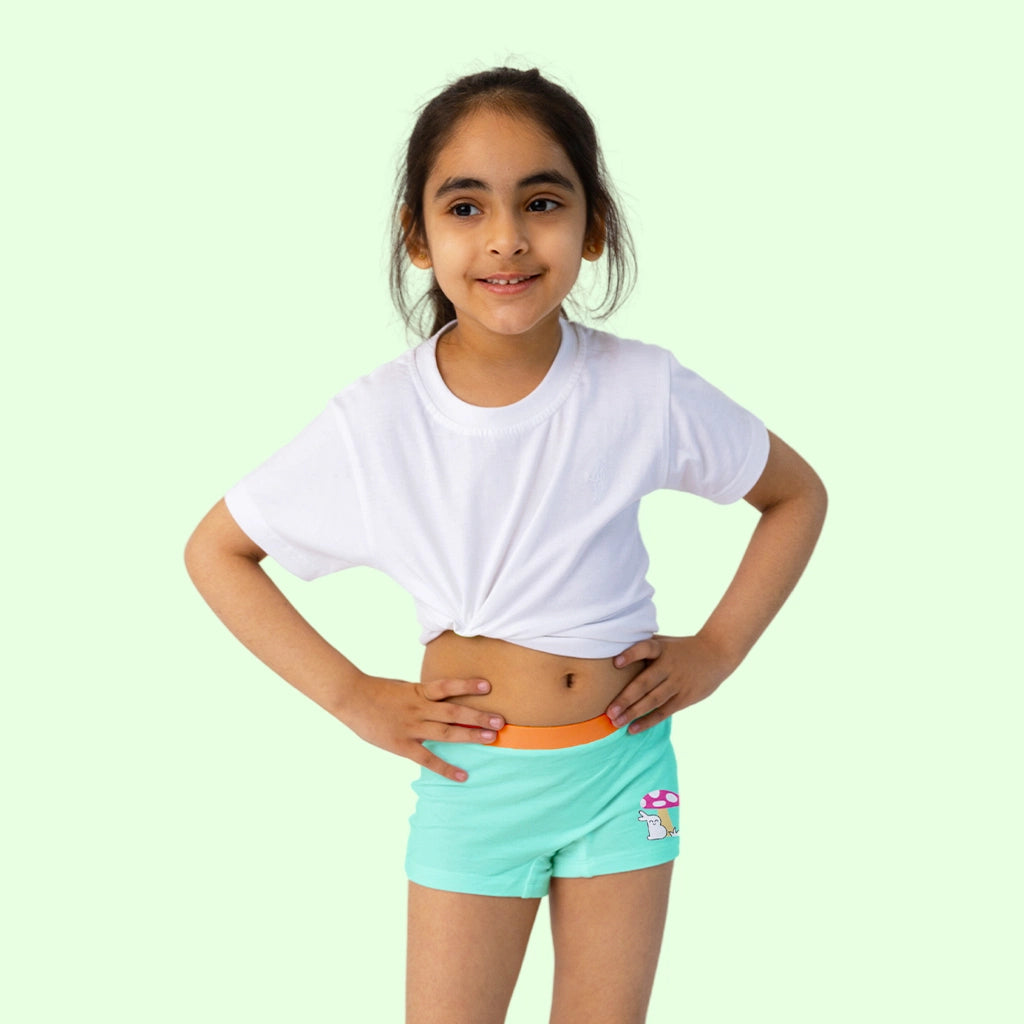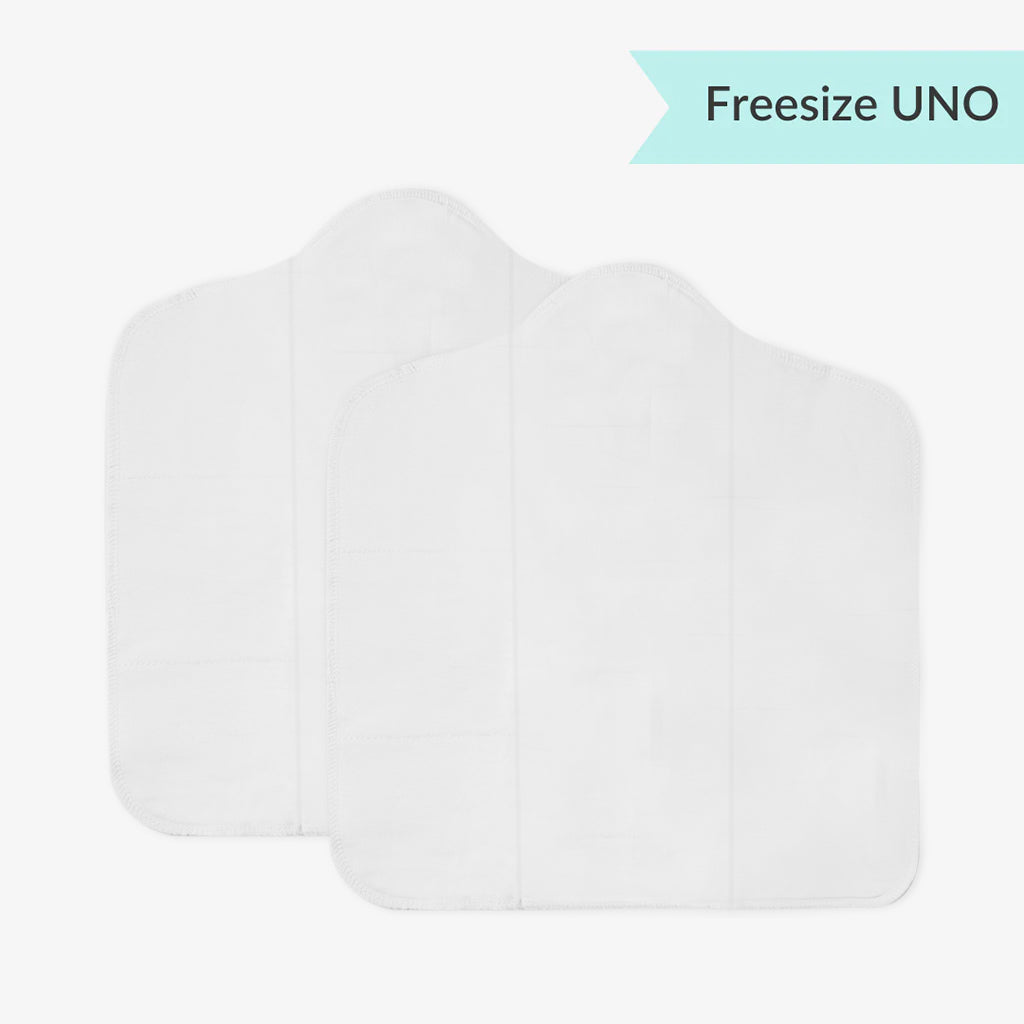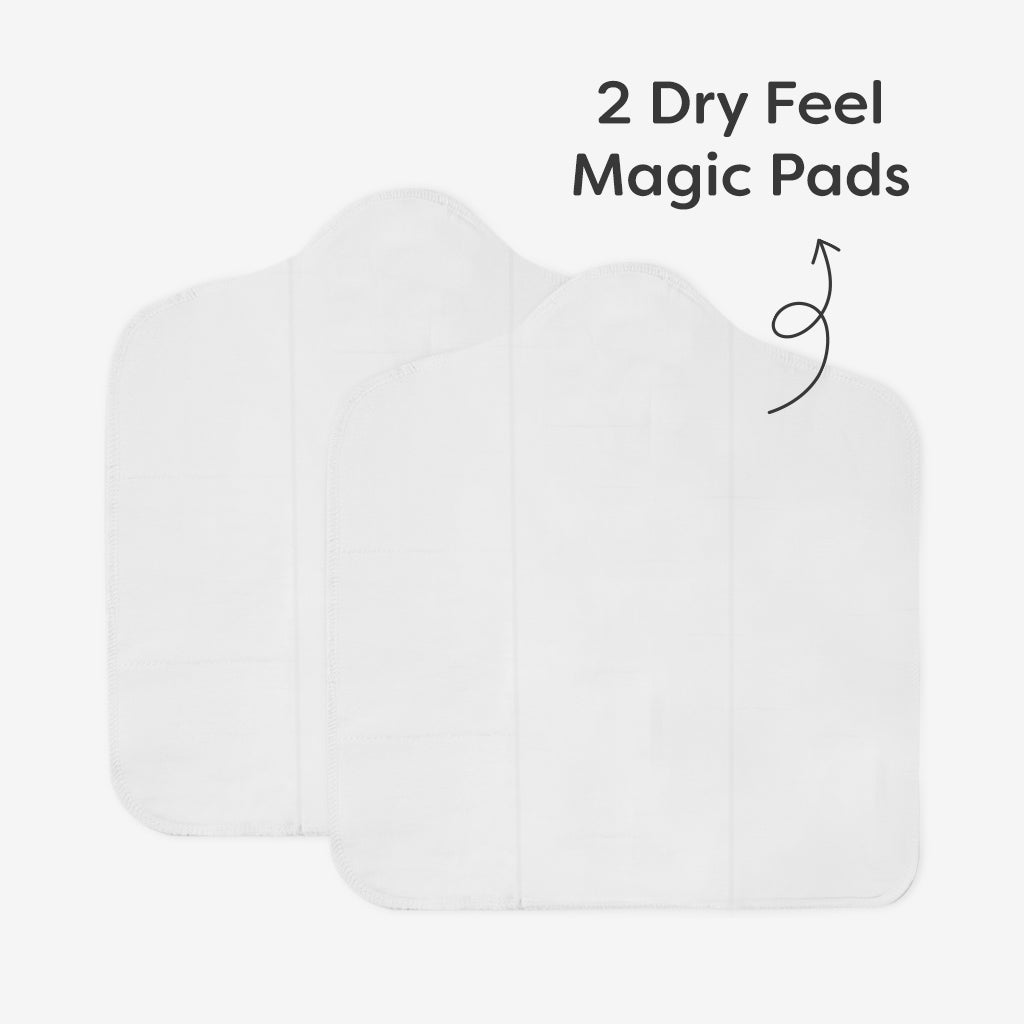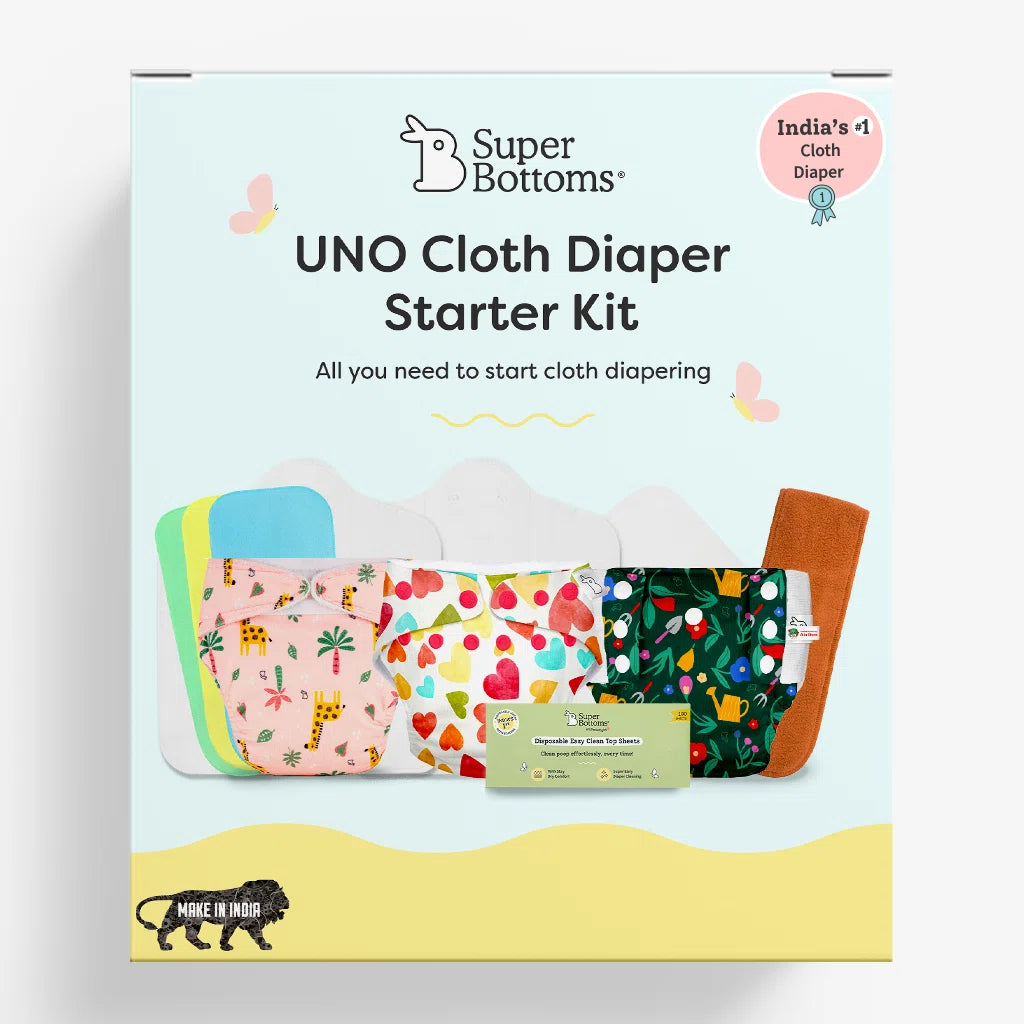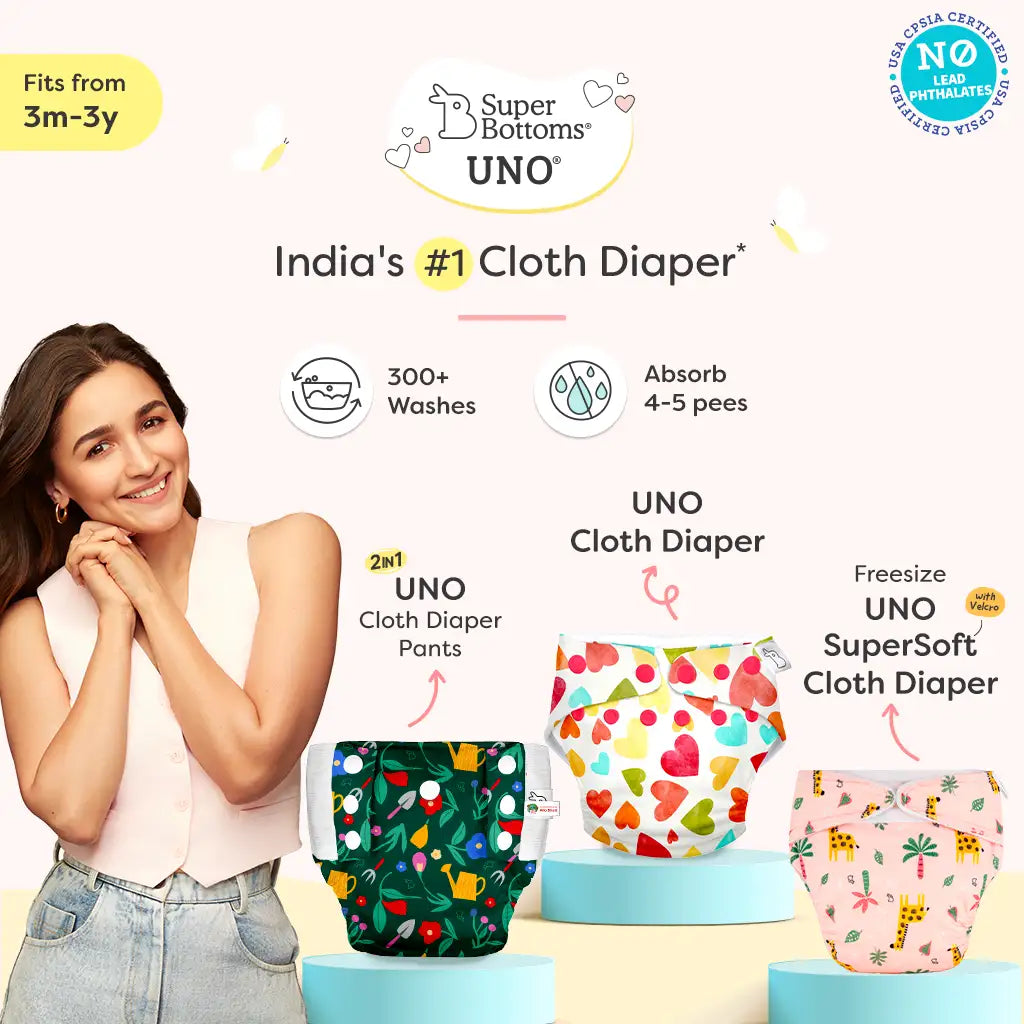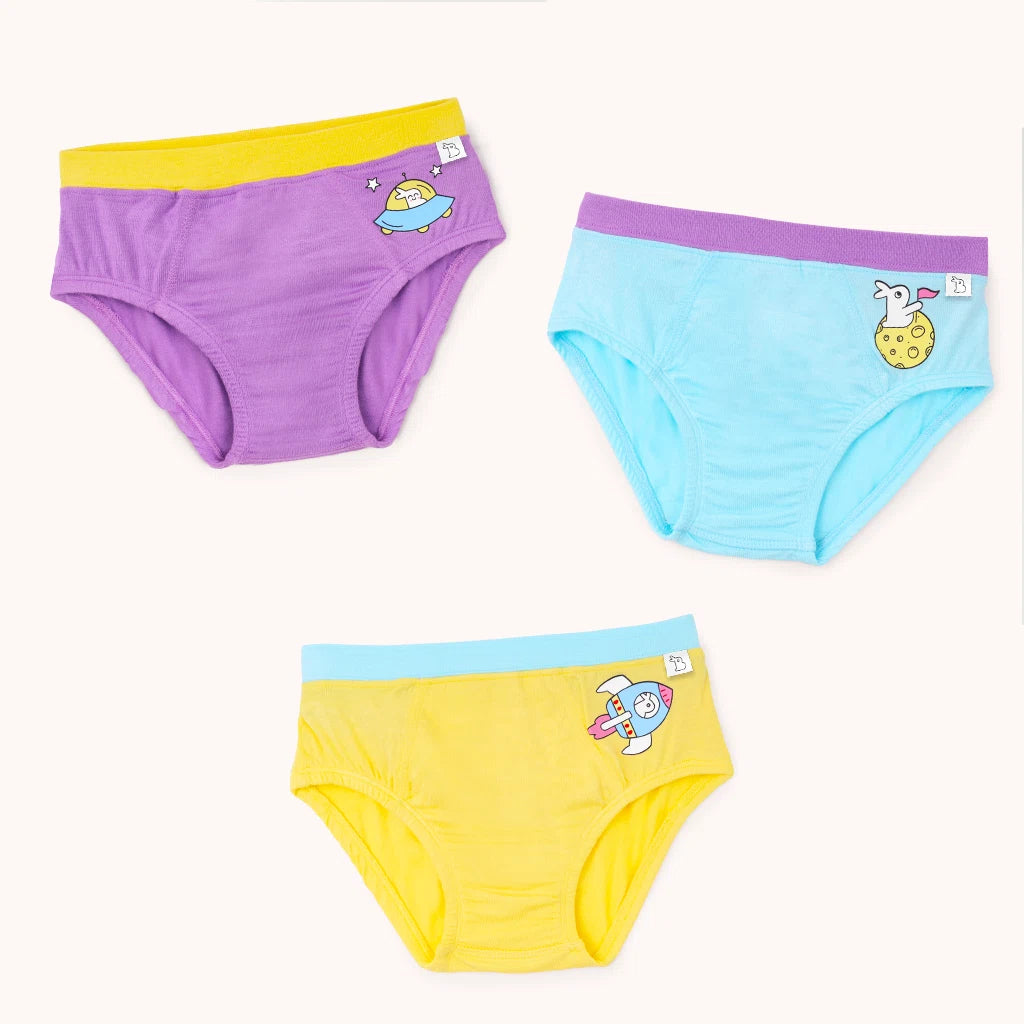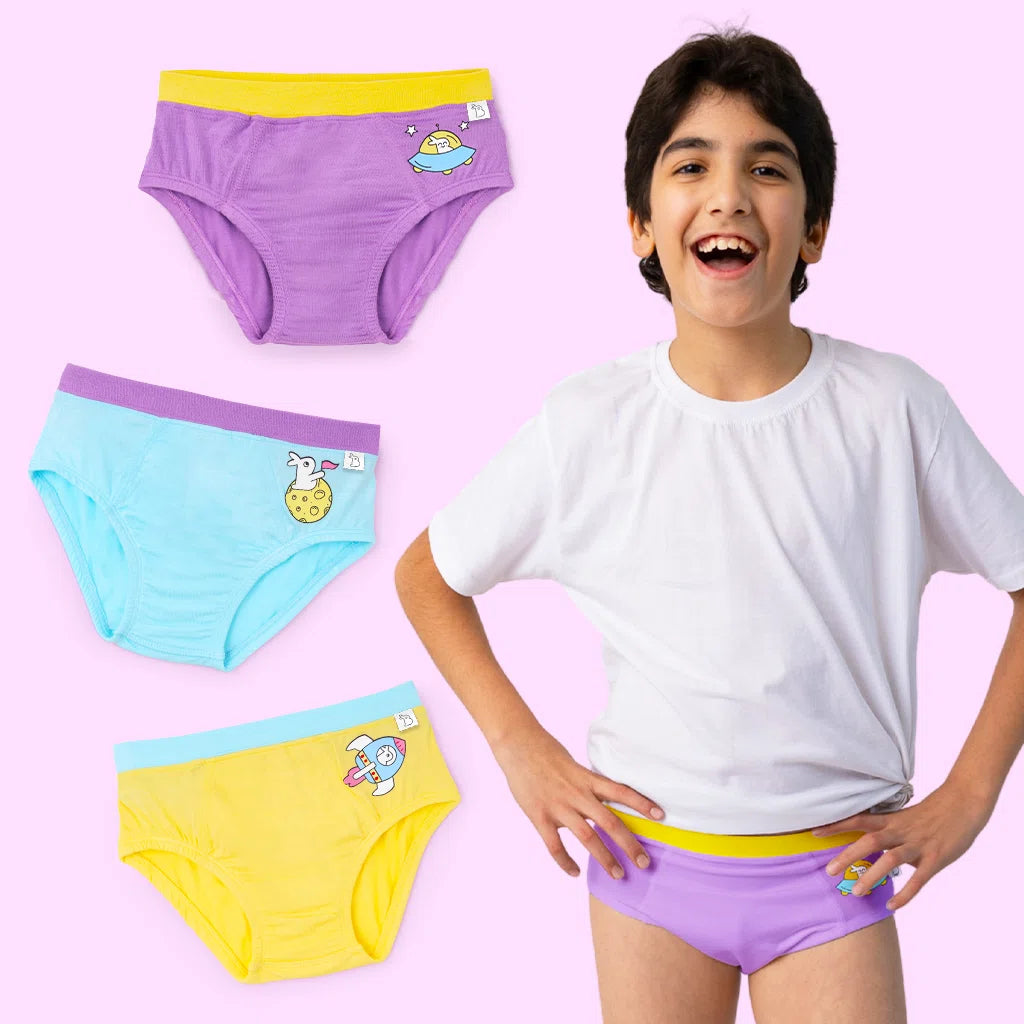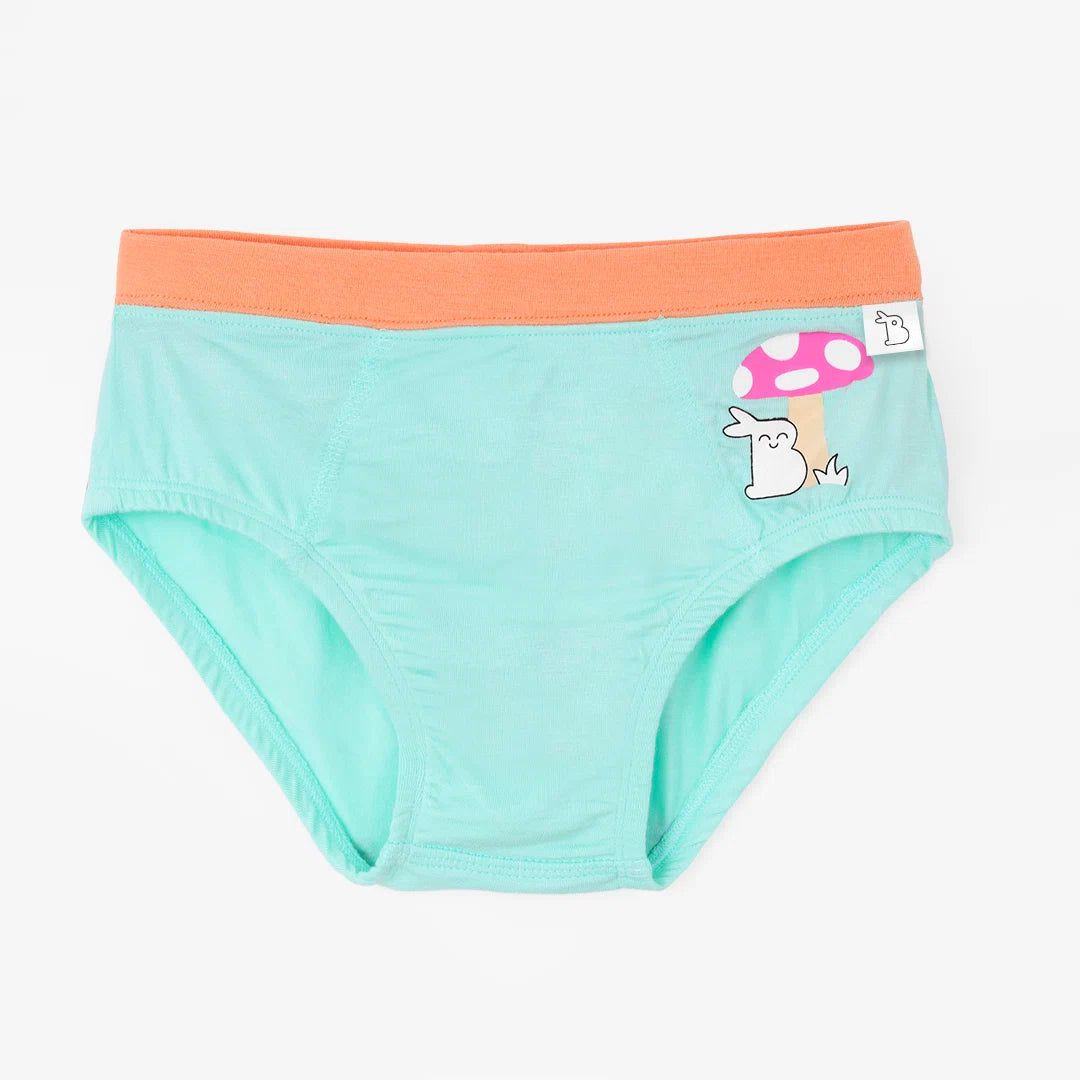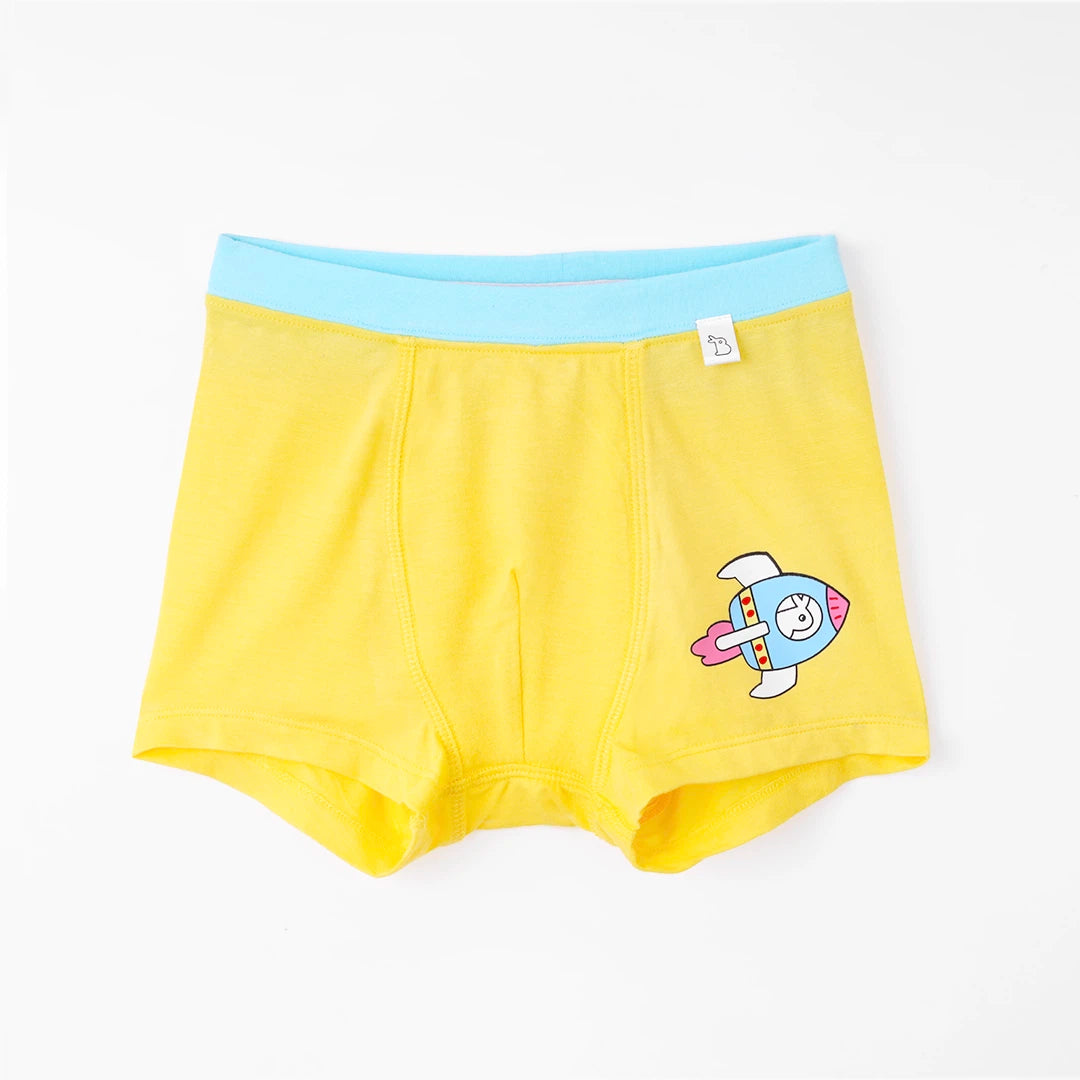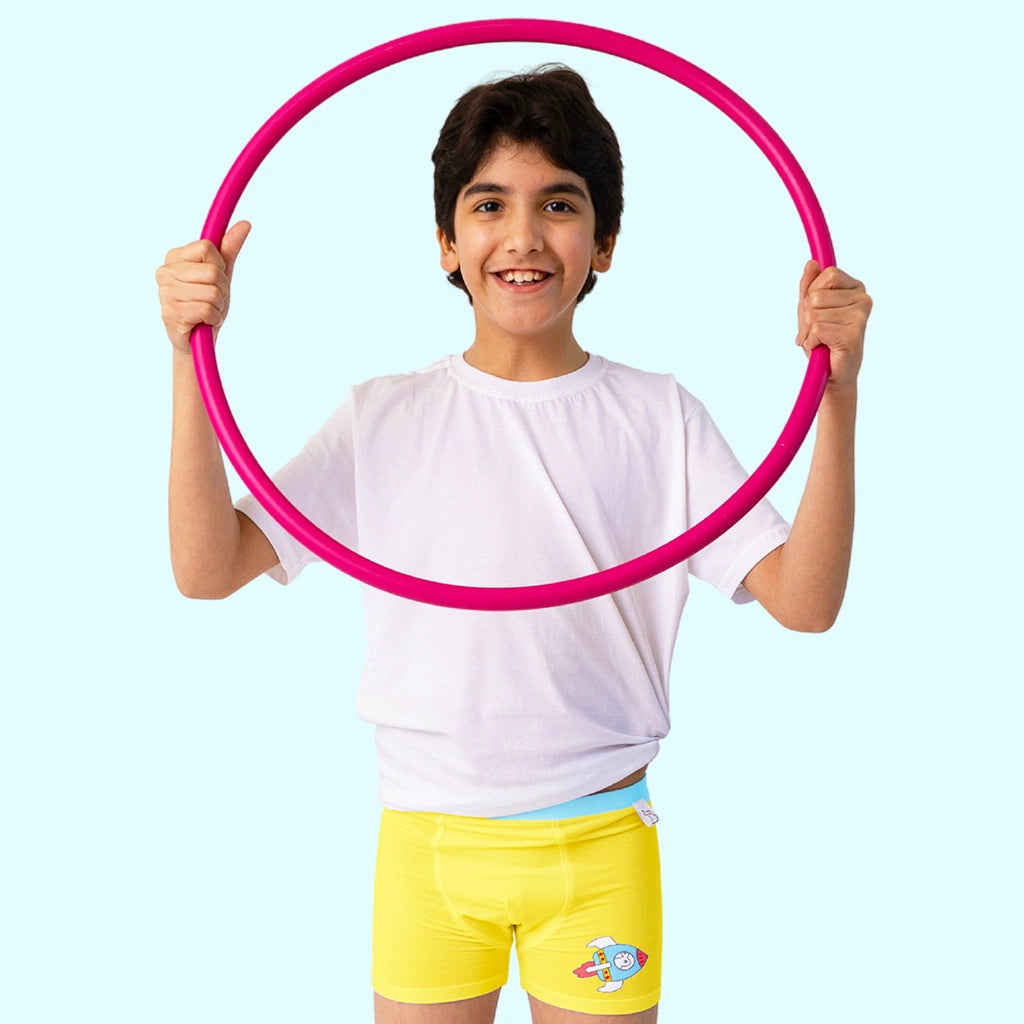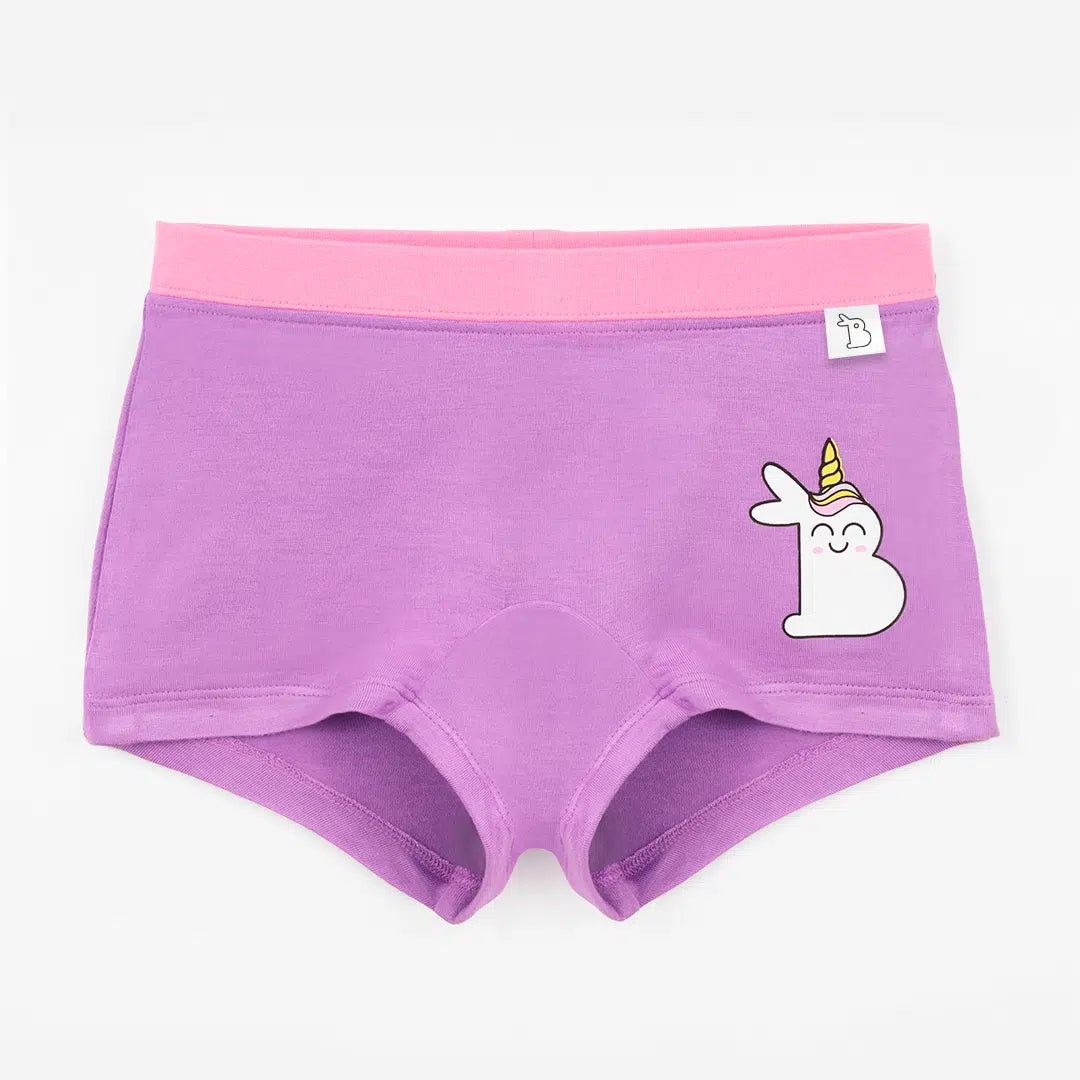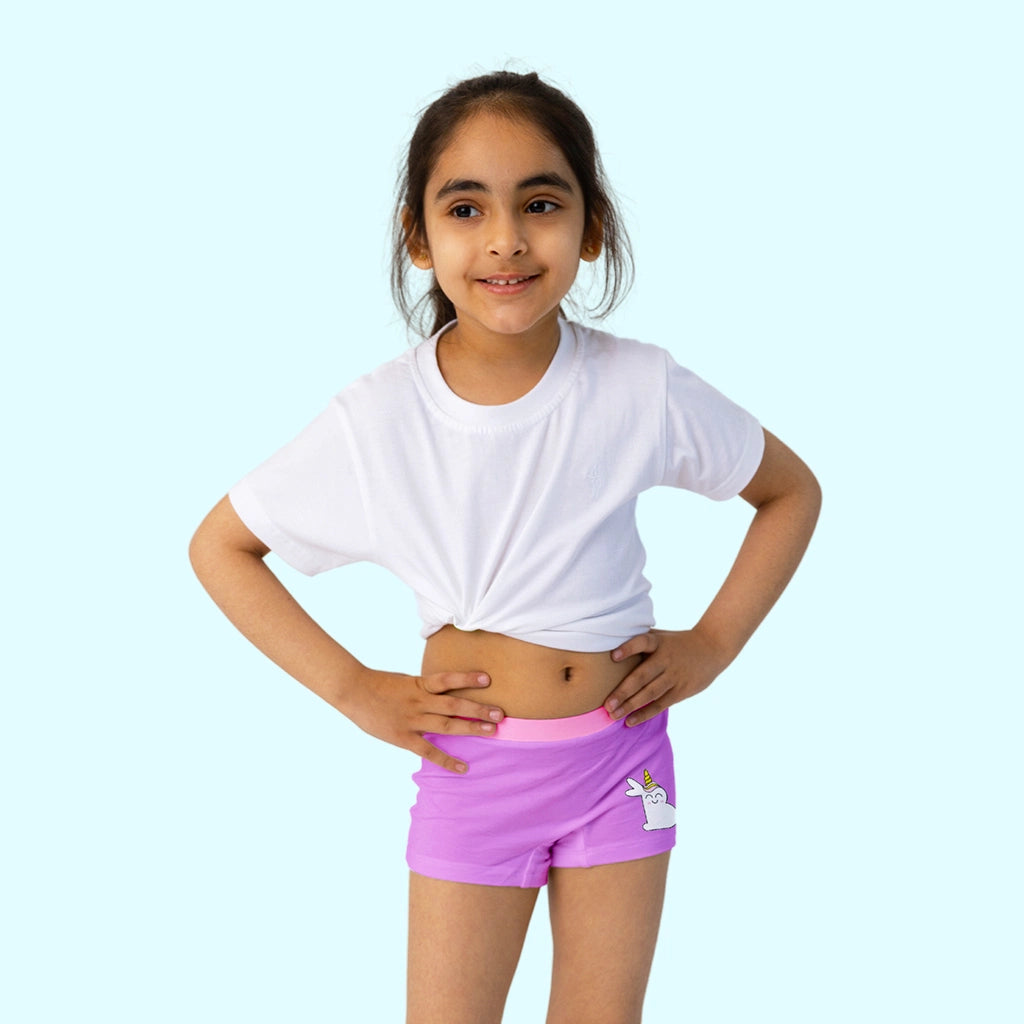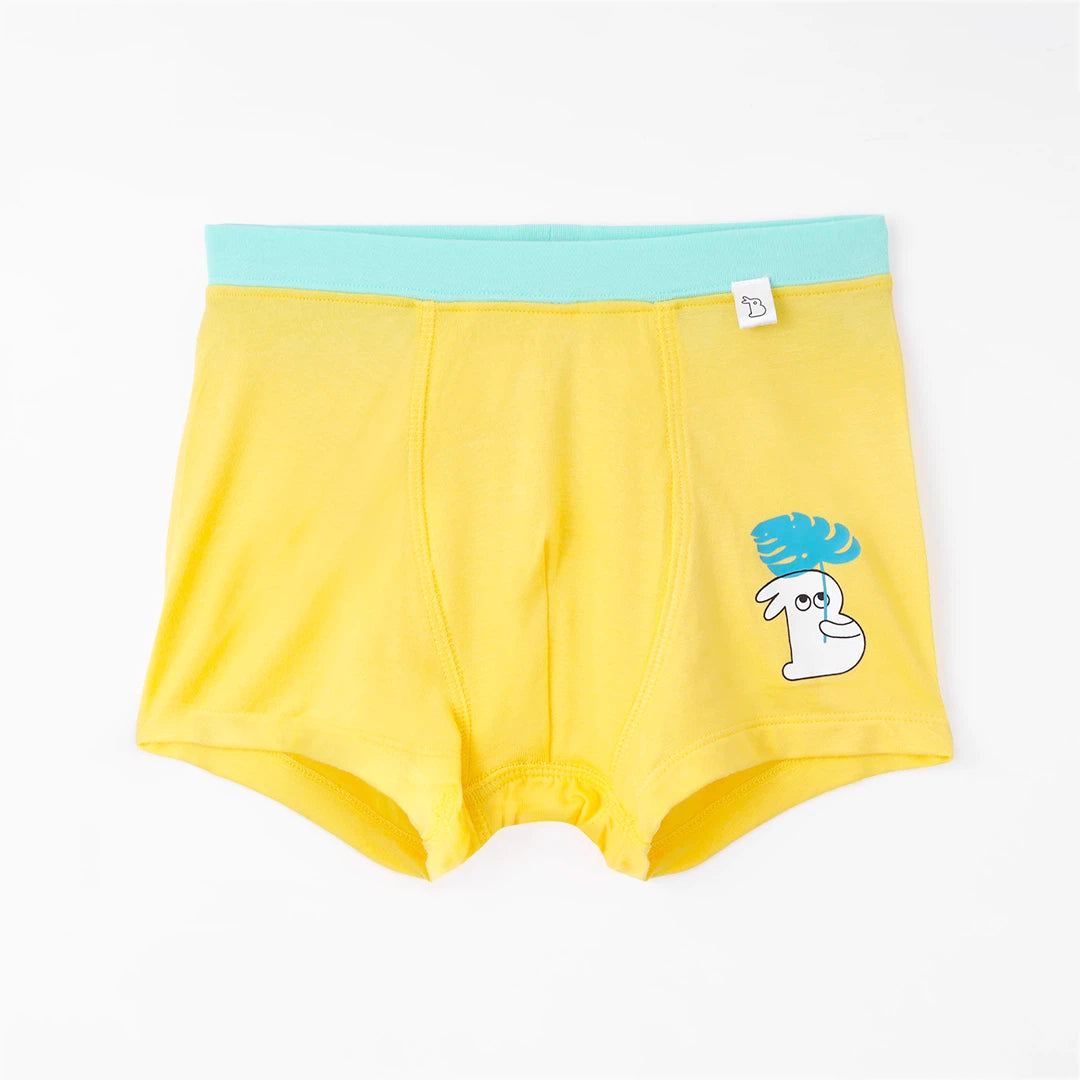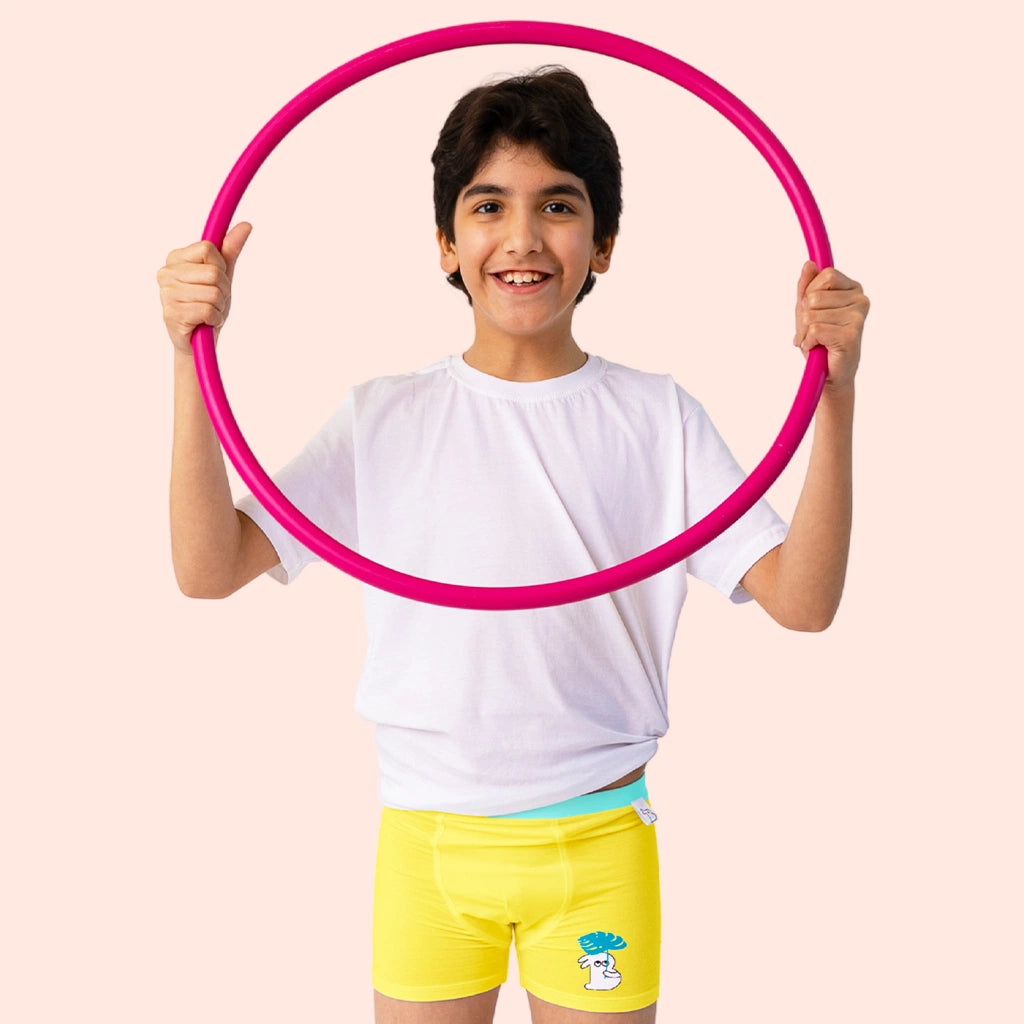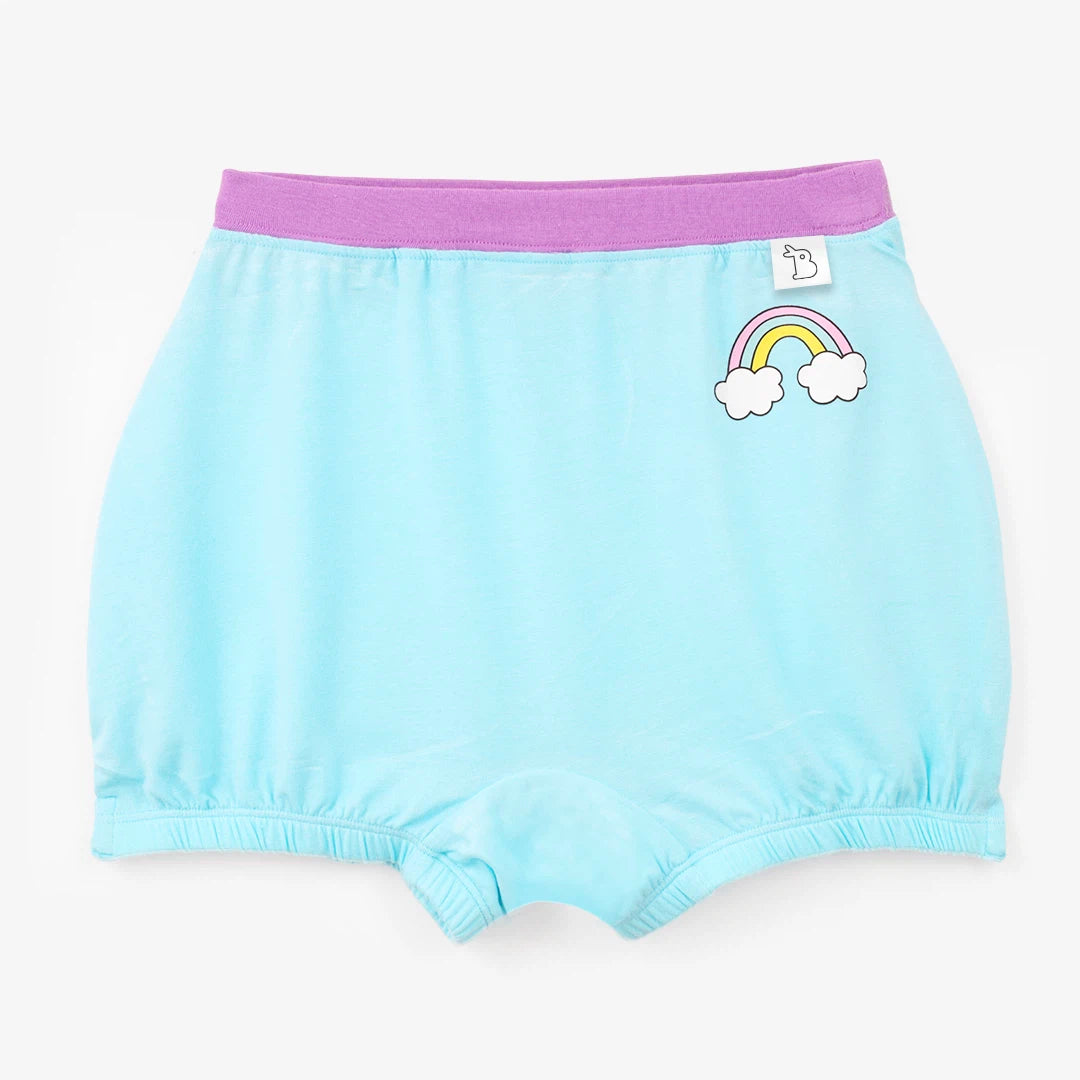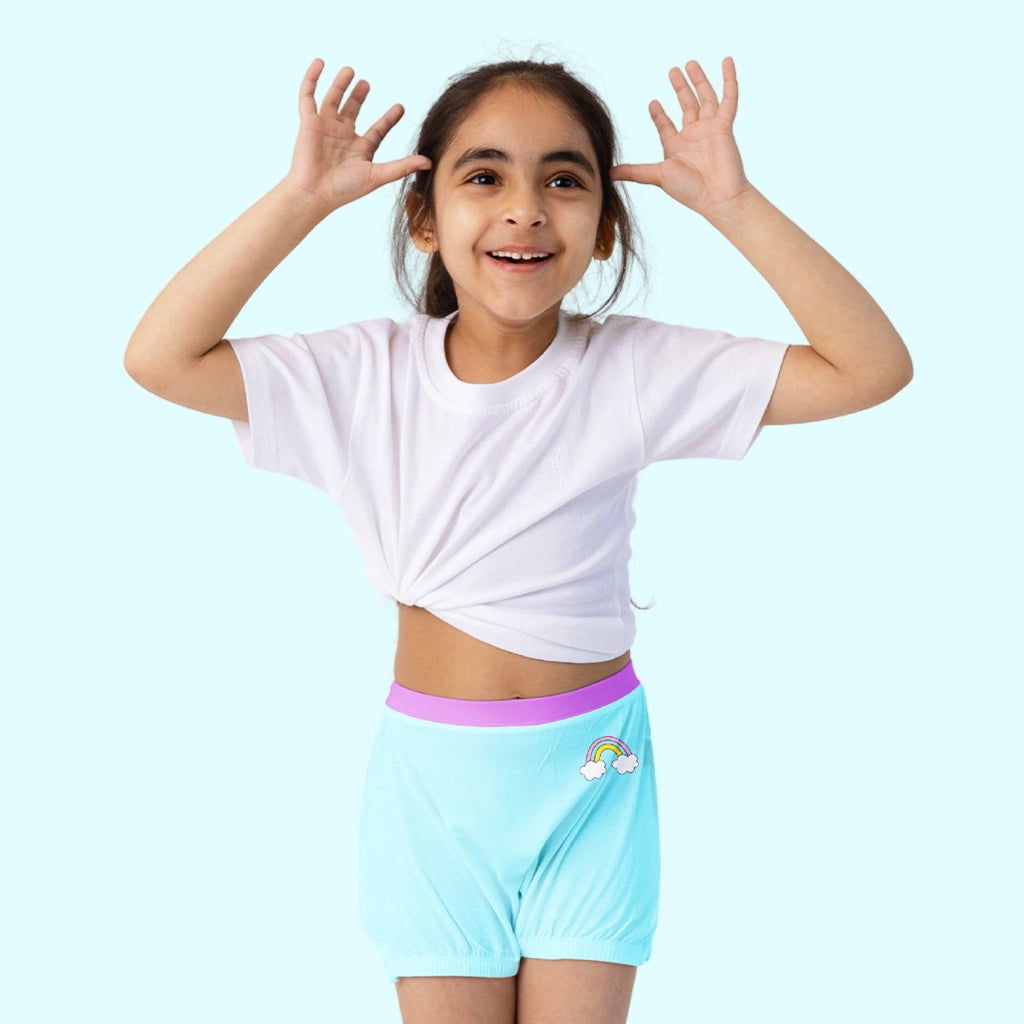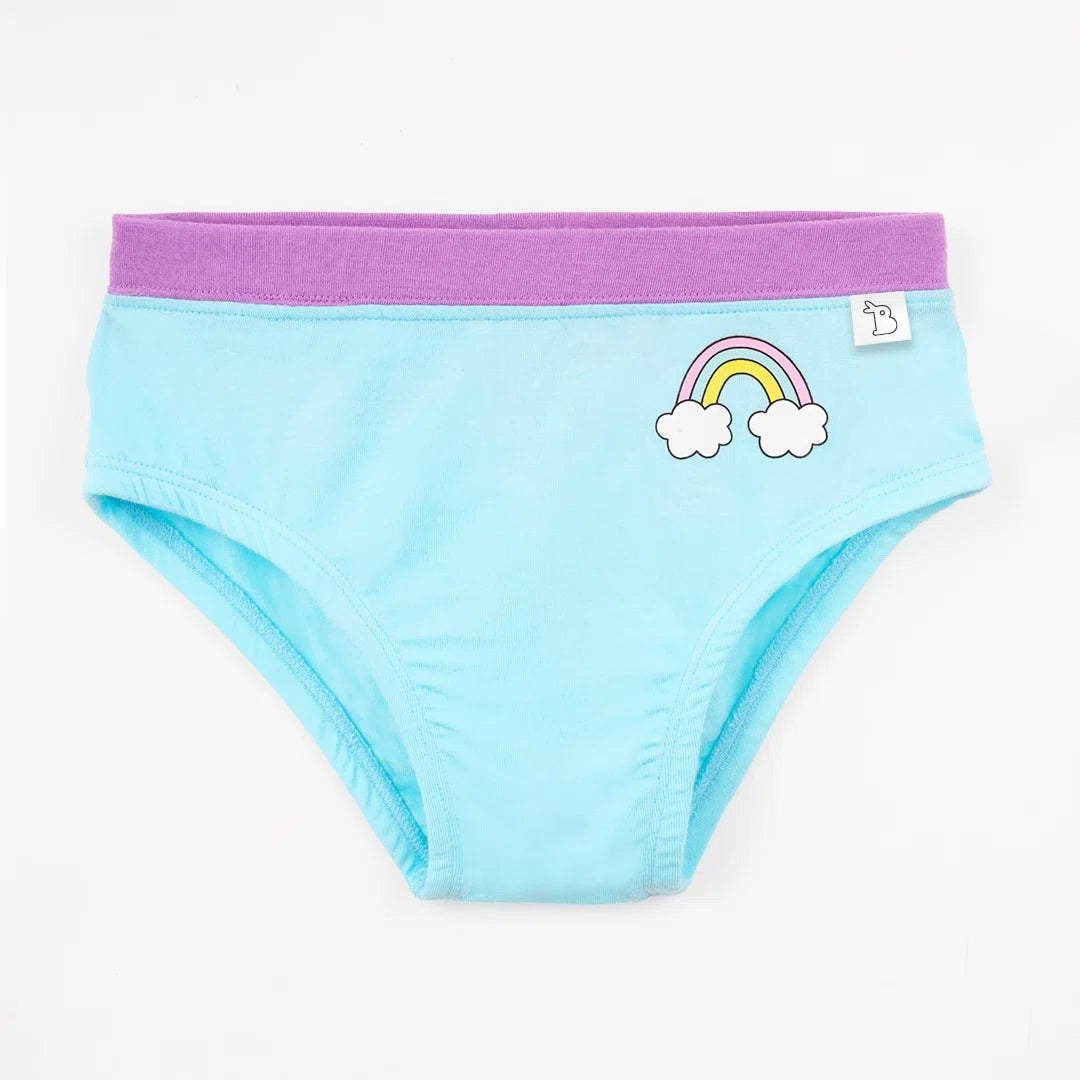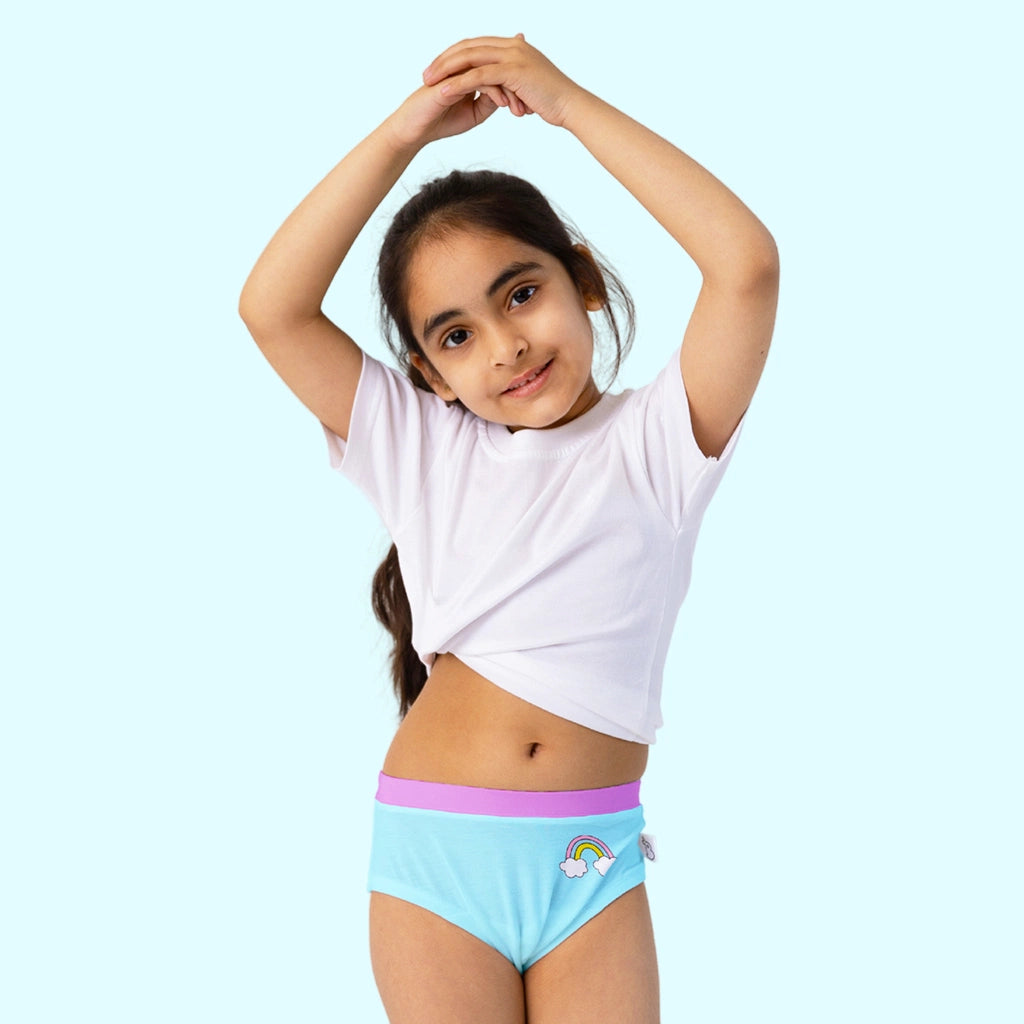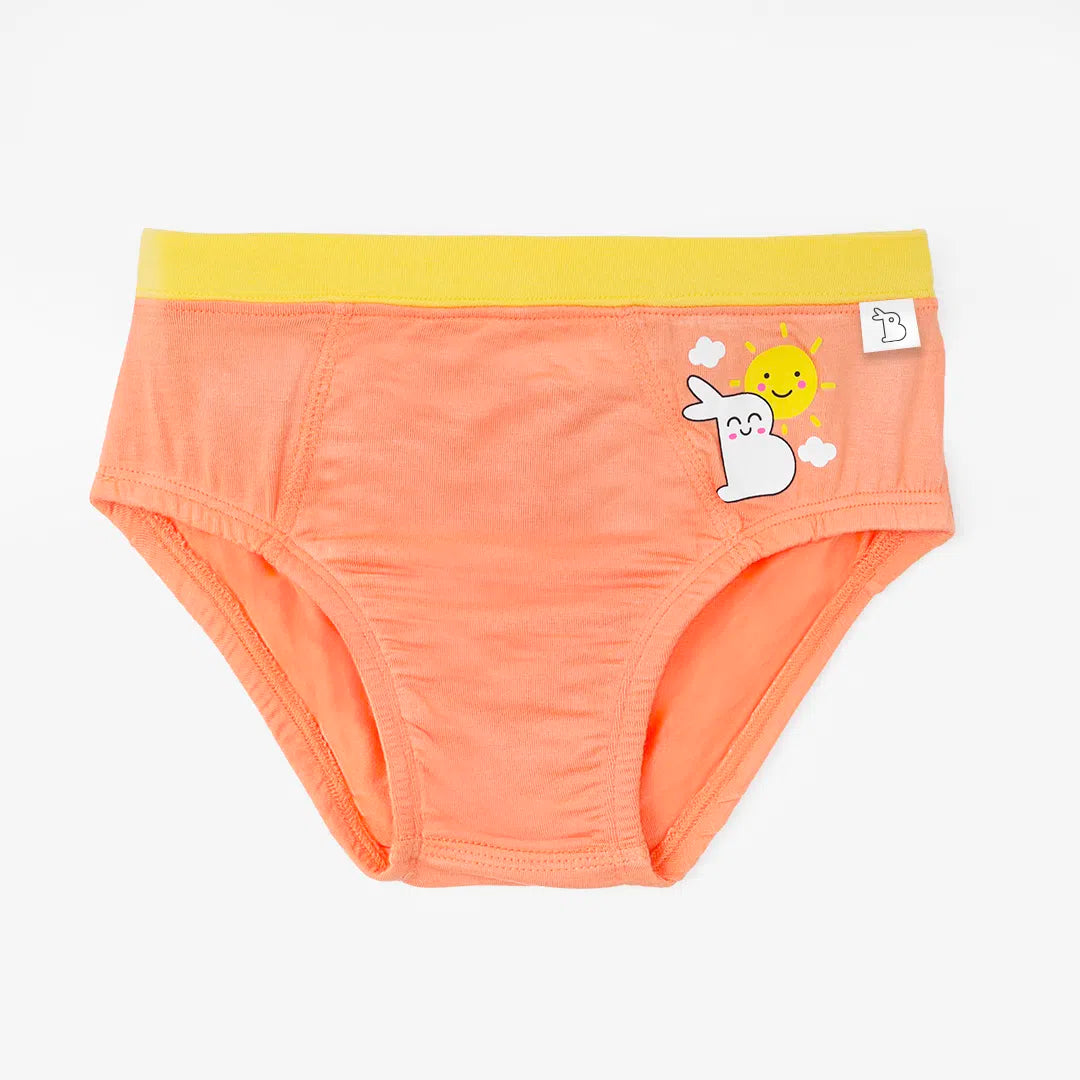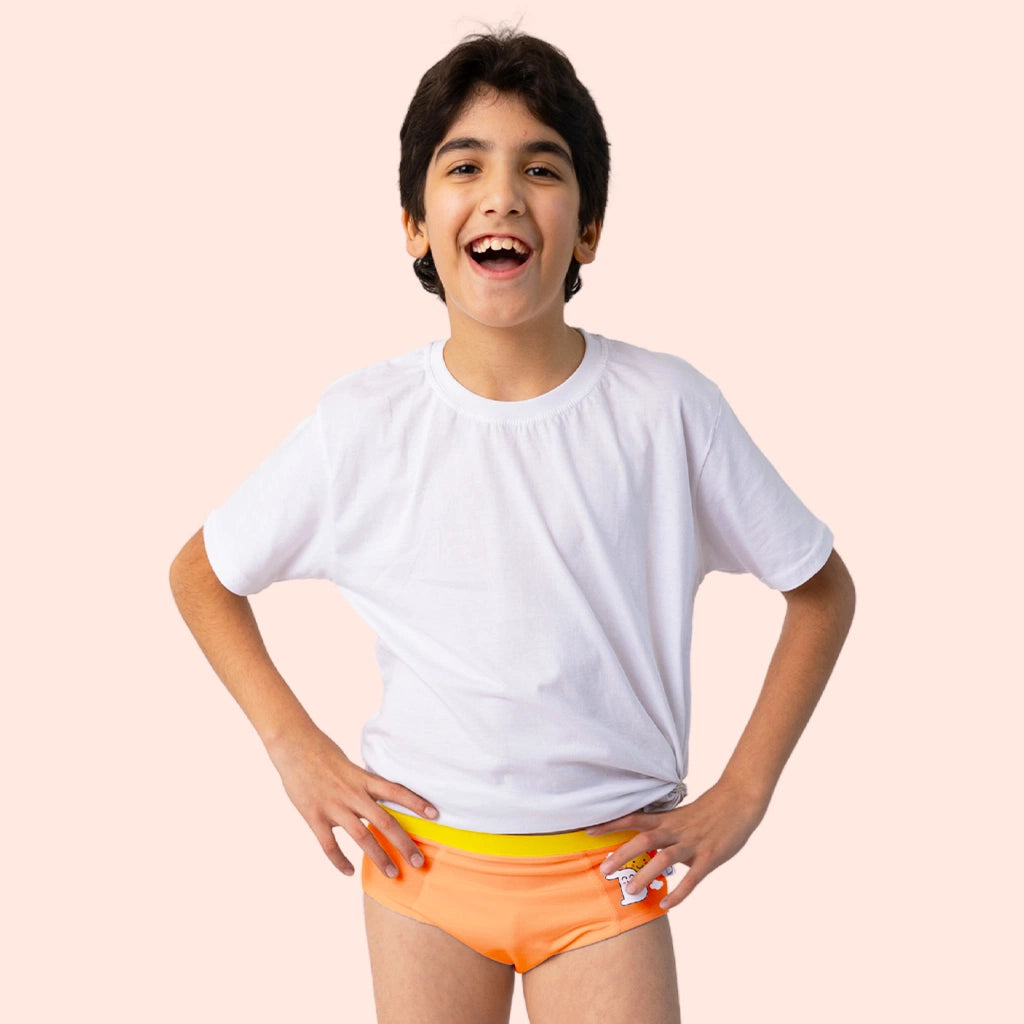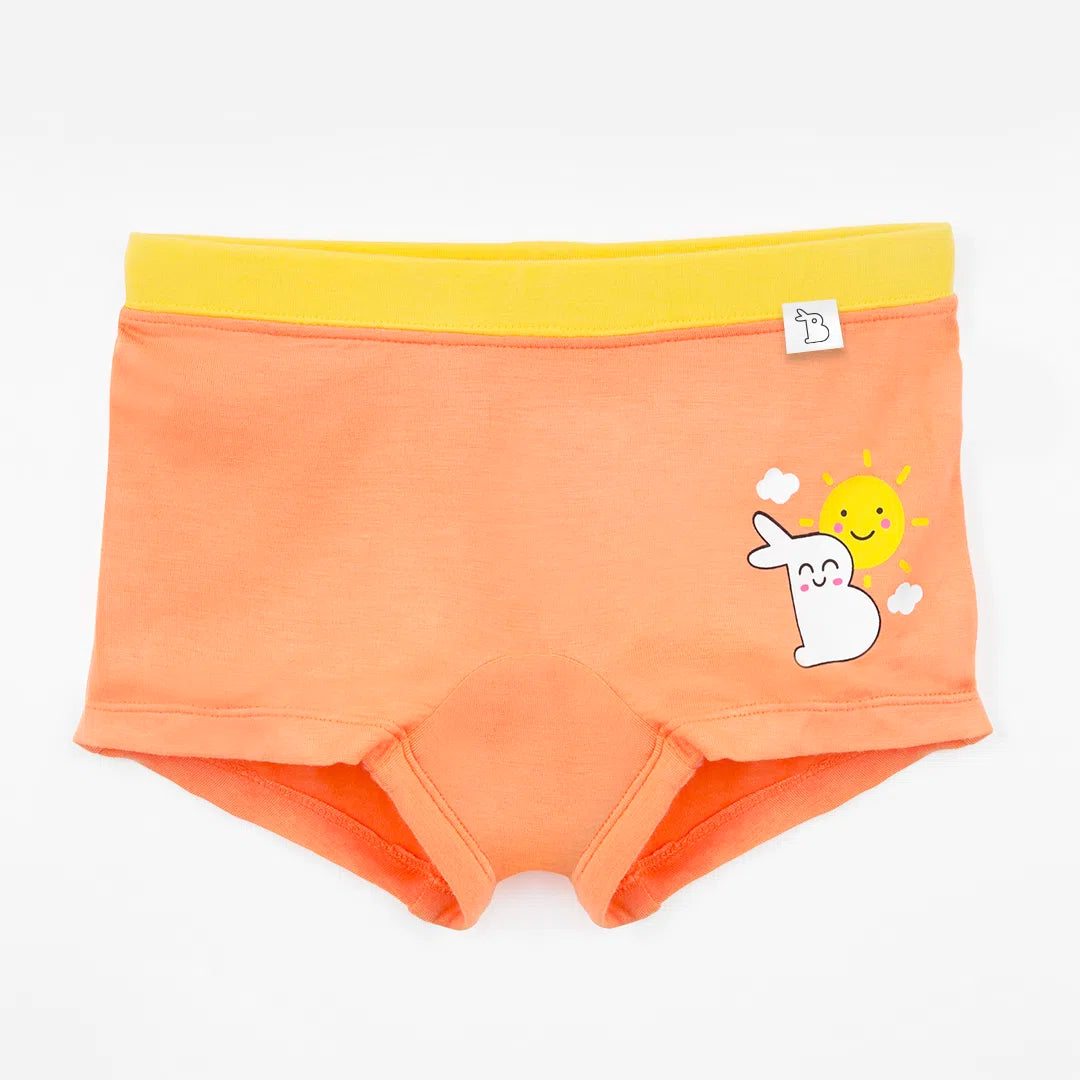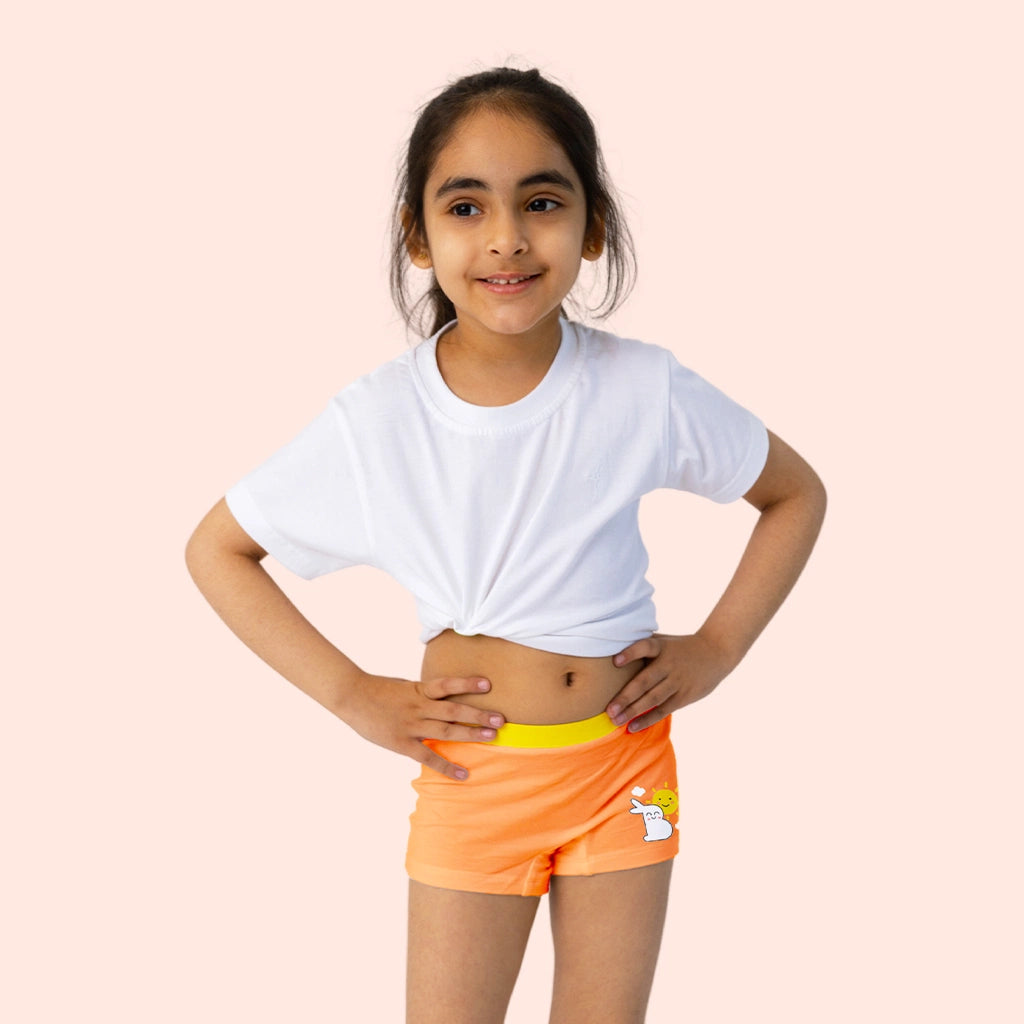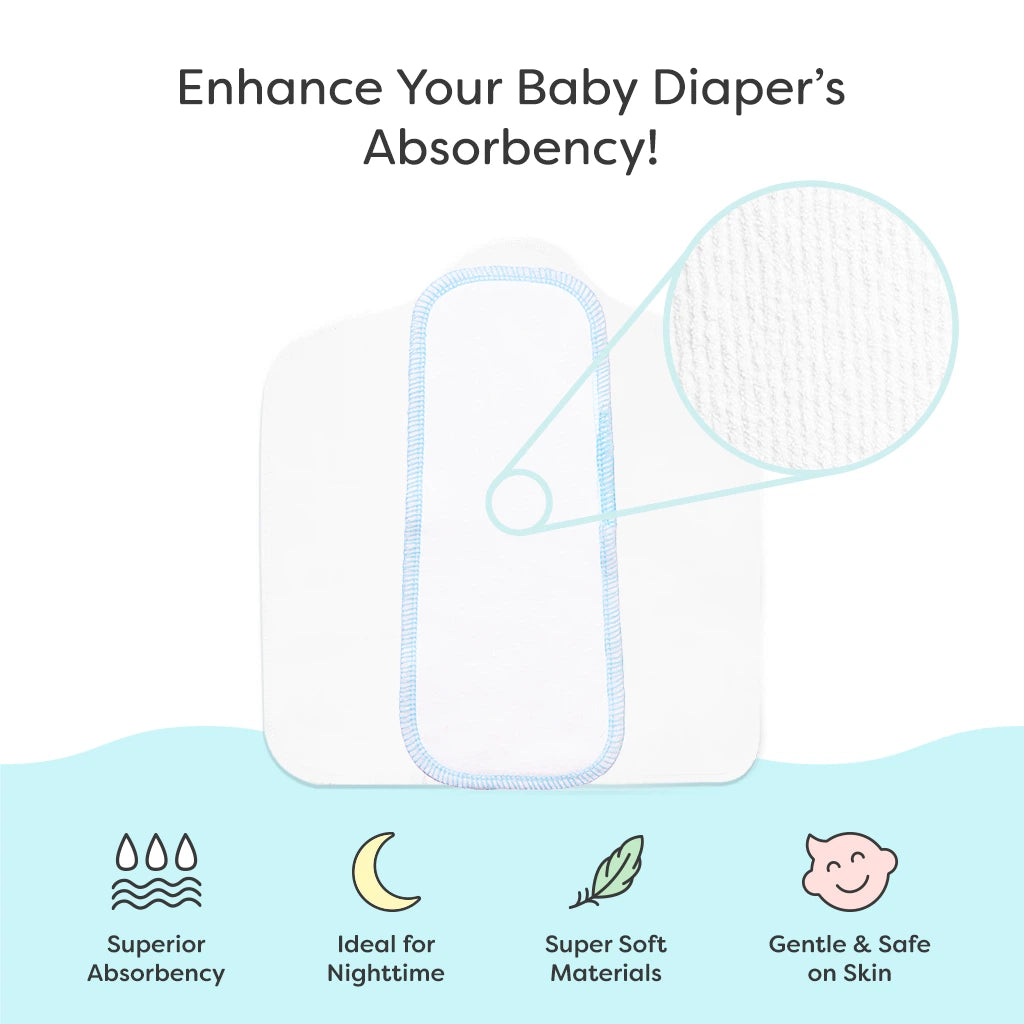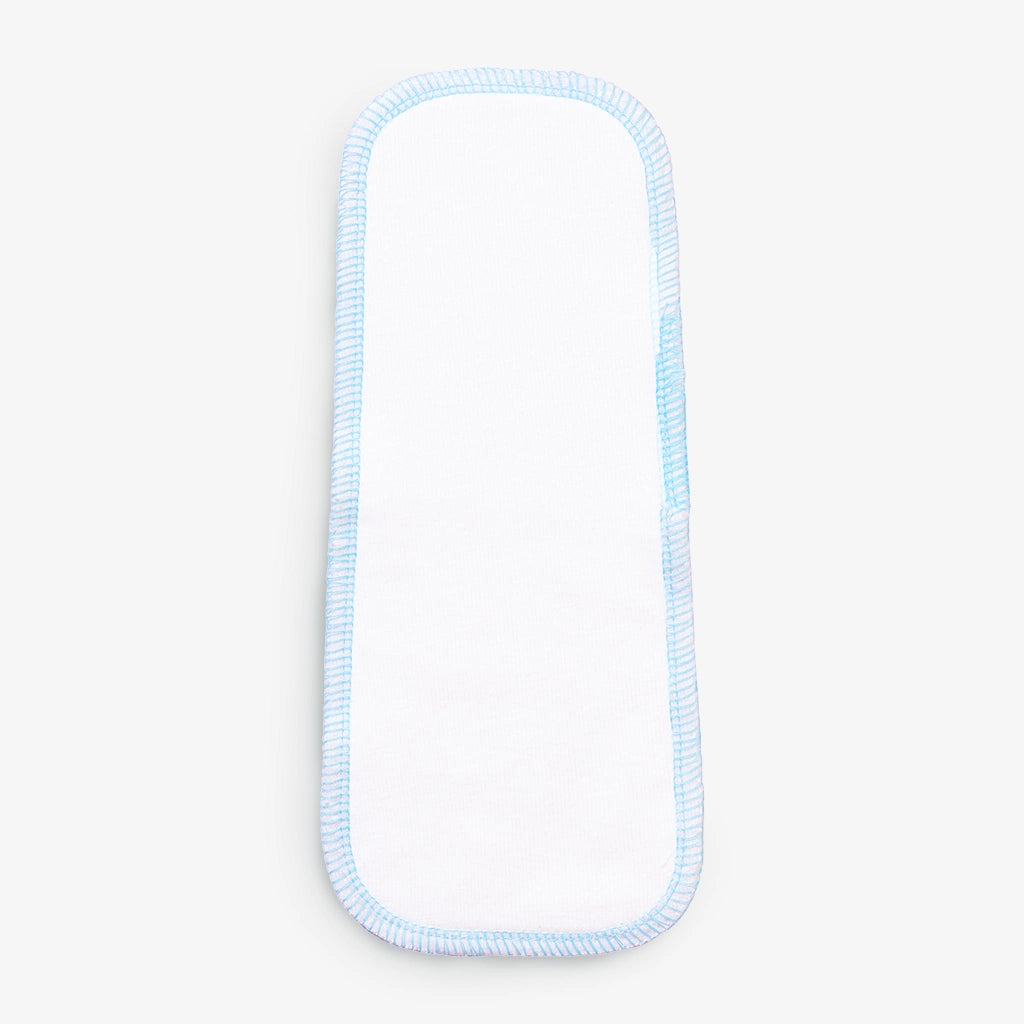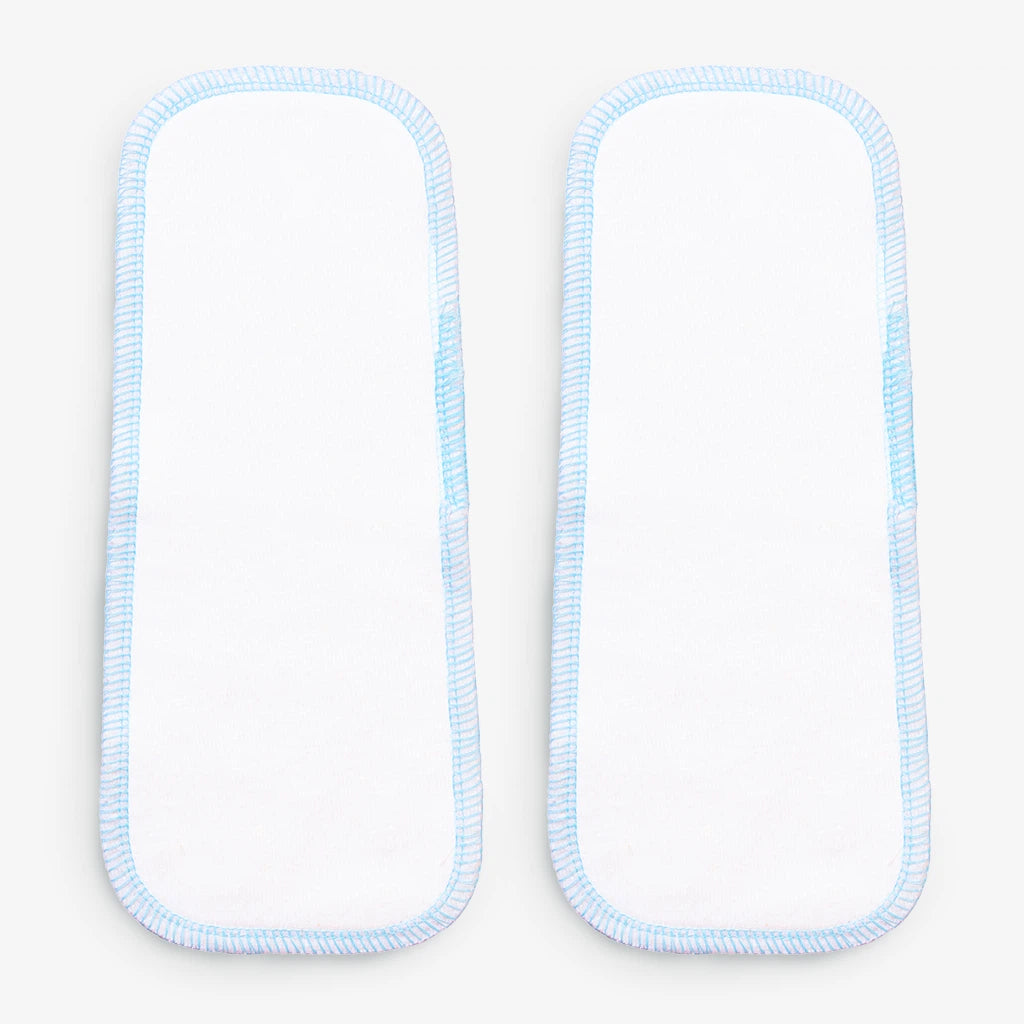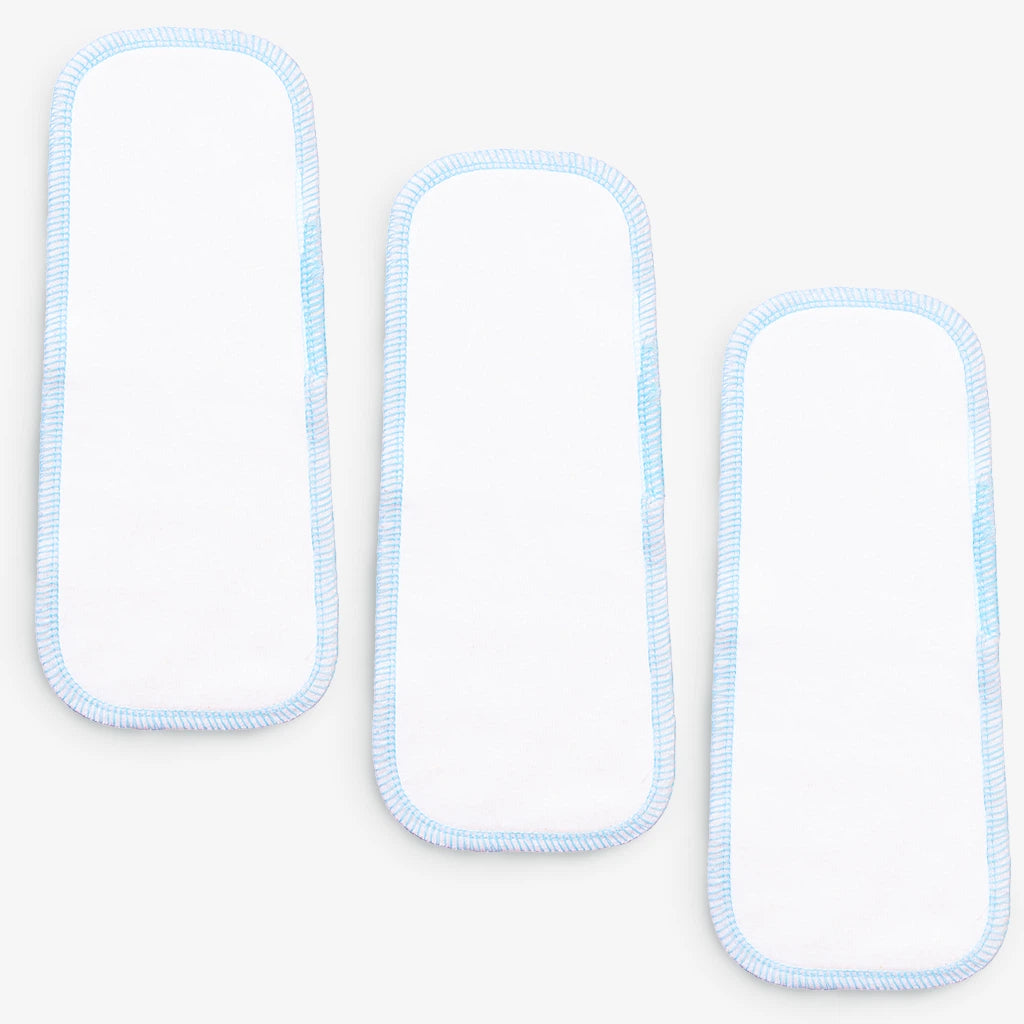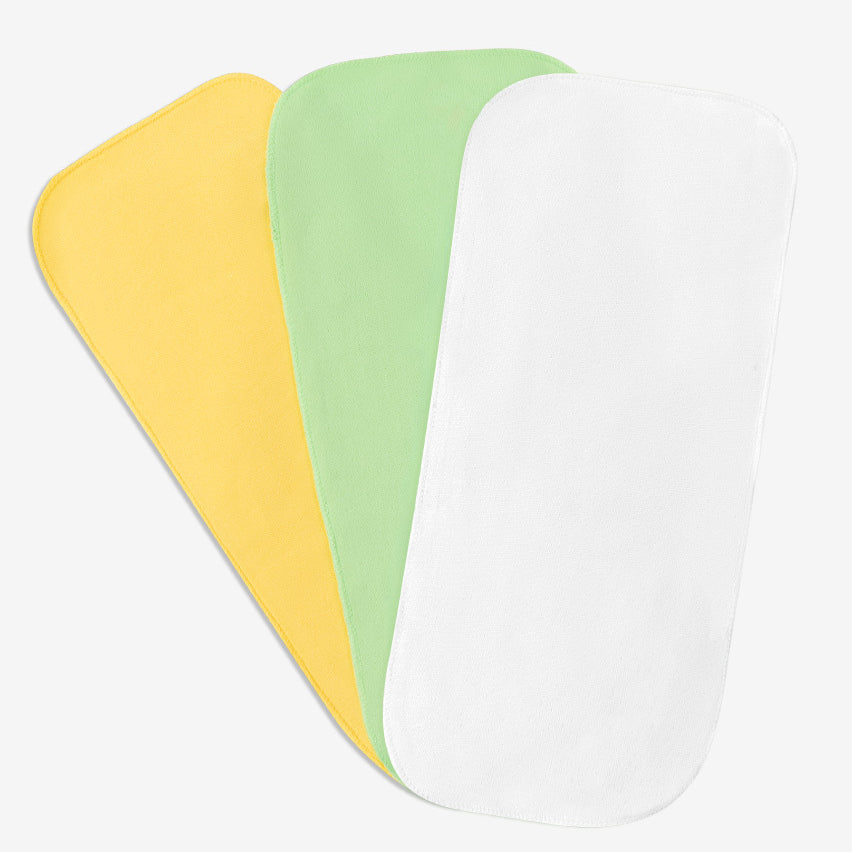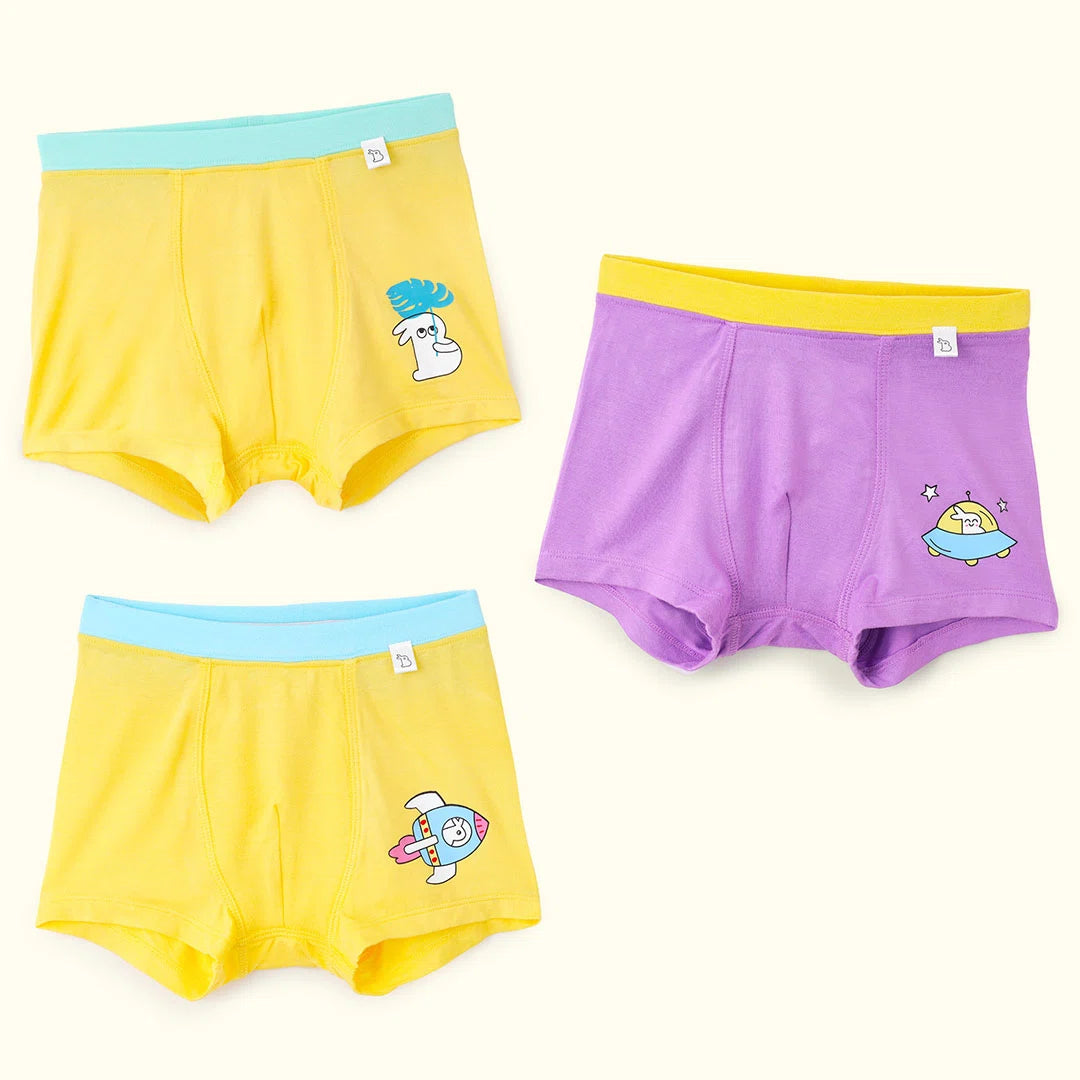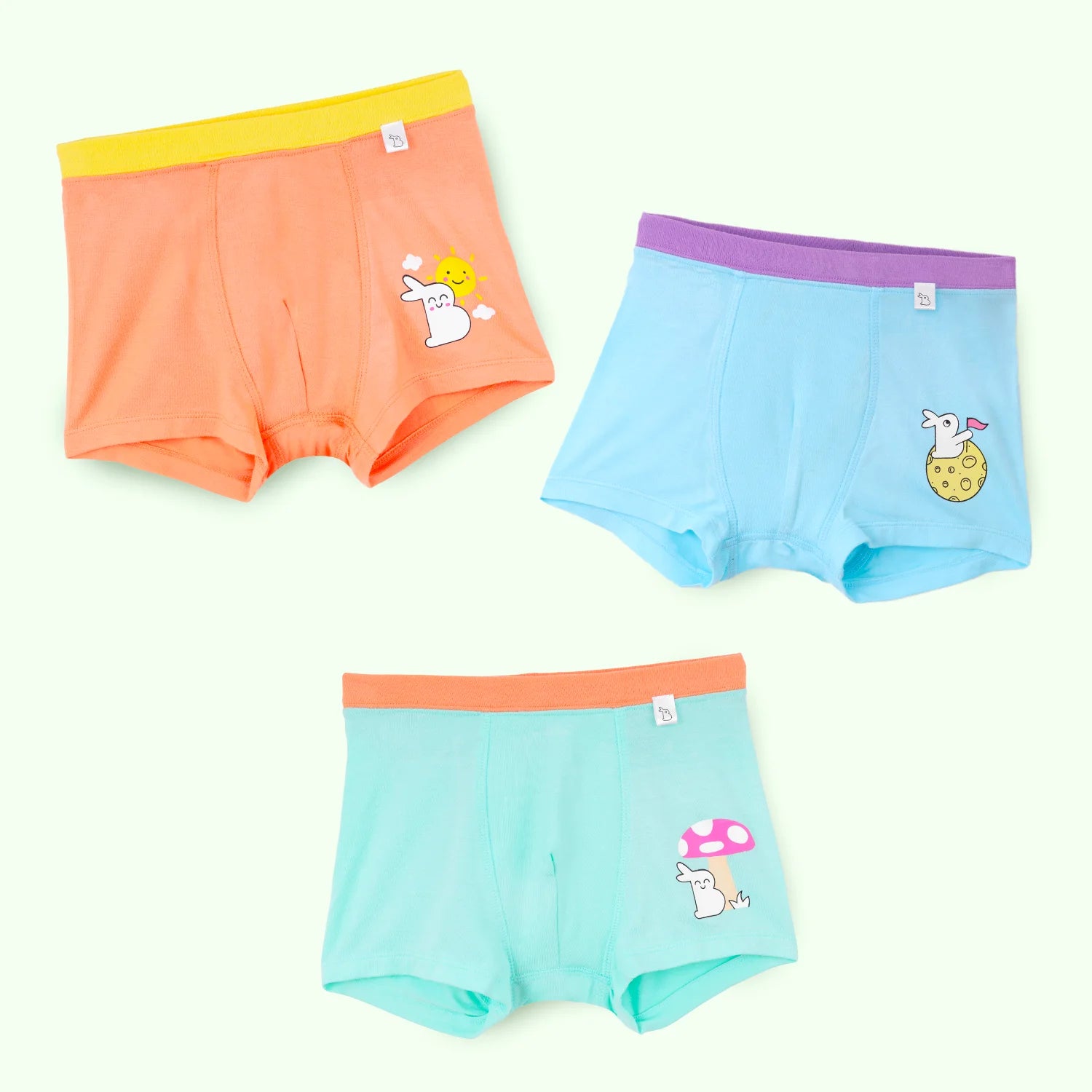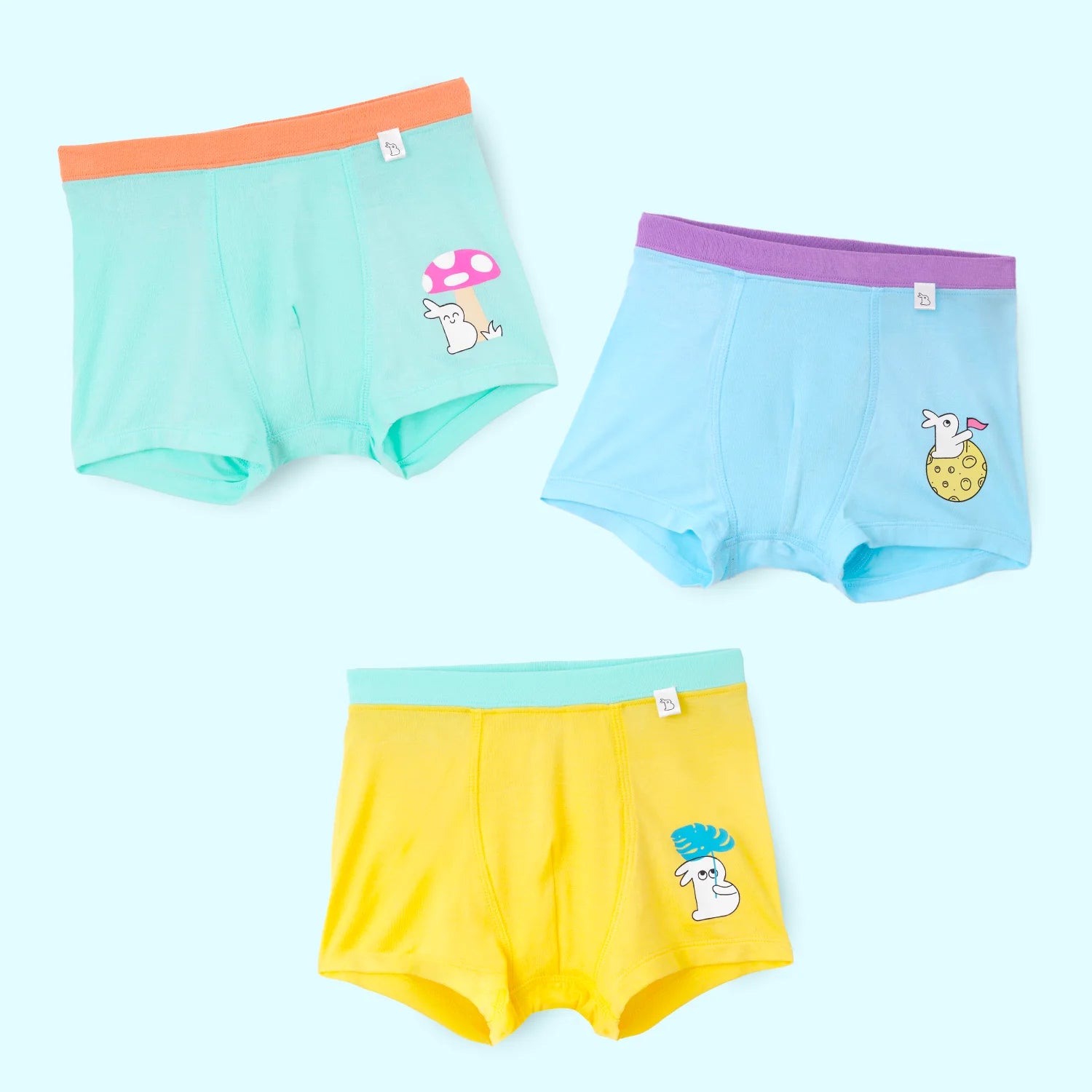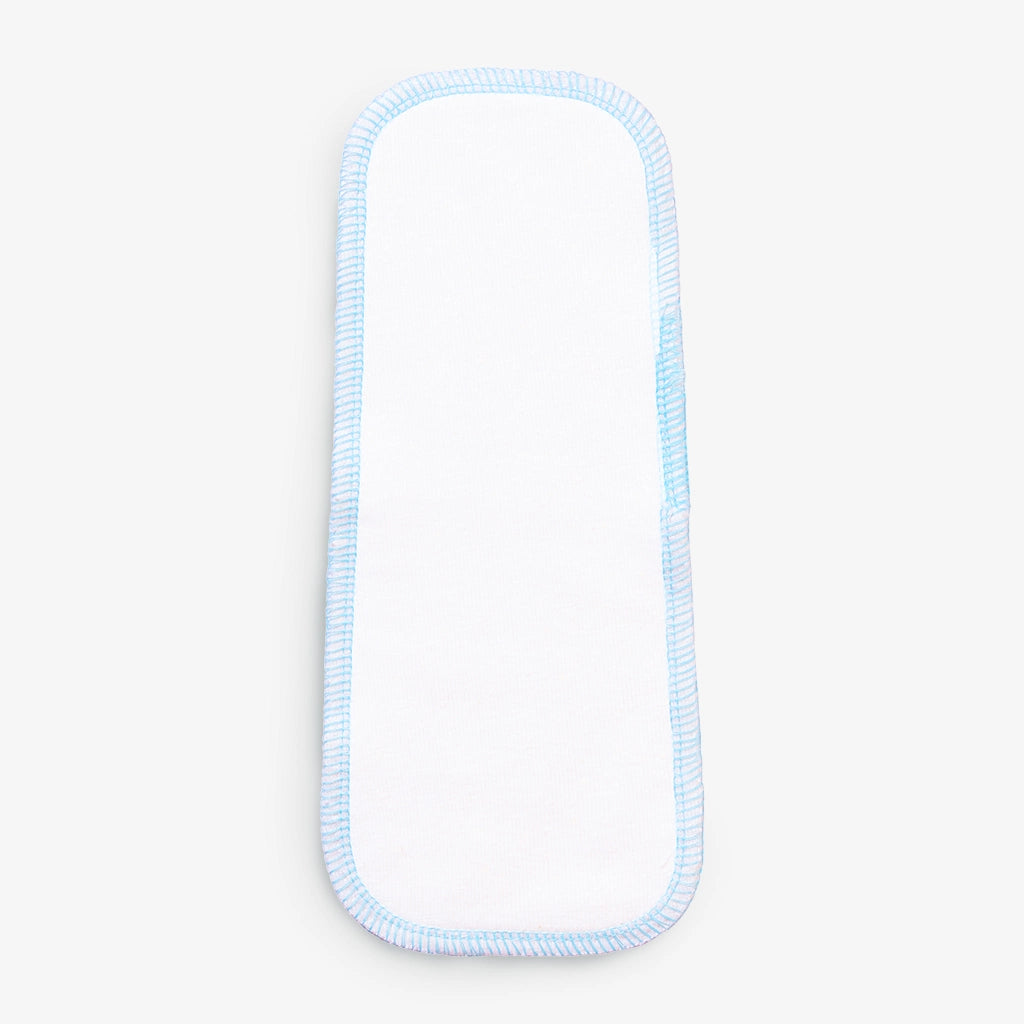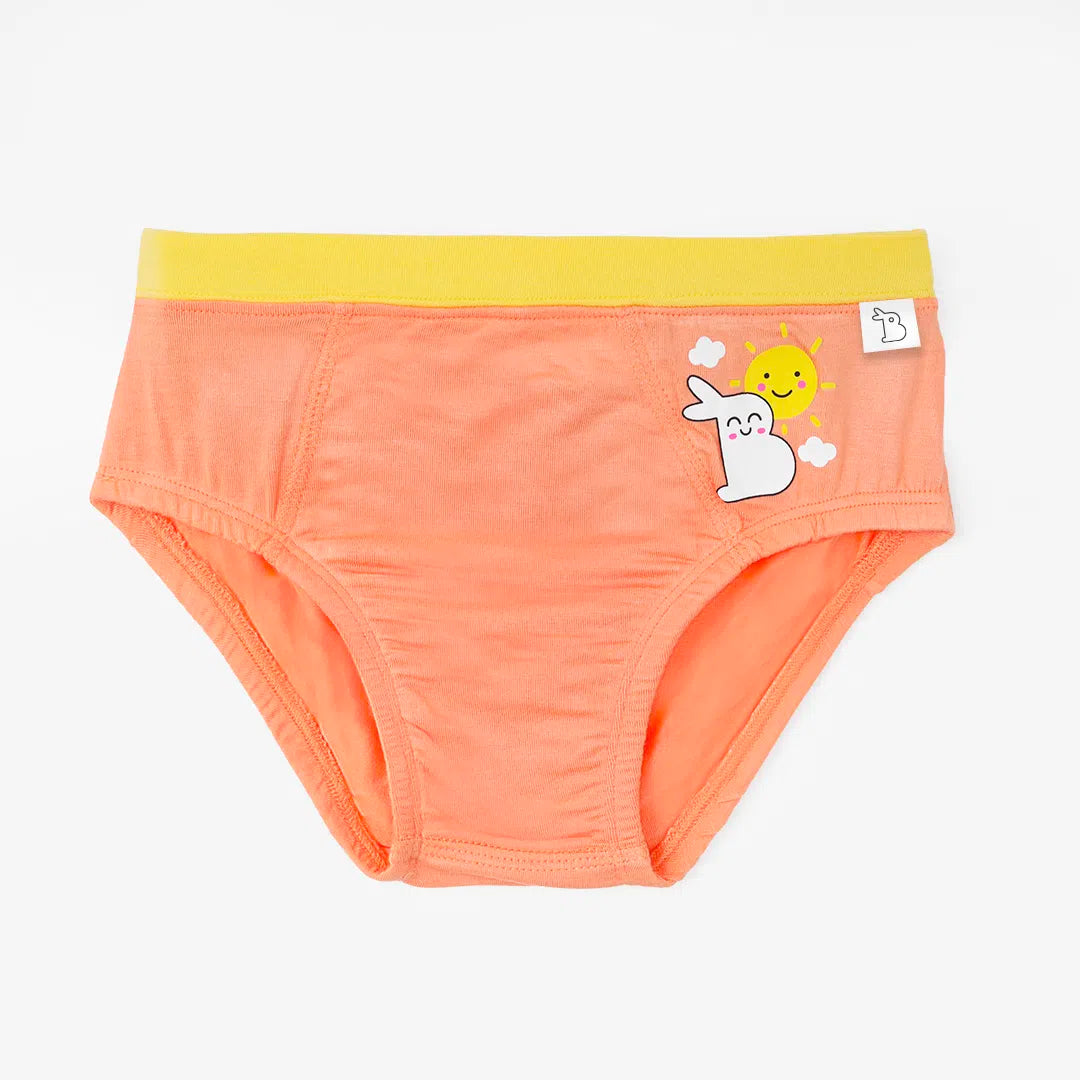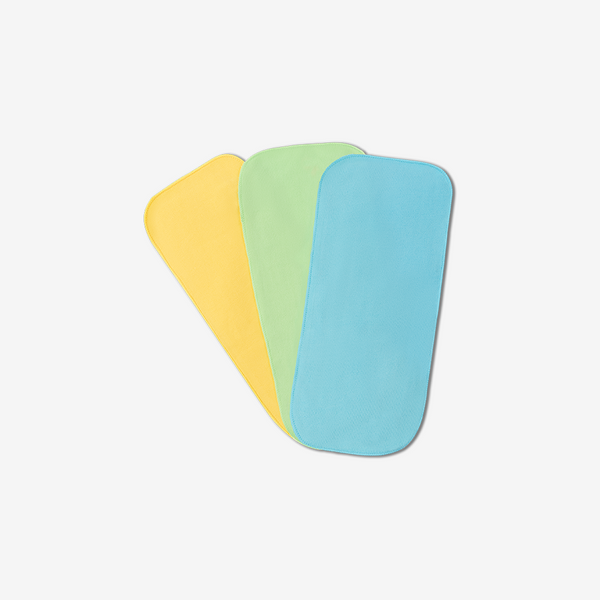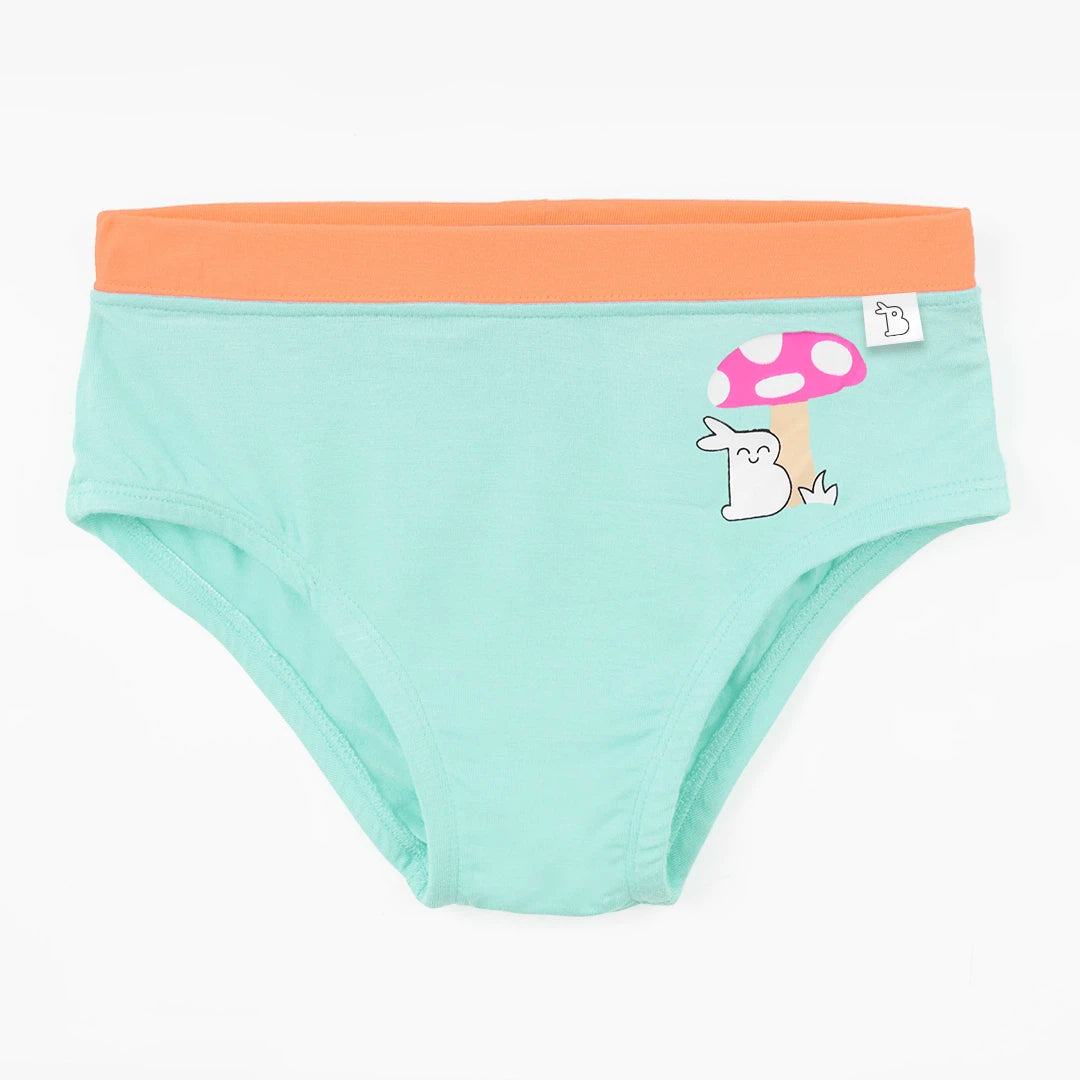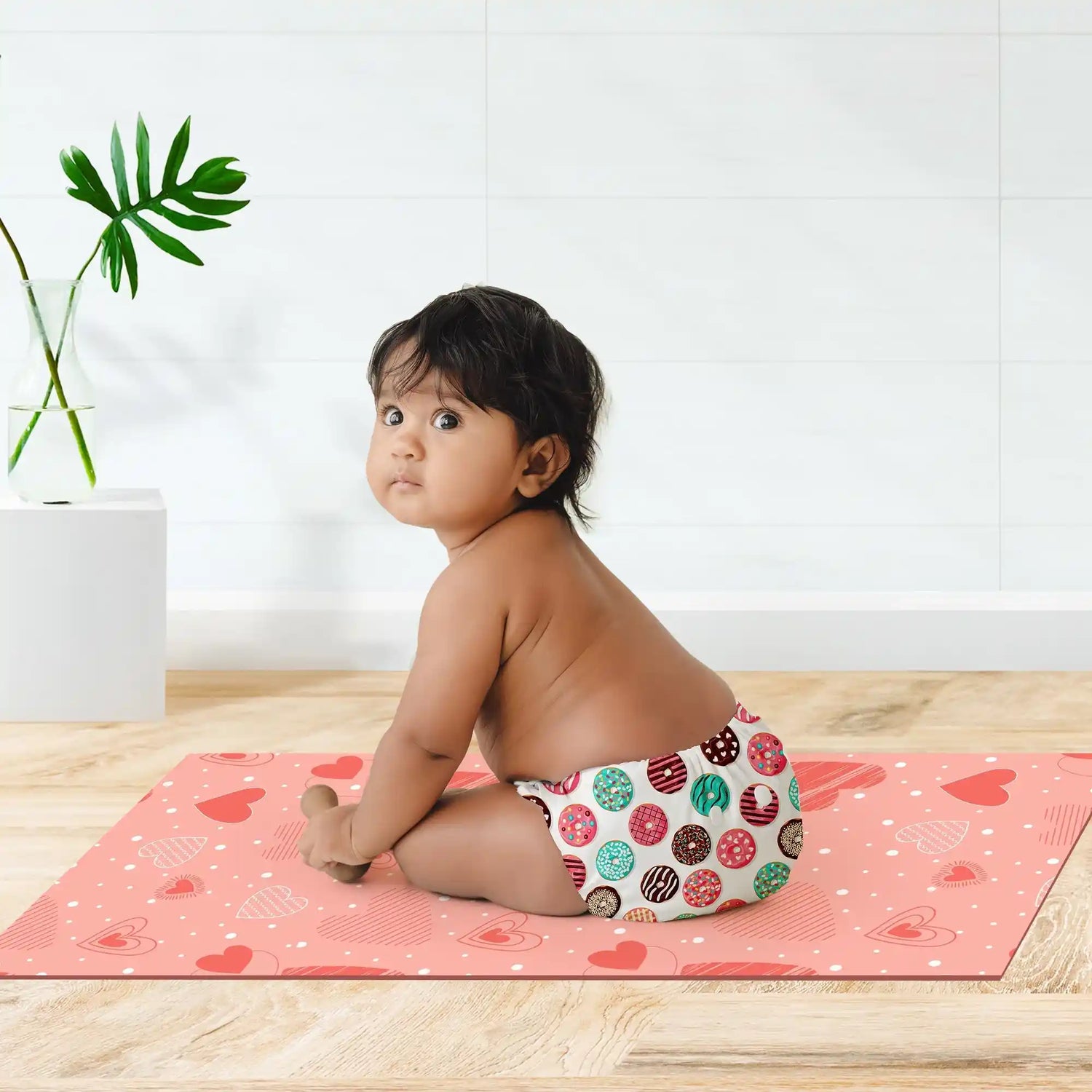- Introduction
- When to Start Potty Training
- Preparing for Potty Training
- Potty Training Techniques
- Choosing The Right Potty Training Pants
- Key Takeaways
- FAQs
- Message from SuperBottoms
Potty training is one of the most significant achievements of childhood. However, your child must be both biologically and emotionally prepared before he can master it. Using the toilet is an important skill that increases your child's independence and confidence. The goal of potty training pants is to teach your children how to recognise the sensations in their bodies that indicate they need to use the toilet, how to use the potty, how to put on and take off garments, and how to wash their hands thoroughly.
The most important thing to remember is that while potty training your child, you must be aware that the process will result in accidents while they are in their baby training pants. Continue reading to find out how to prepare your child for potty training quickly and which are the best toilet training pants for babies.
When to Start Potty Training
Signs Your Child is Ready for Potty Training
- Shows interest: Your child may show interest in using the potty by pointing at it, trying to sit on it, or imitating you.
- Dry periods: Your child may stay dry for longer periods, such as two hours or more.
- Regular bowel movements: Your child may have predictable bowel movements.
- Communicates needs: Your child may be able to communicate their needs, such as saying "potty" or pointing to their diaper.
Average Age for Potty Training
The average age for potty training is between 2 and 3 years old. However, it's important to remember that every child is different, and there is no one-size-fits-all approach.
Individual Differences and Readiness
Some children may be ready for toilet training earlier or later than others. Factors that can influence readiness include:
- Physical development: Your child's physical development, such as bladder and bowel control, plays a role in potty training readiness.
- Cognitive development: Your child's cognitive development, including their ability to understand and follow instructions, can also impact their readiness.
- Emotional readiness: Your child's emotional readiness, such as their willingness to cooperate and try new things, is important for successful potty training.
It's best to wait until your child shows signs of readiness before starting potty training. This will make the process smoother and less stressful for you and your child.
Preparing for Potty Training
Before we understand how to potty train your baby, let us understand some basics that you will need to know before you begin:
Creating a Positive Environment
- Make potty training fun: Create a positive and encouraging atmosphere around potty training. Use age-appropriate books, songs, or games to make it enjoyable for your child.
- Involve the whole family: Encourage other family members to support your child's potty training efforts.
- Choose a designated potty spot: Select a convenient and comfortable location for your child's potty.
Gathering Necessary Supplies
- Potty chair or trainer seat: Choose a potty that is comfortable and appealing to your child.
- Potty training pants: Potty training pants or Padded Underwear can help with the transition from diapers to underwear.
- Books and rewards: Use age-appropriate books and rewards to motivate your child.
- Cleaning supplies: Keep a supply of wipes, cleaning solutions, and a small trash can nearby.
Explaining Potty Training to Your Child
- Use simple language: Explain toilet training so your child can understand. Use age-appropriate terms and avoid using negative language.
- Be patient and supportive: Let your child know that accidents are okay and you support them.
- Read books about potty training: Many children's books can help explain potty training in a fun and engaging way.
Potty Training Techniques
Let us get straight to the point - How to do potty training.
Gradual Introduction to the Potty
- Start with short sessions: Begin by having your child sit on the potty for a few minutes. Gradually increase the duration of these sessions.
- Encourage exploration: Let your child explore the potty and get comfortable with it.
- Model good behaviour: Demonstrate how to use the potty by using it yourself or with a doll.
Positive Reinforcement and Rewards
- Reward successes: Celebrate your child's successes, no matter how small. This will encourage them to continue using the potty.
- Use a reward system: Create a reward system to motivate your child. You can use stickers, small toys, or privileges as rewards.
Setting a Routine and Schedule
- Establish a regular potty routine: Set aside specific times for your child to use the potty daily.
- Encourage them to go before activities: Remind your child to use the potty before going out, during nap time, or at bedtime.
Handling Accidents Calmly
- Stay calm and positive: Accidents are a normal part of the toilet training process. Avoid scolding or punishing your child.
- Redirect and encourage: If your child has an accident, gently remind them to use the potty next time.
- Clean up accidents quickly and efficiently: This will help to prevent further accidents and maintain a positive potty training environment.
|
Limited Offers Ending Sooner - BUY NOW Now or never offers live on the SuperBottoms website. Take advantage of the never-before Good Value for Money on our offer page! Stock up on the bestselling UNO diapers, accessories and other popular SuperBottoms baby and mom products now available in deals and discounts. HURRY, the Deals are Live till stocks last! |
Choosing the Right Potty Training Pants
Types of Potty Training Pants
- Disposable potty training pants: These are similar to regular disposable diapers but are designed to be more absorbent and provide feedback when wet.
- Reusable potty training pants: Reusable potty training pants are made from materials like cotton or bamboo and can be washed and reused.
Factors to Consider When Choosing Potty Training Pants
- Absorbency: Look for potty training pants that are highly absorbent to prevent leaks and accidents.
- Comfort: Choose soft, comfortable, and easy to pull up and down pants.
- Fit: Ensure the potty training pants fit your child properly to prevent leaks and discomfort.
- Price: Consider your budget when choosing potty training pants. Disposable pants may be more expensive in the long run, while reusable pants require an initial investment.
Benefits of Using Potty Training Pants
- Transitional step: Potty training pants can help your child transition from diapers to underwear.
- Feedback mechanism: Many potty training pants are designed to provide feedback when wet, helping your child learn to recognise the feeling of needing to use the potty.
- Reduced mess: Potty training pants can help to contain accidents, making cleanup easier.
- Environmental benefits: Reusable potty training pants can be a more sustainable option than disposable ones.
Key Takeaways
- Potty training is a gradual process that requires patience and understanding. It's important to wait until your child shows signs of readiness and to create a positive and supportive environment.
- Choosing the right potty training pants can make the transition smoother. Consider factors such as absorbency, comfort, and fit when selecting potty training pants.
- Consistency, positive reinforcement, and handling accidents calmly are essential for successful potty training. Establish a routine, reward your child's successes, and avoid negative consequences for accidents.
FAQs:-
Q1 – What is the correct toilet training age?
Ans – The average age for potty training is between 2 and 3 years old. However, it's important to remember that every child is different, and there is no one-size-fits-all approach. It's best to wait until your child shows signs of readiness before starting potty training.
Q2 - How long does it typically take to potty train a child?
Ans - Potty training can take a few weeks to a few months. The process varies depending on the child's individual readiness and your approach to potty training.
Q3 - What should I do if my child has bowel movement problems during potty training?
Ans - If your child has difficulty with bowel movements, consult your paediatrician for advice. They may recommend dietary changes or other strategies to help.
Q4 - What if my child is resistant to potty training?
Ans - If your child resists potty training, try taking a break and revisiting it later. Ensure that you are creating a positive and supportive environment.
Message From SuperBottoms
Hi there, new parents! No matter where you are around the world or in India, SuperBottoms ensures your kids are using the best and safest products. SuperBottoms offers the best cloth diapers, which are completely safe and gentle for your baby, DryFeel langots for diaper-free time, padded underwear for potty training your kids, and period underwear for women. These products suit your baby delicate skin at any time of year. SuperBottoms is a must-have product for you and your child whether you live in Canada, Kuwait, the United States, Qatar, Hawaii, Bahrain, Armenia, the United Arab Emirates, or the Philippines. SuperBottoms products are also available on Amazon, Myntra, Flipkart, FirstCry, Zepto, Swiggy and Blinkit.
Reference Links
1. Toilet Training
2. Do's and don'ts of potty training toddler



